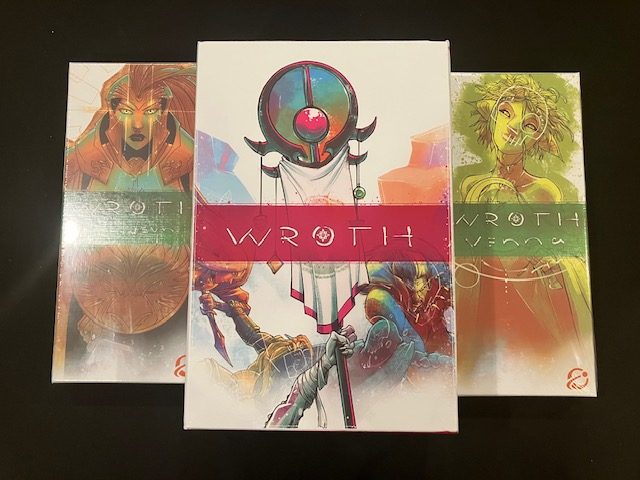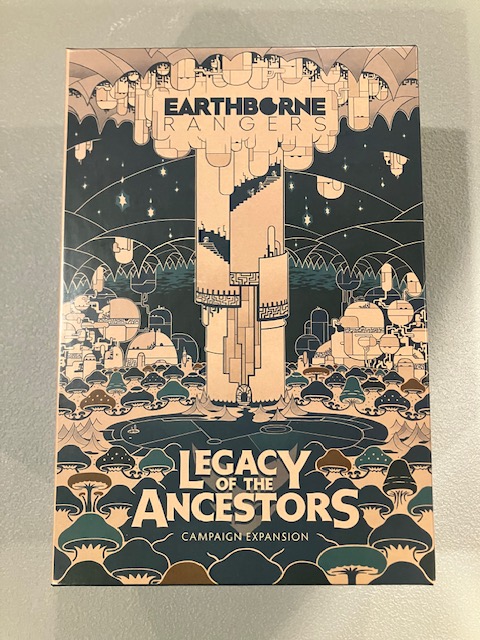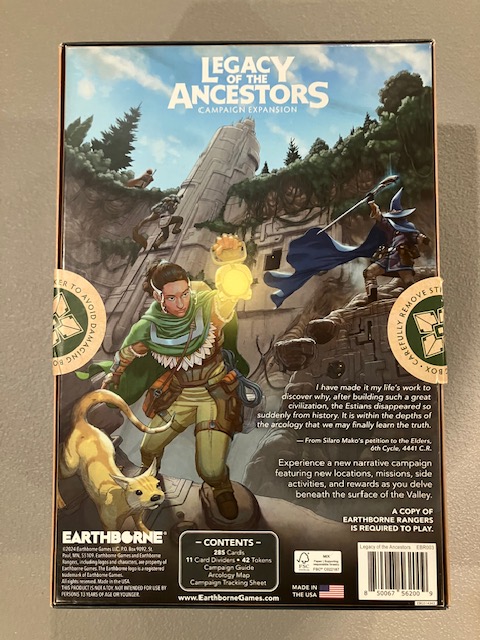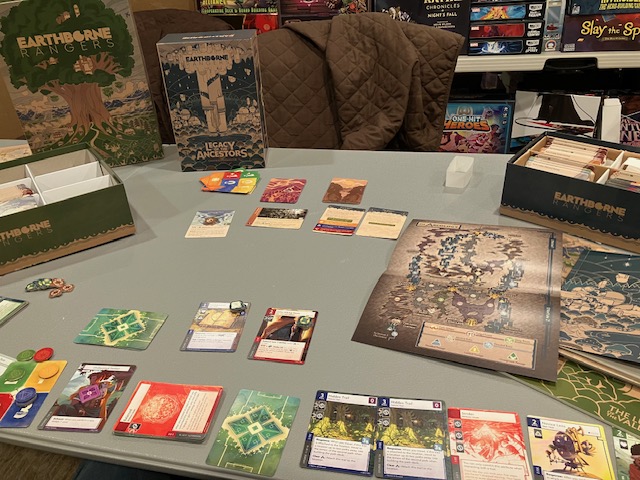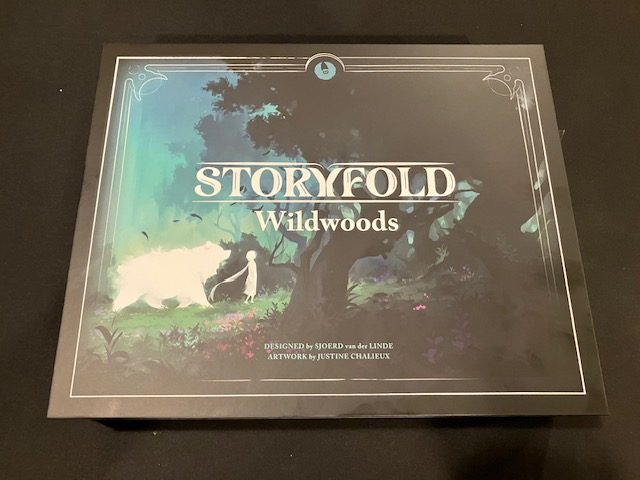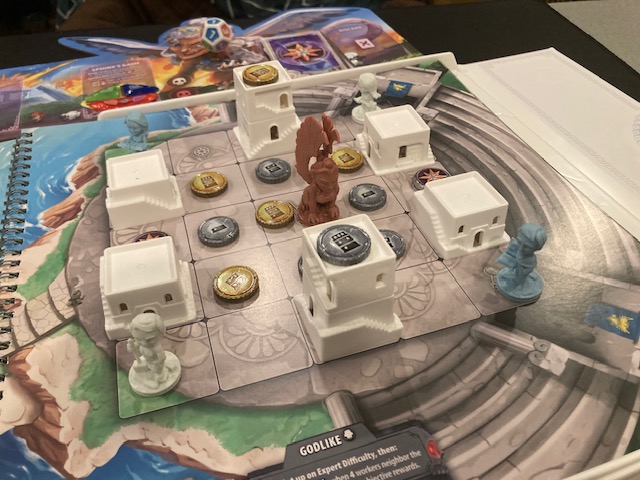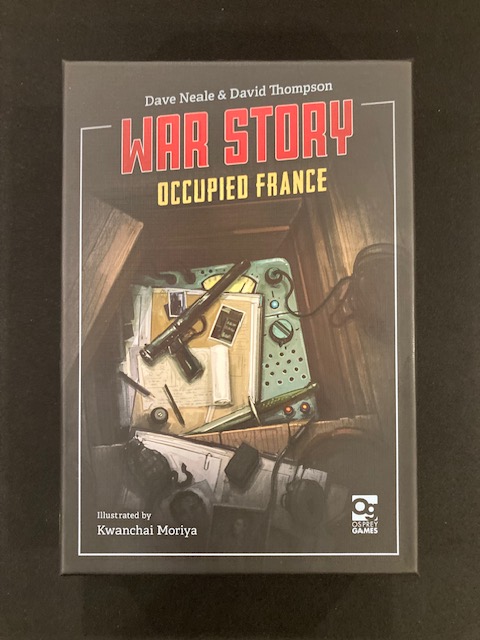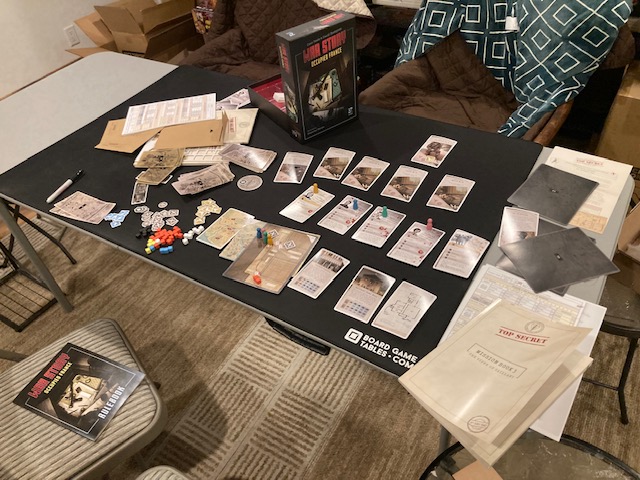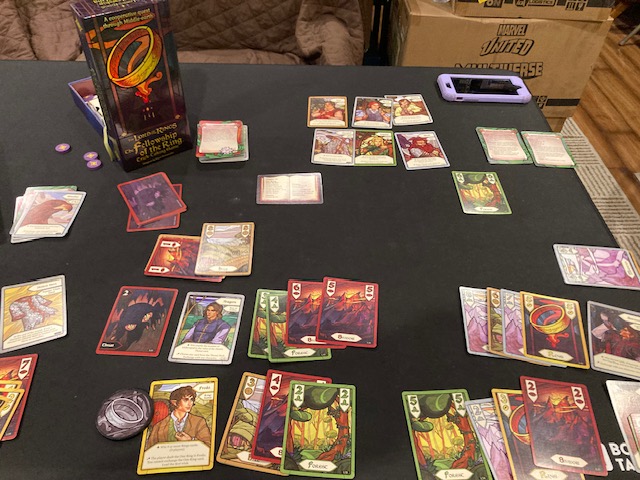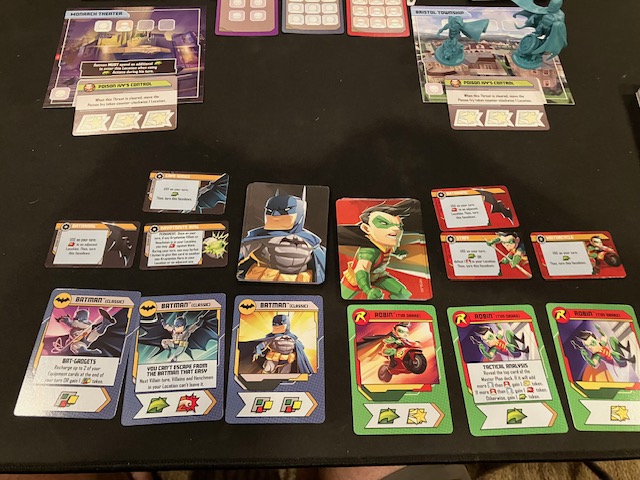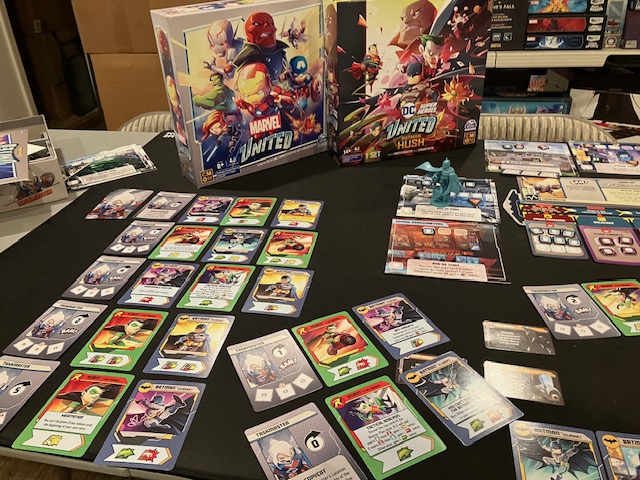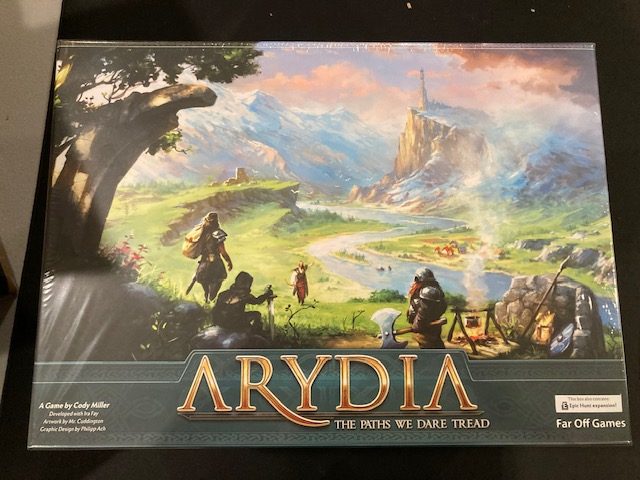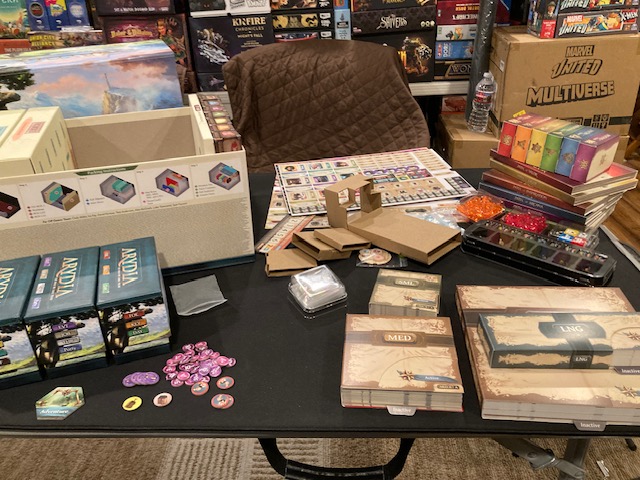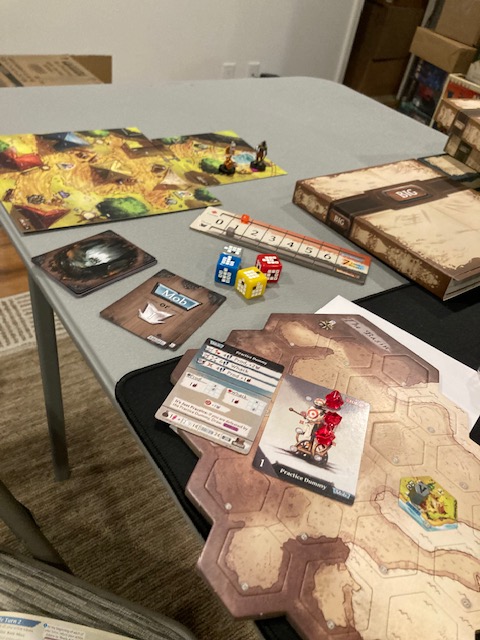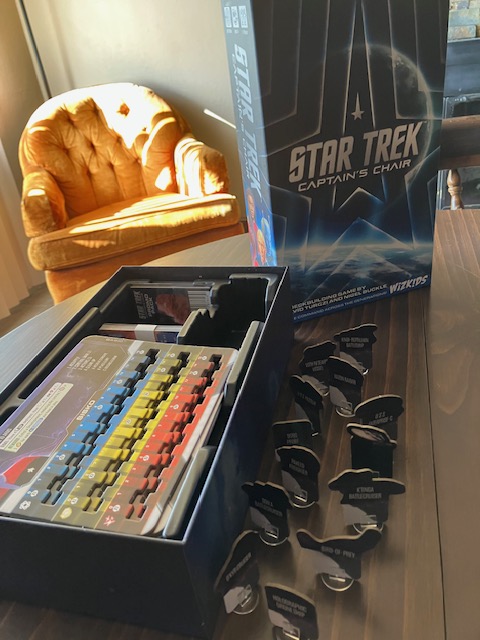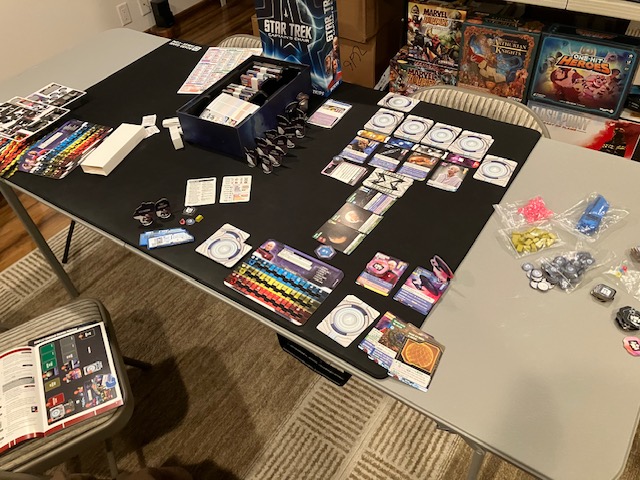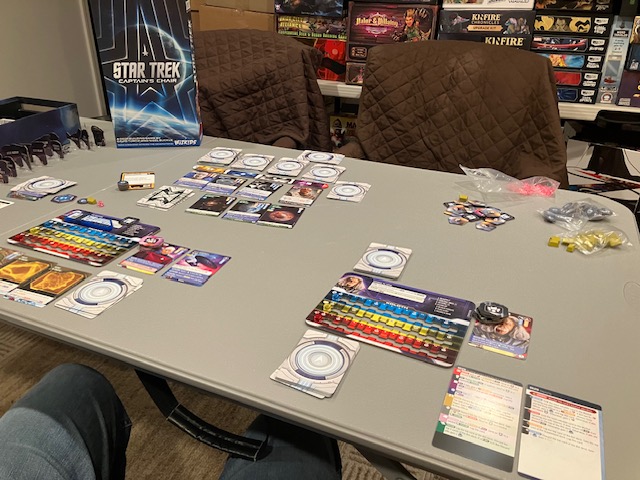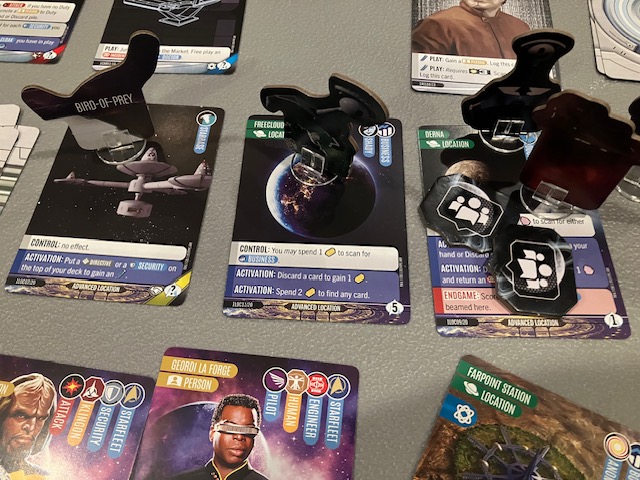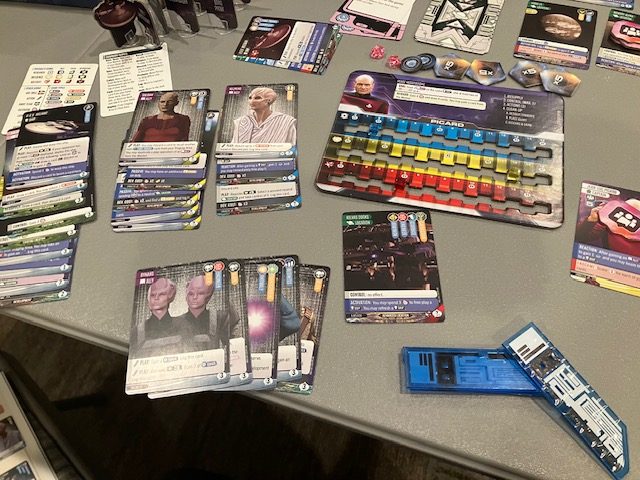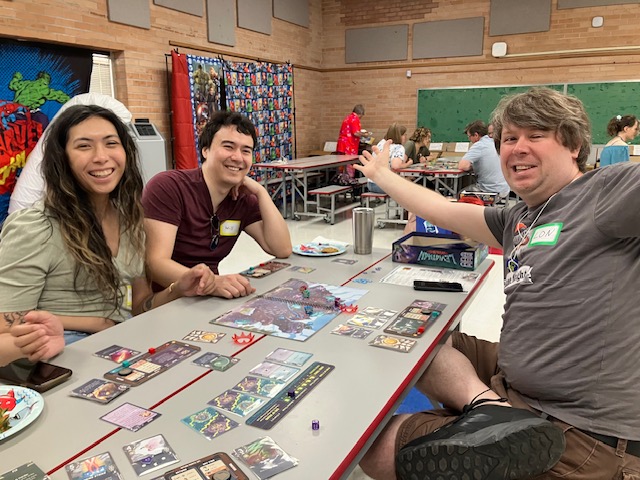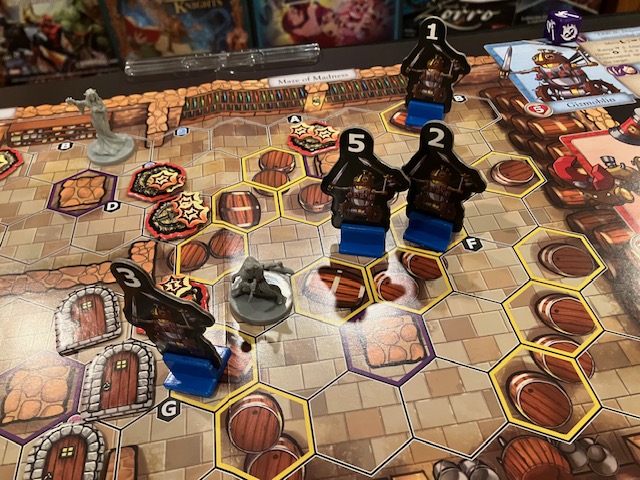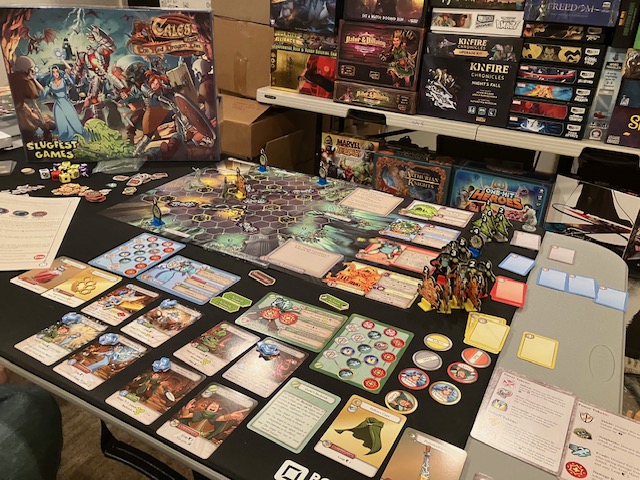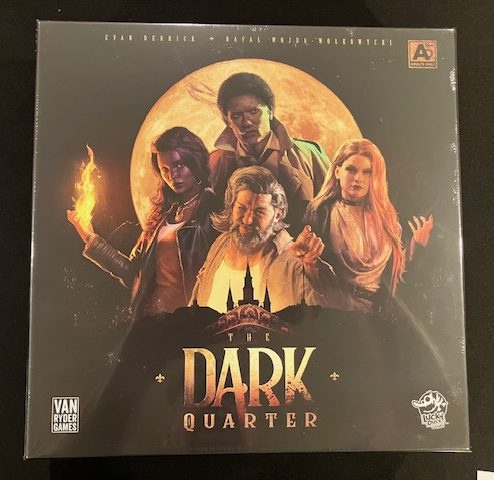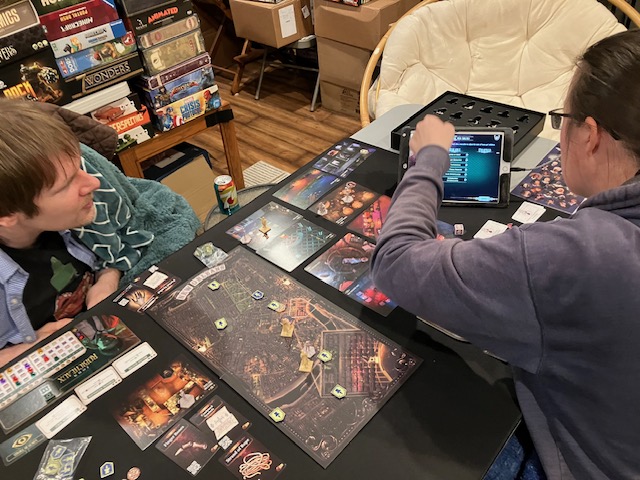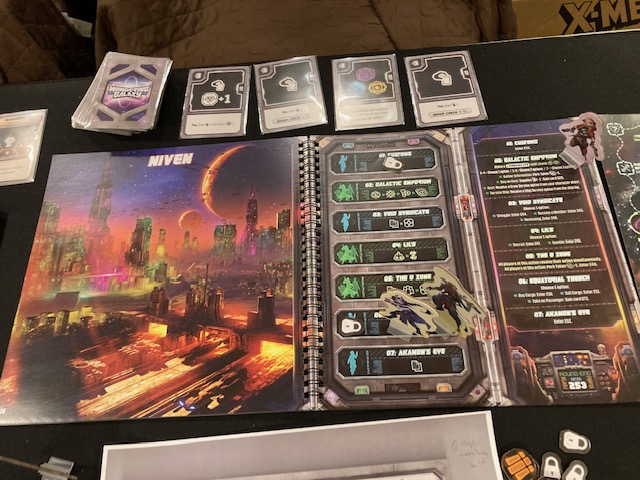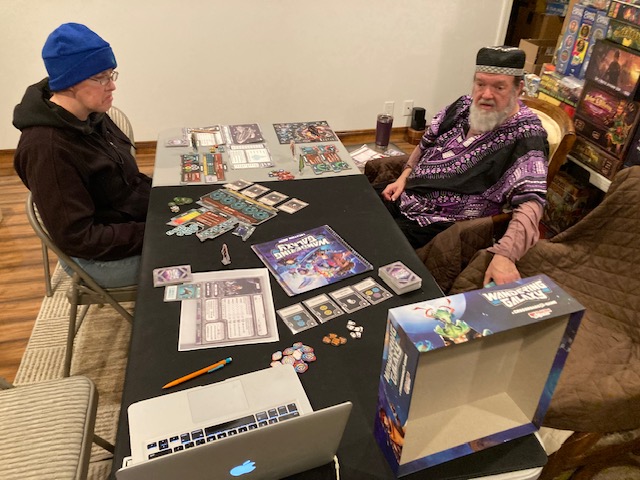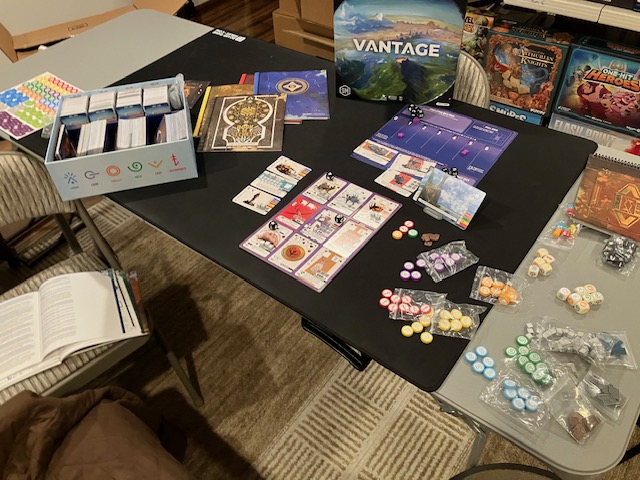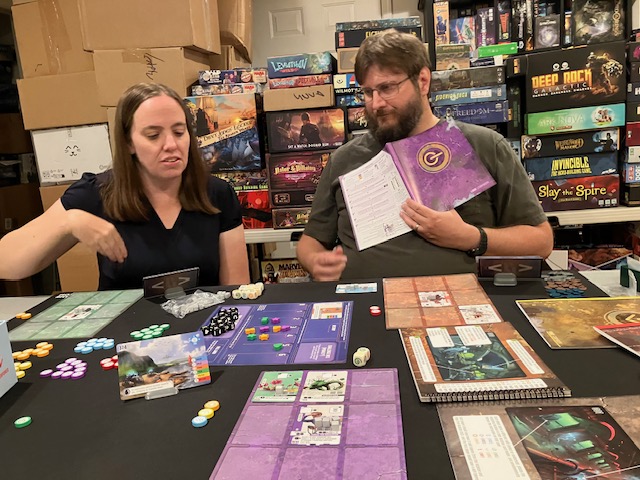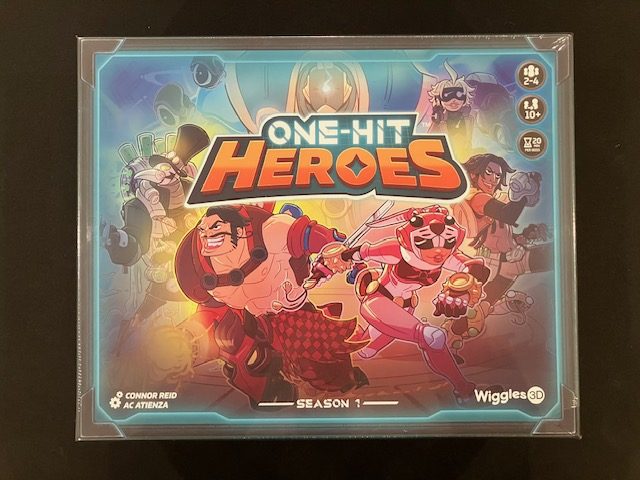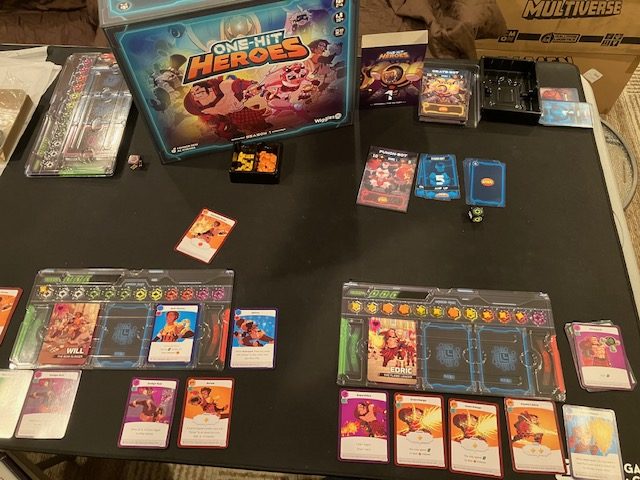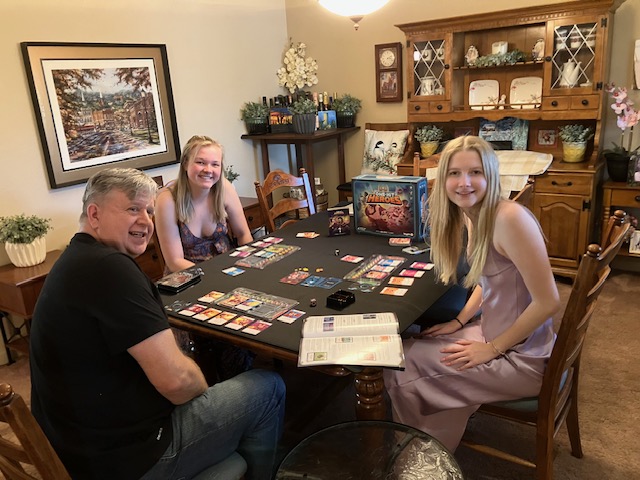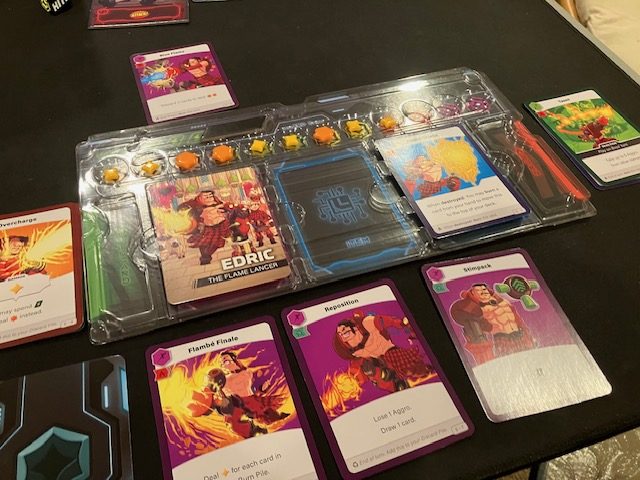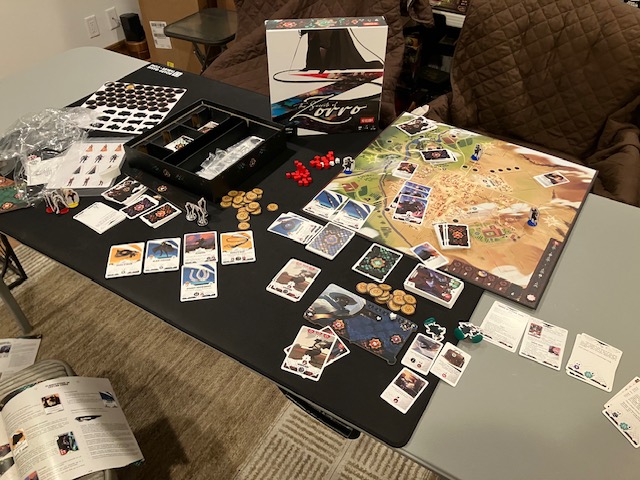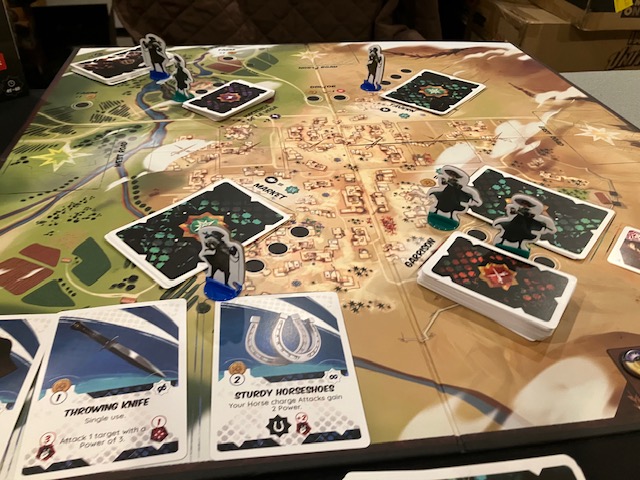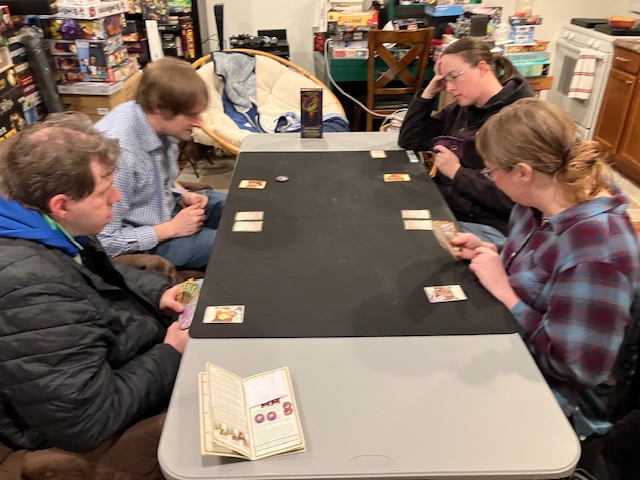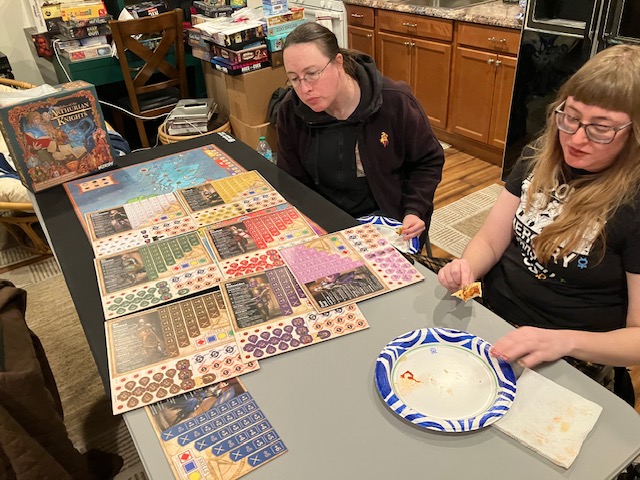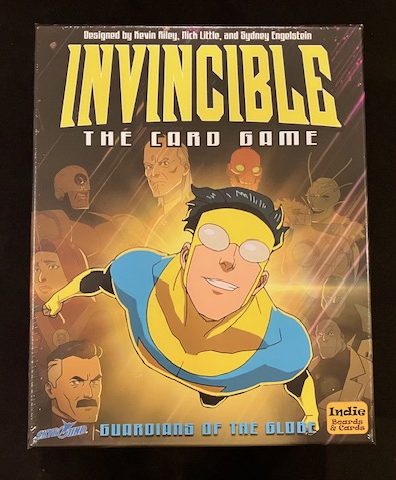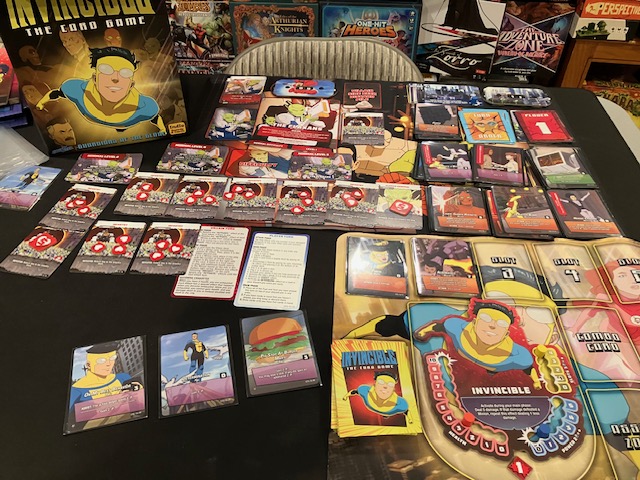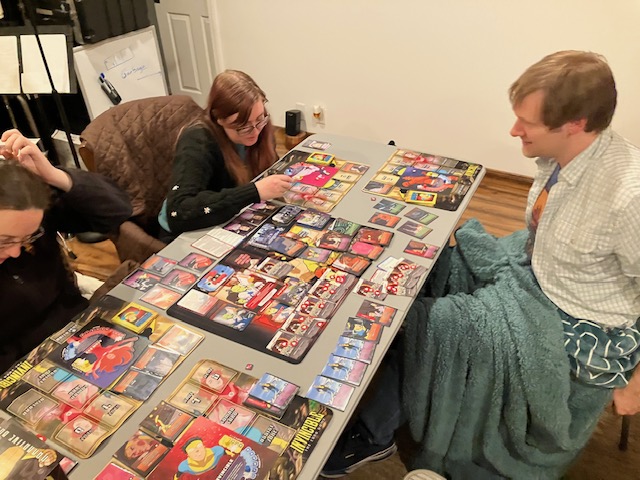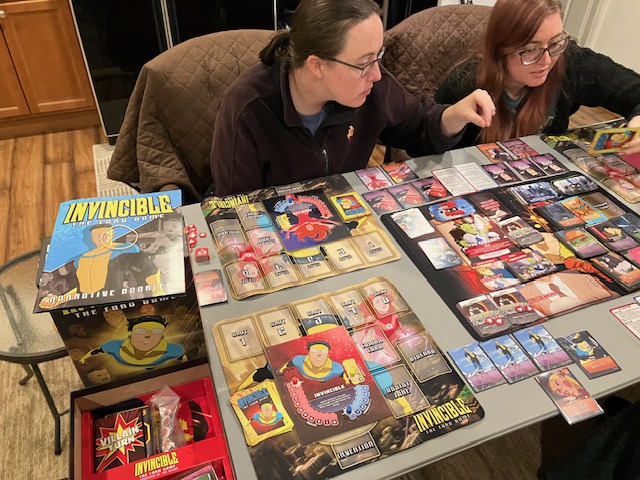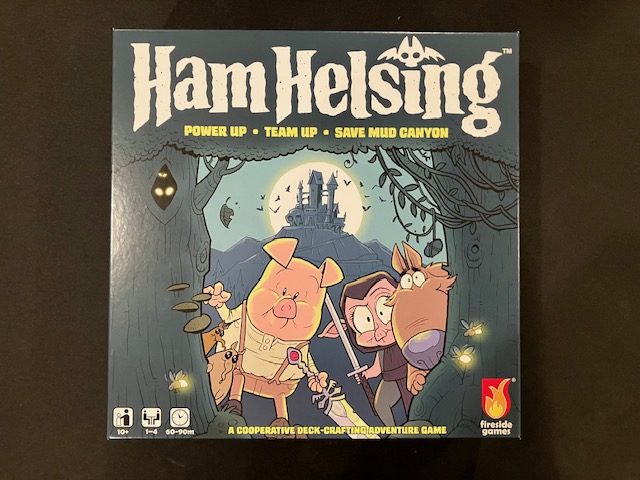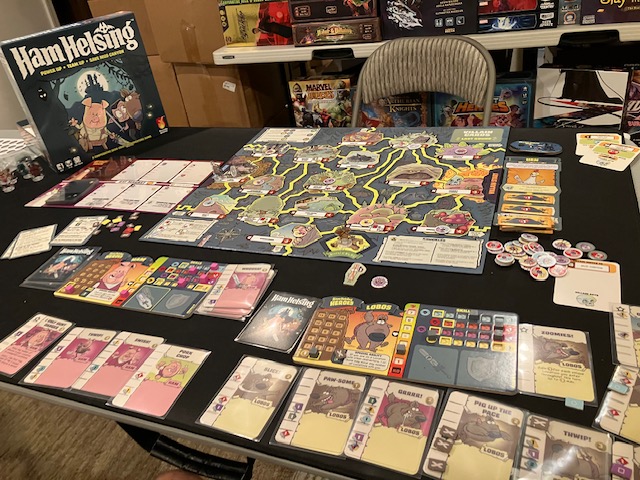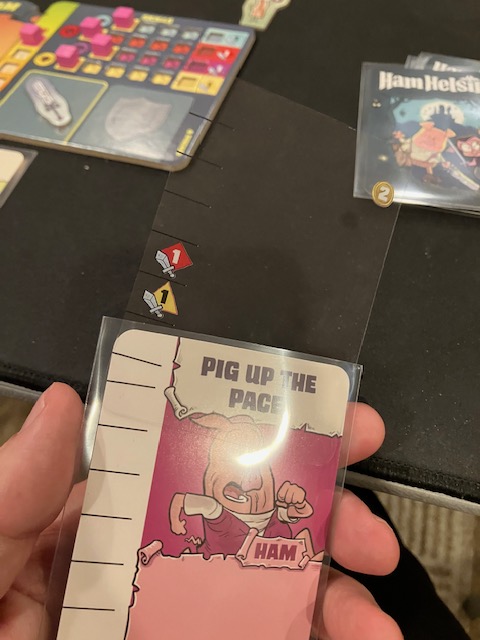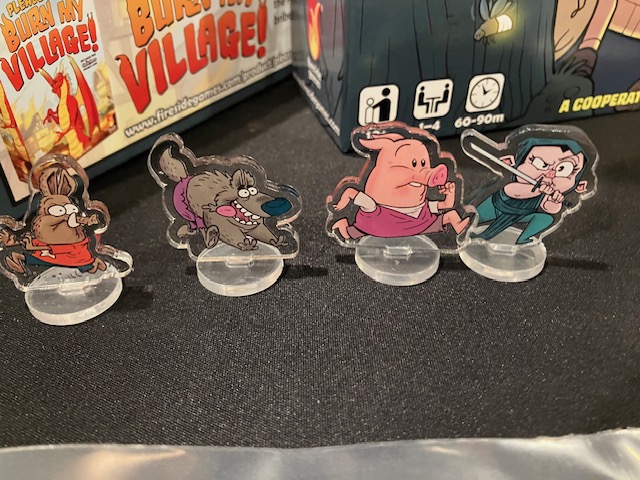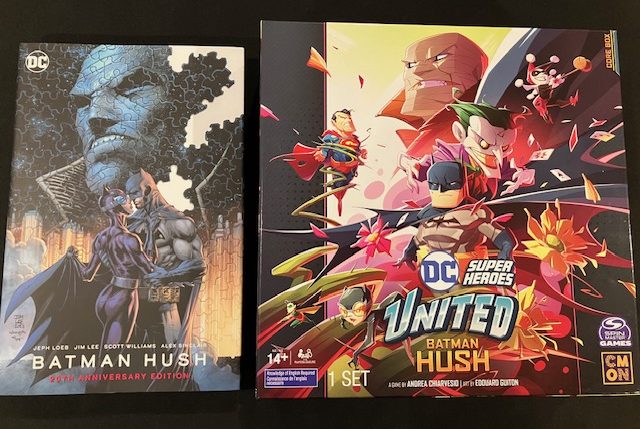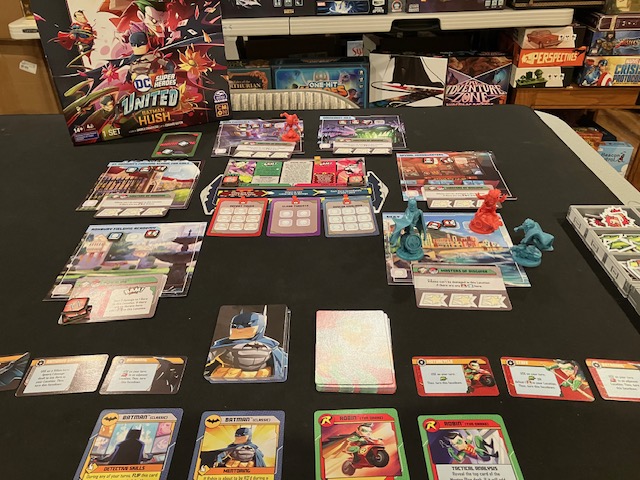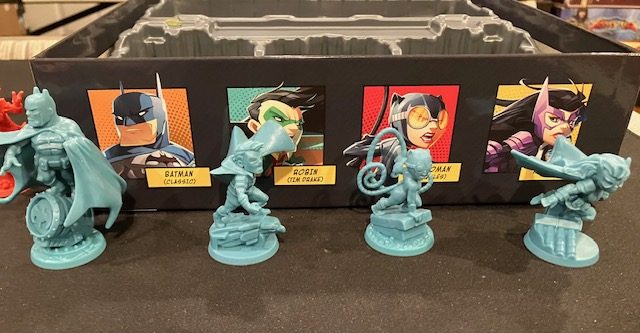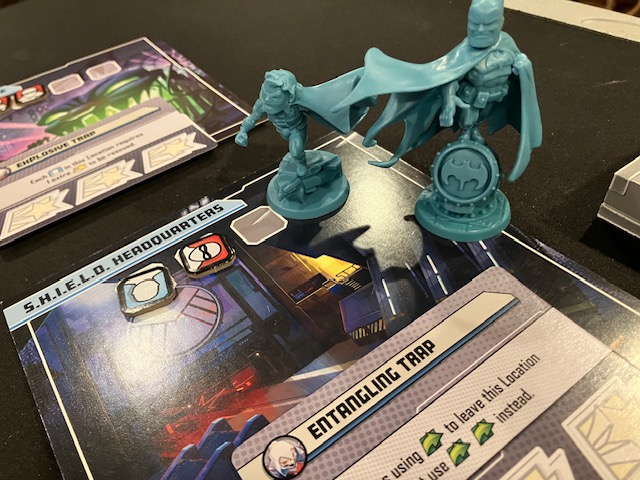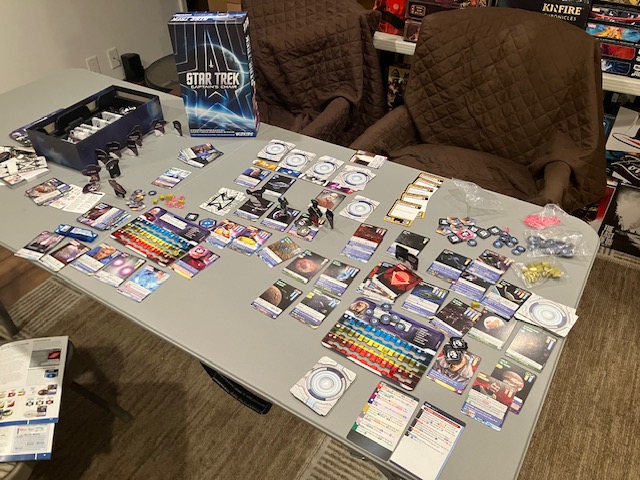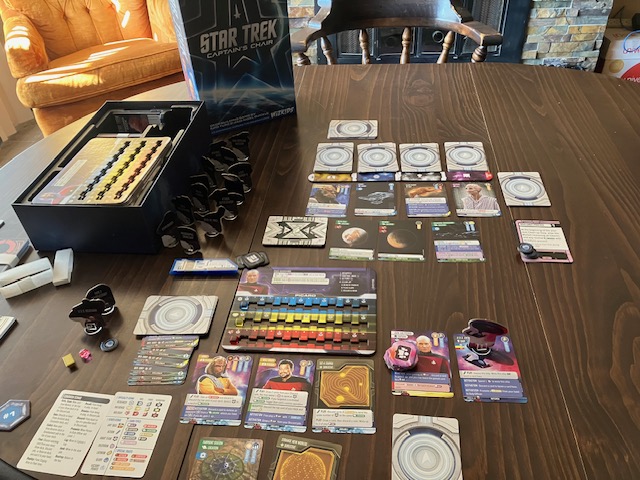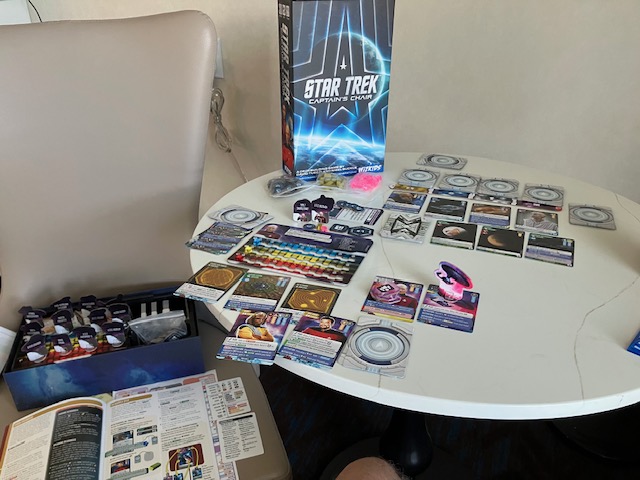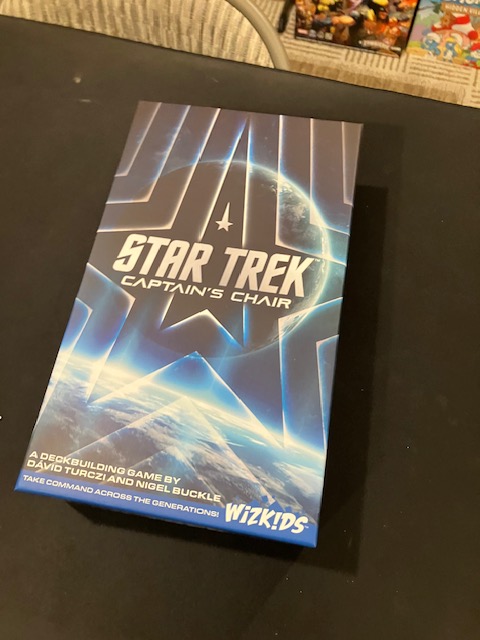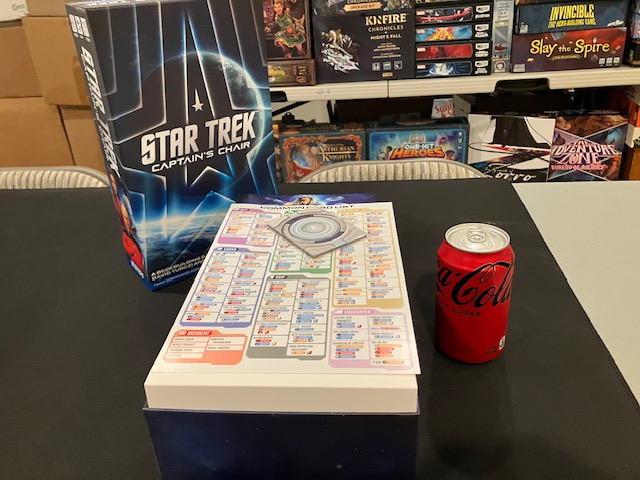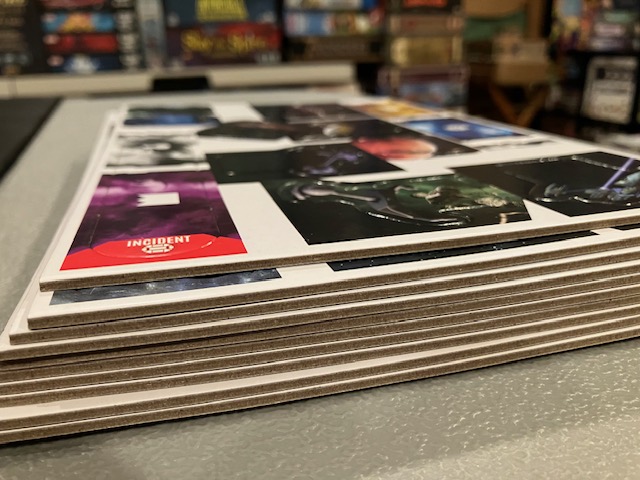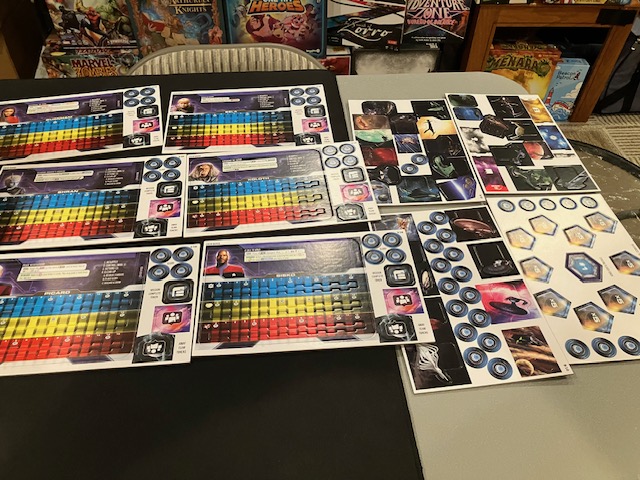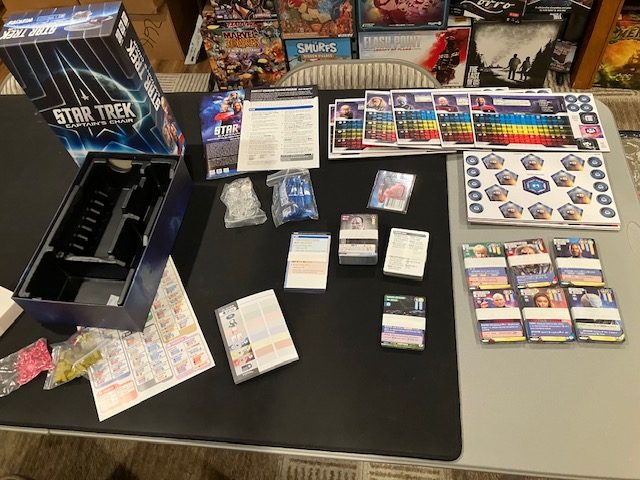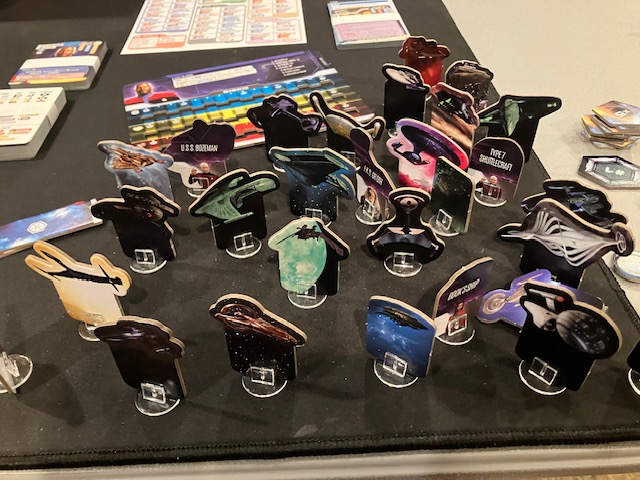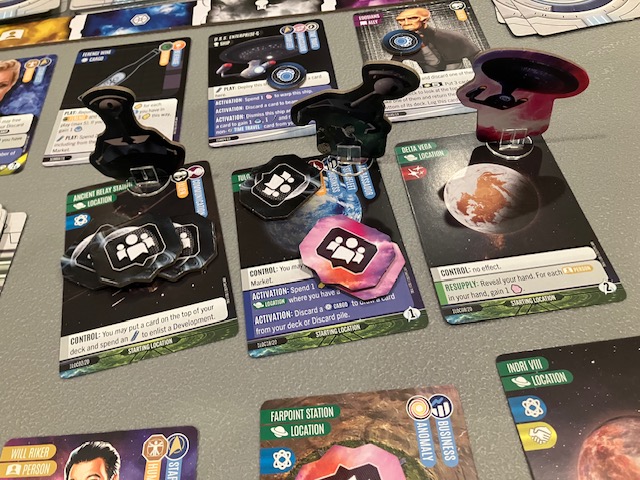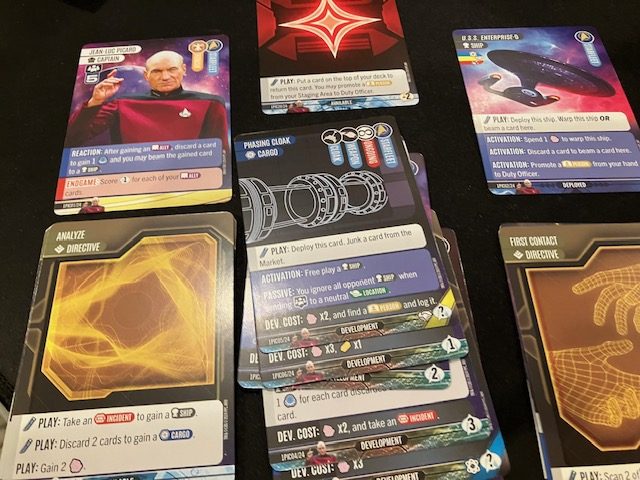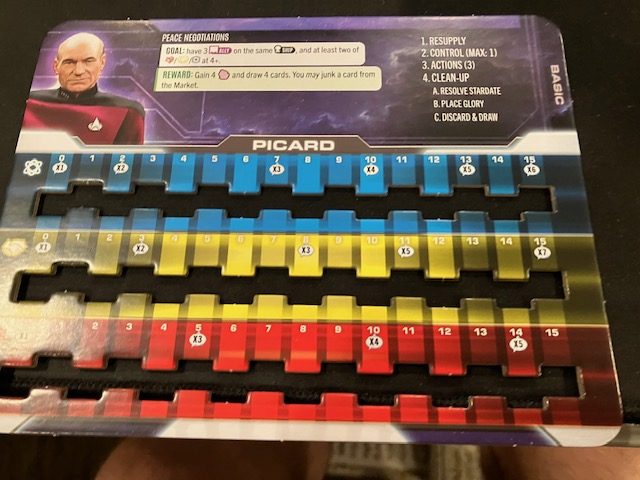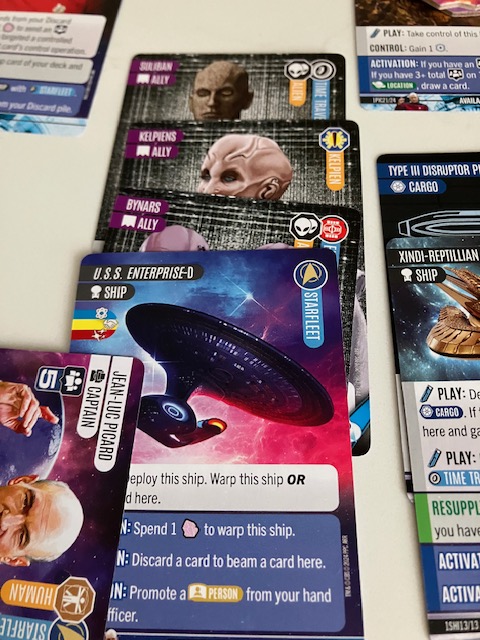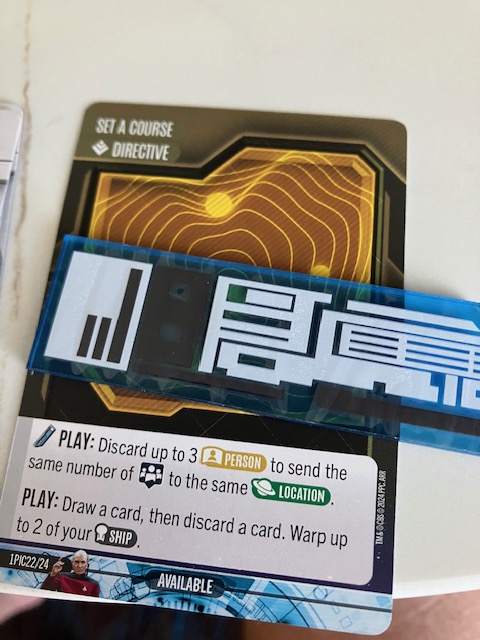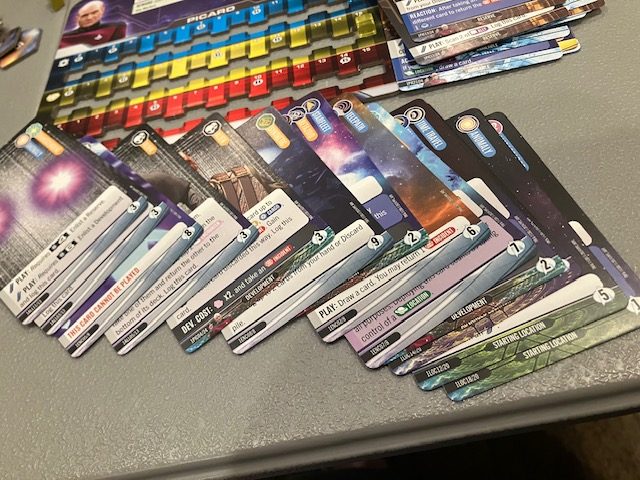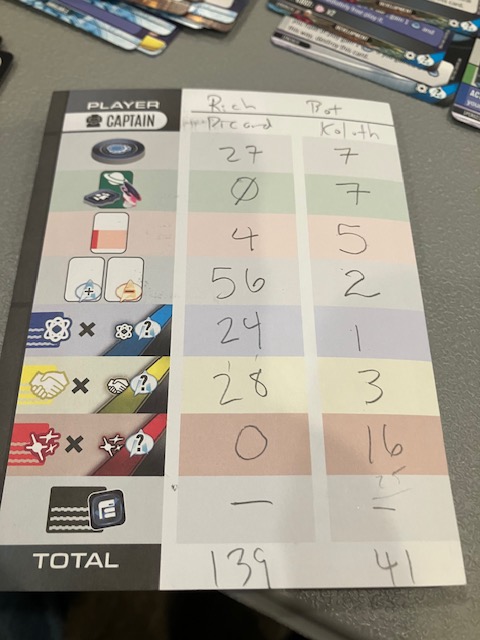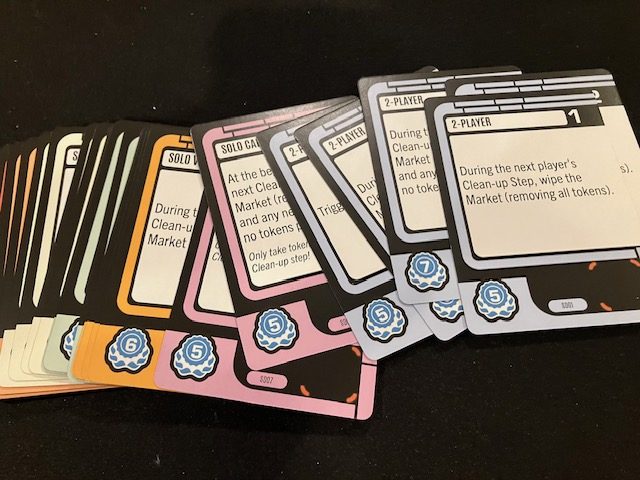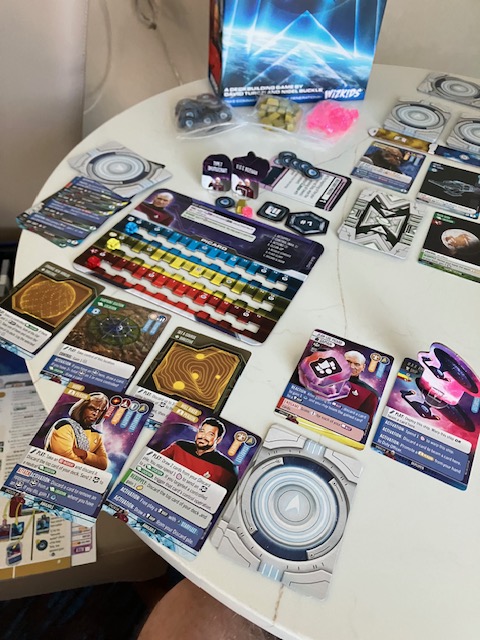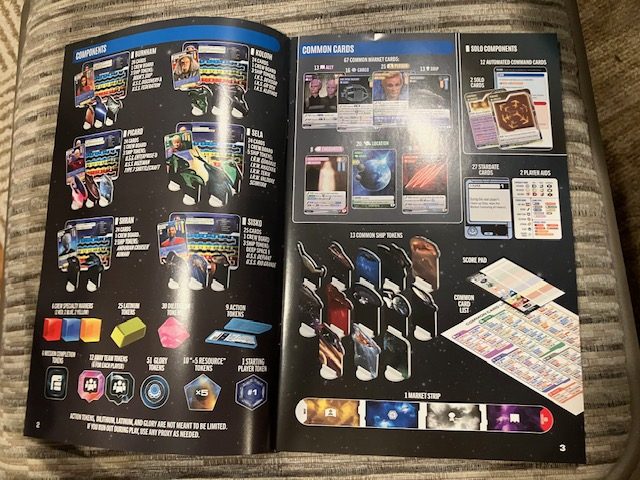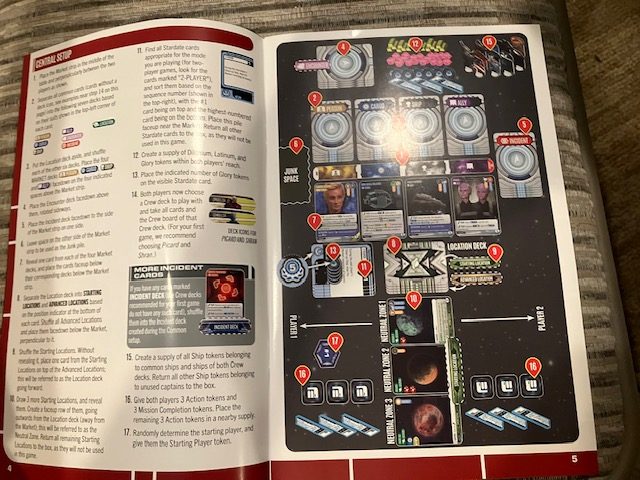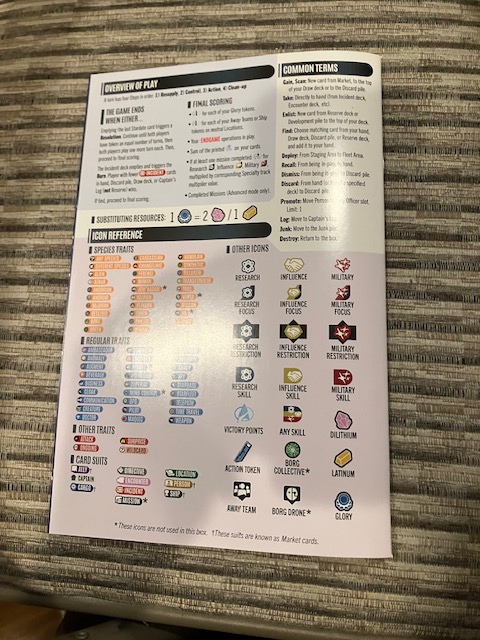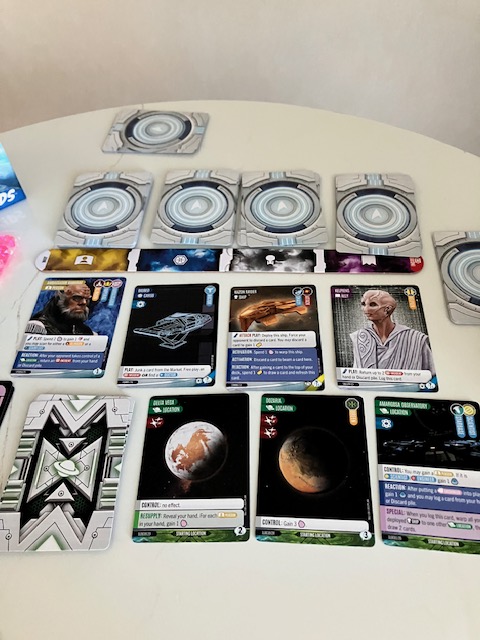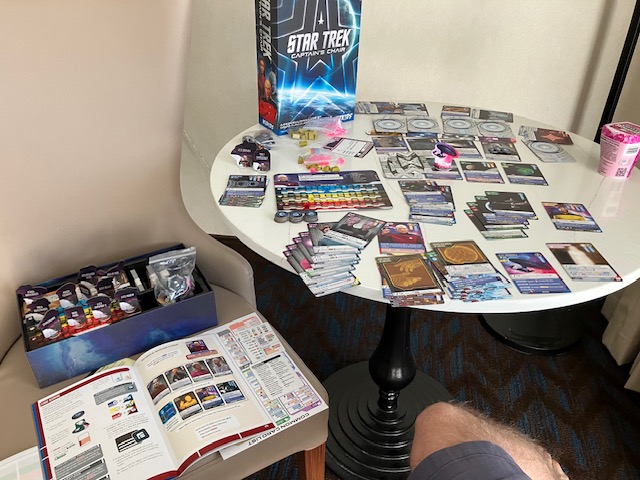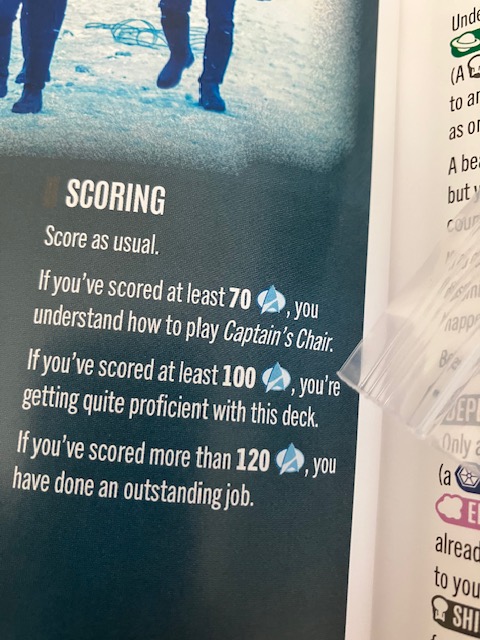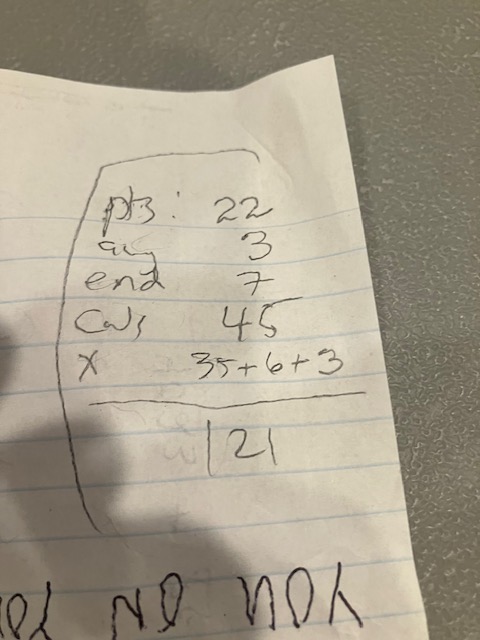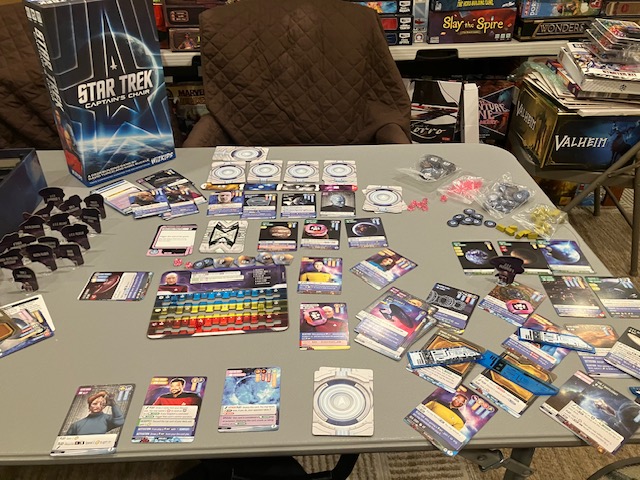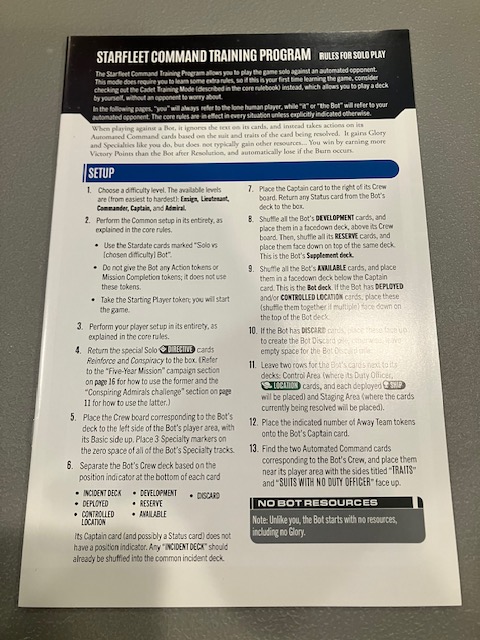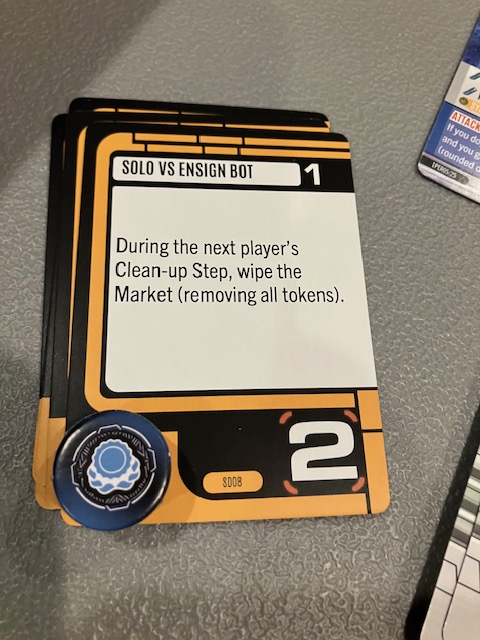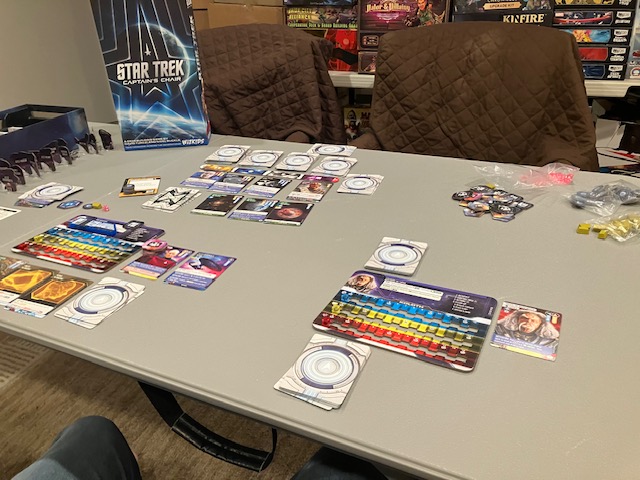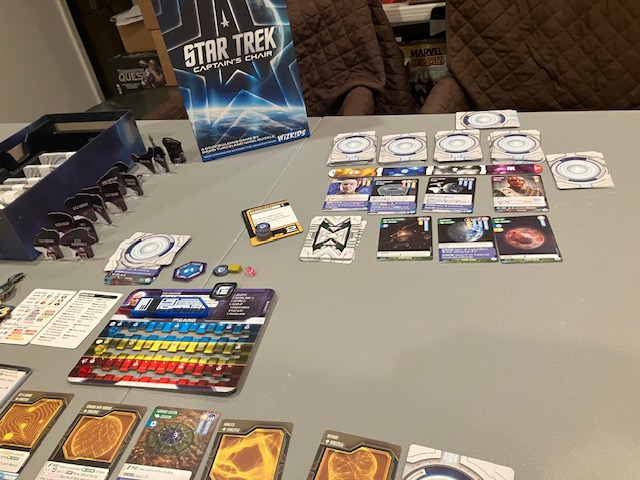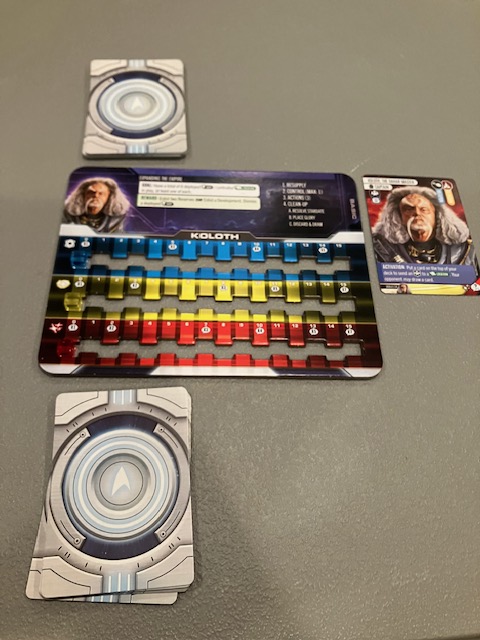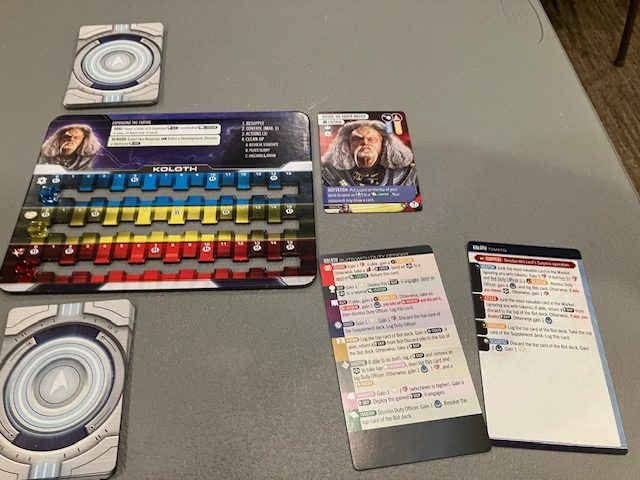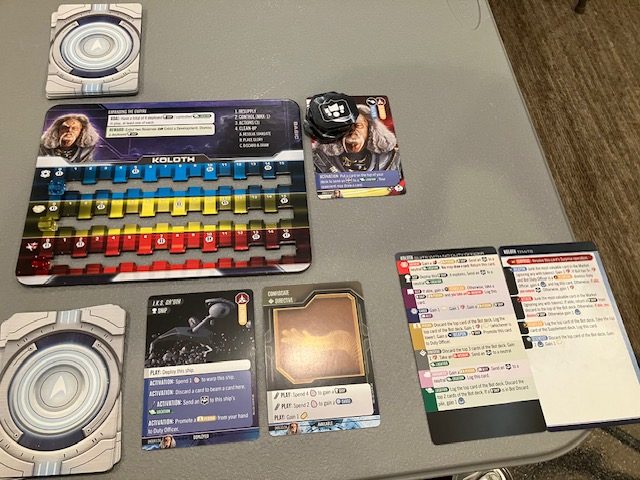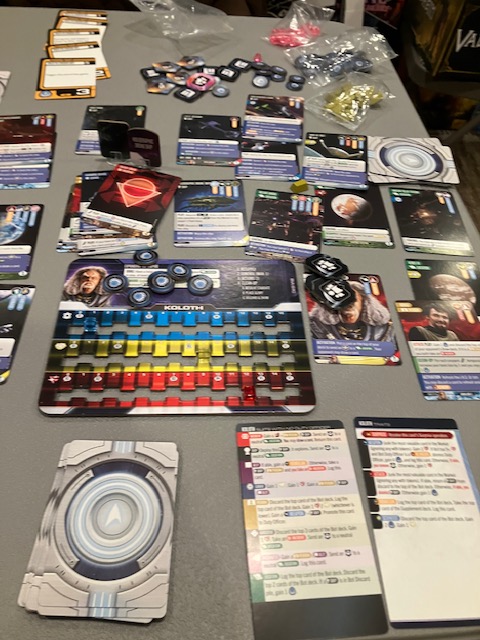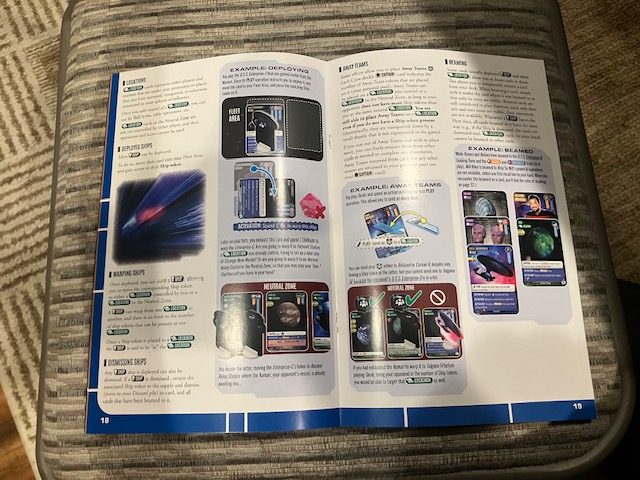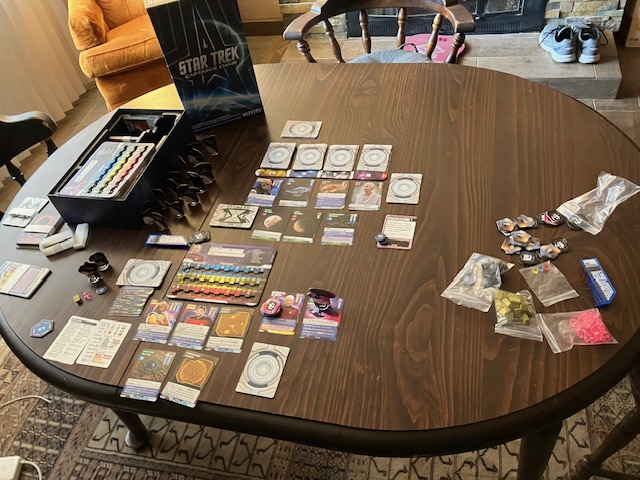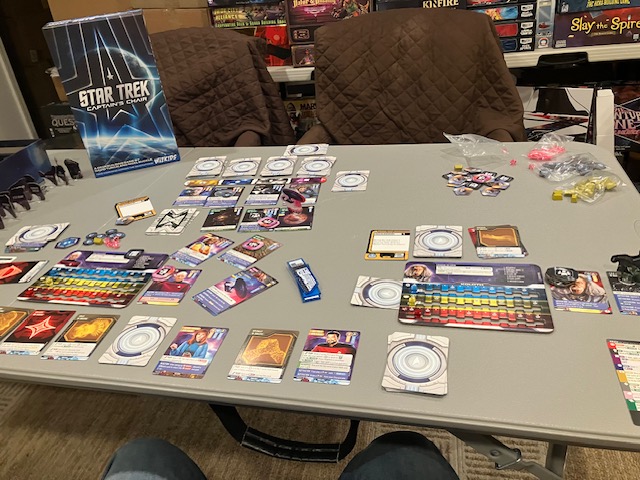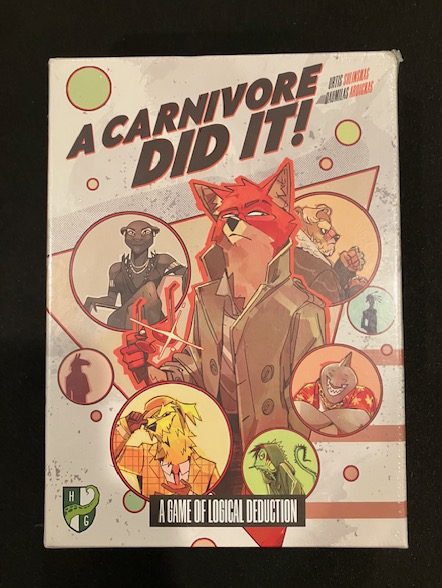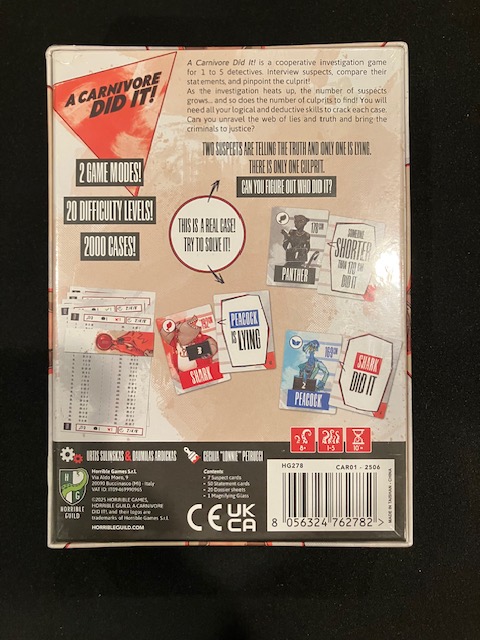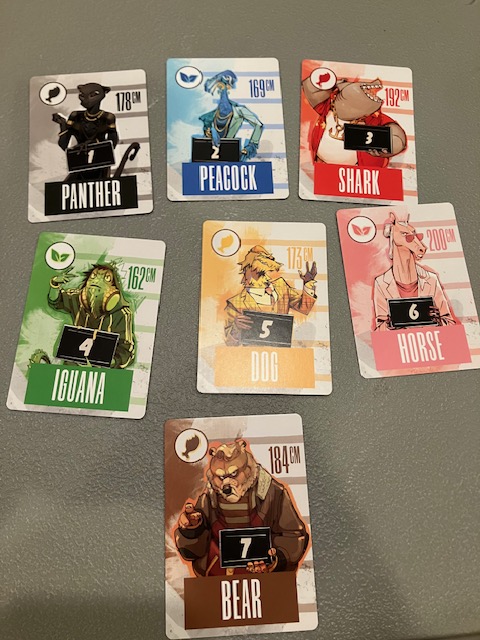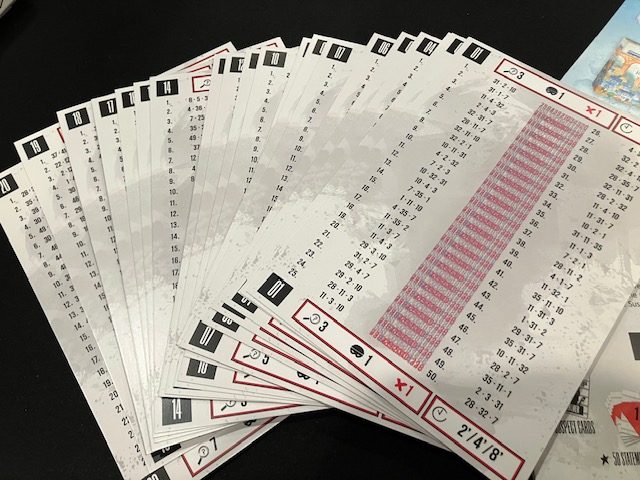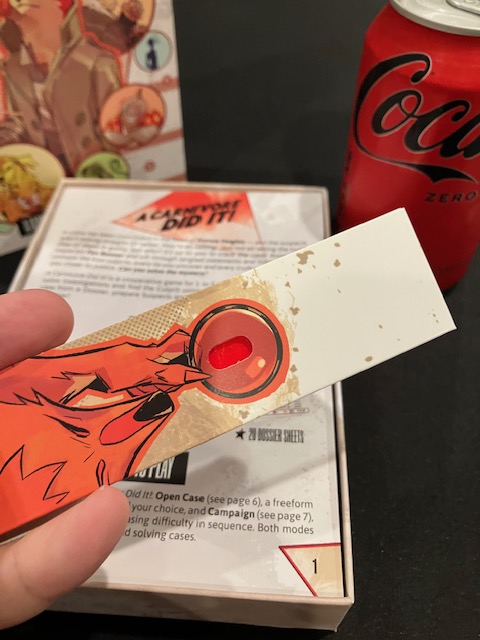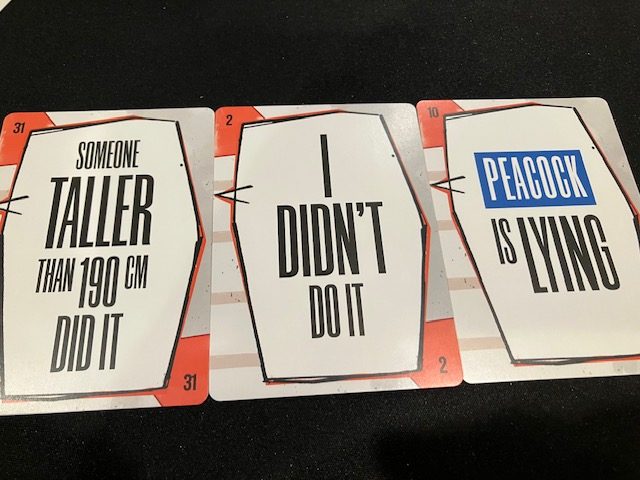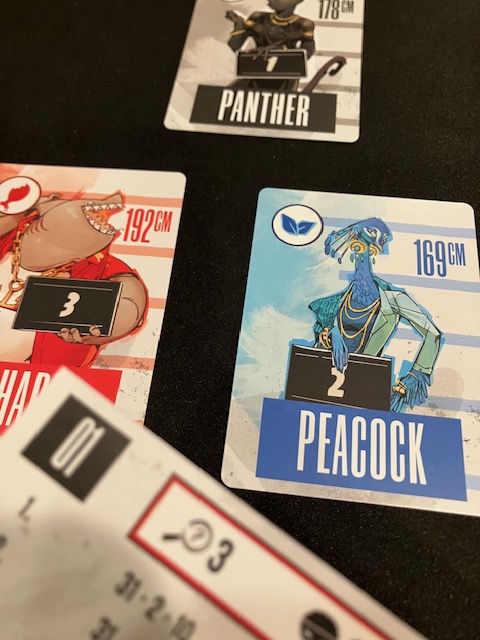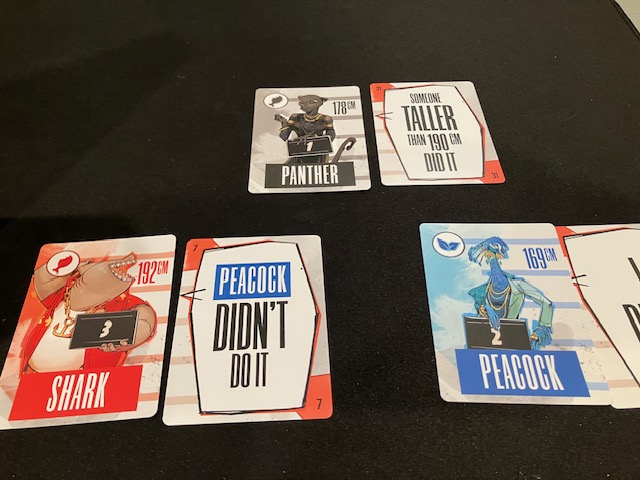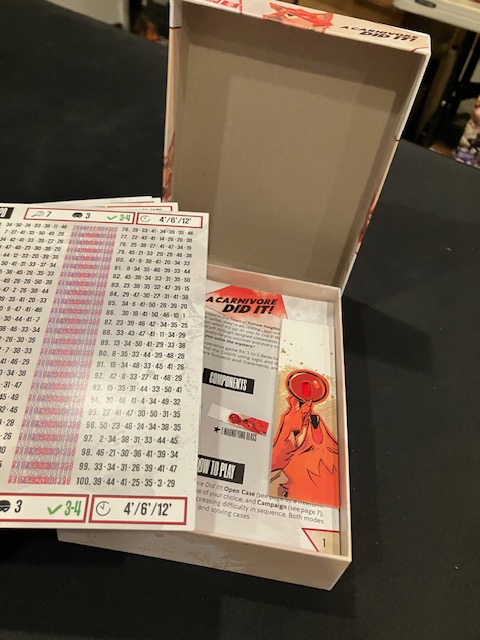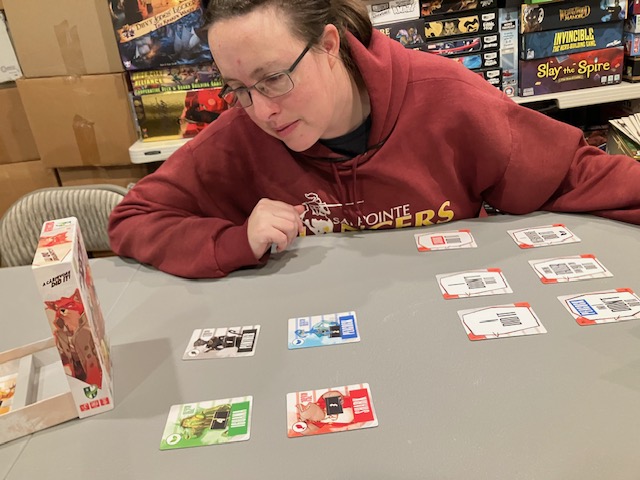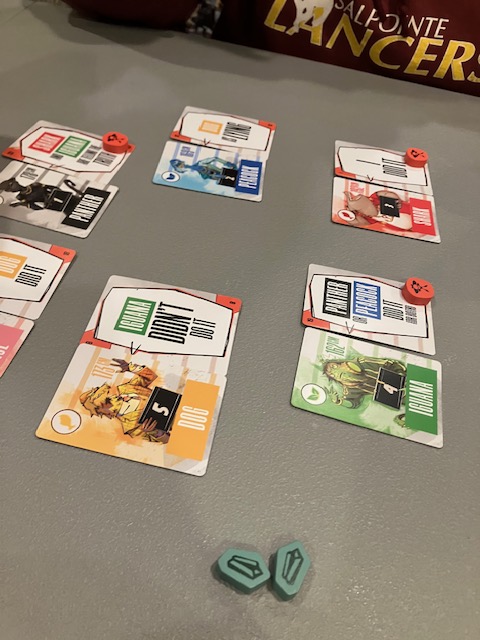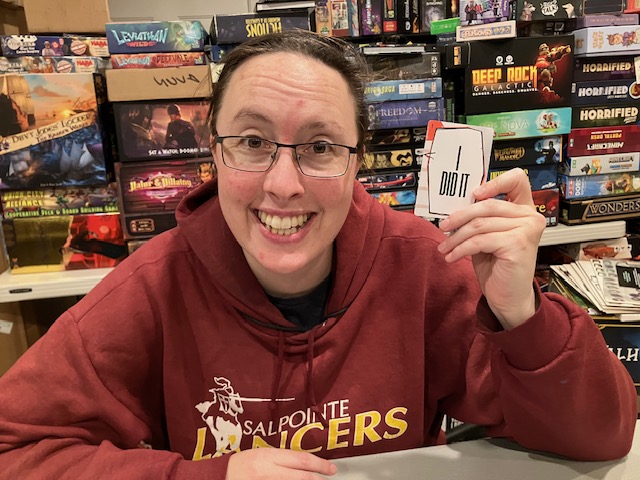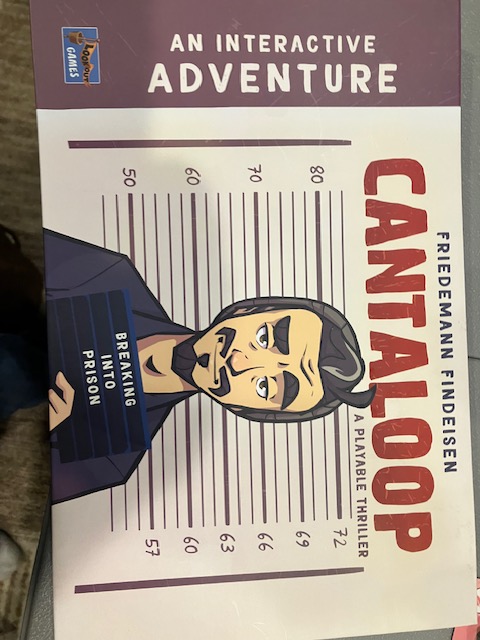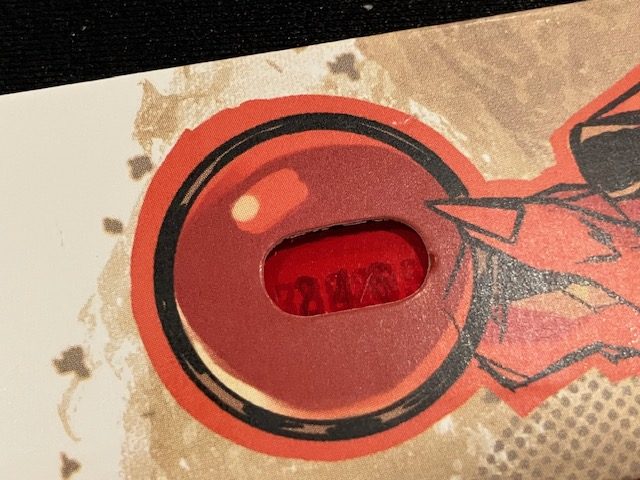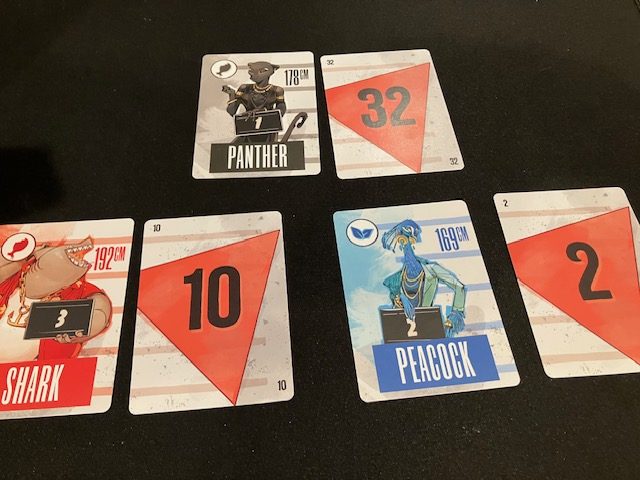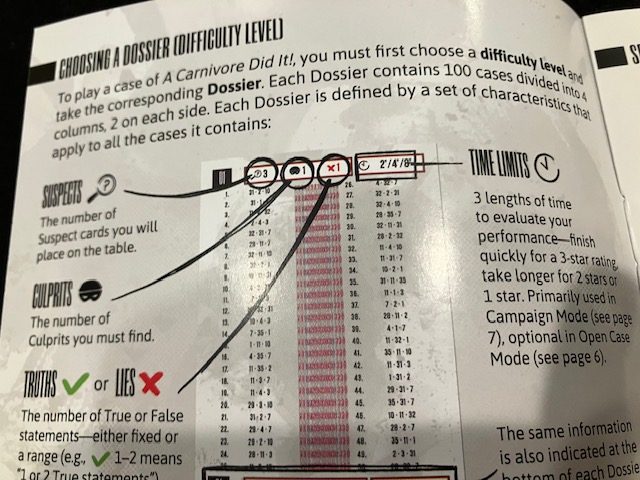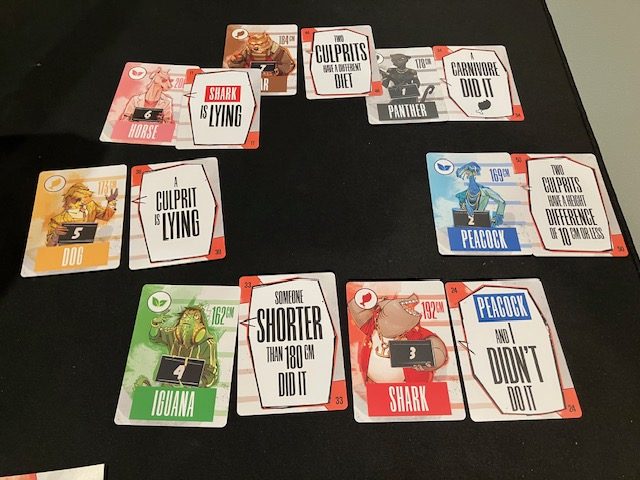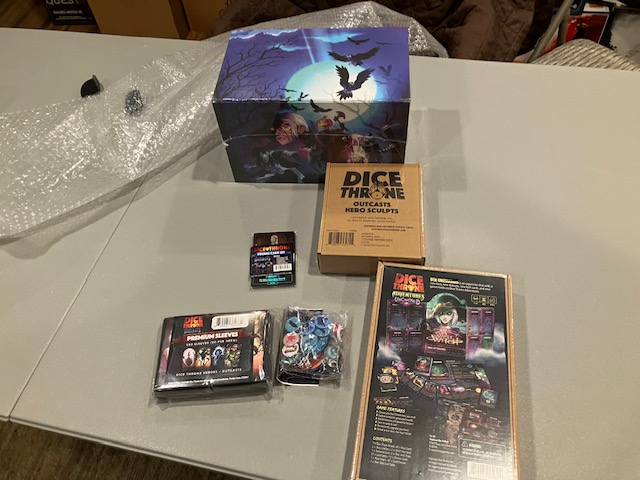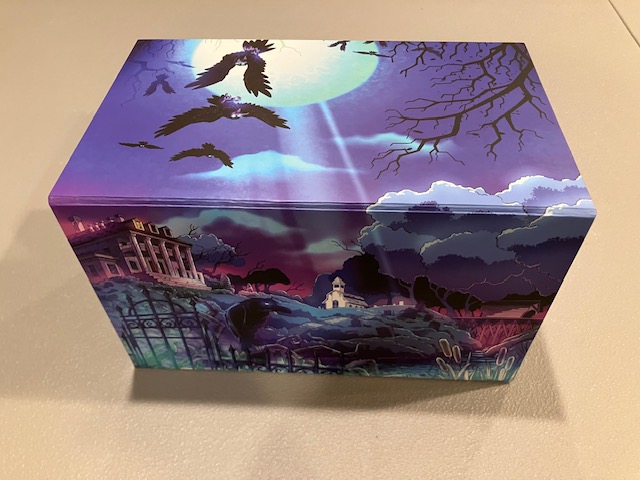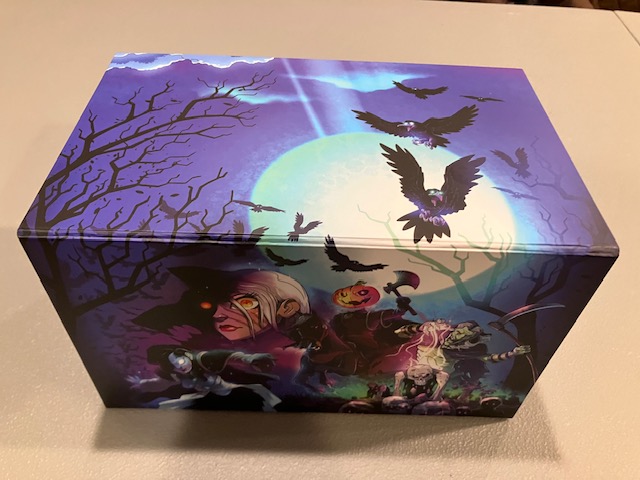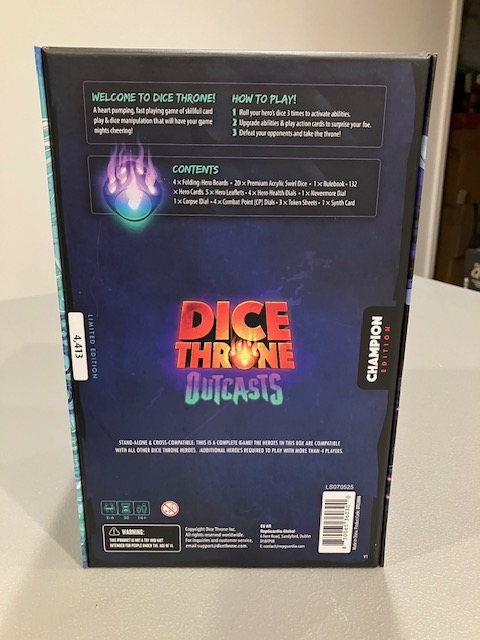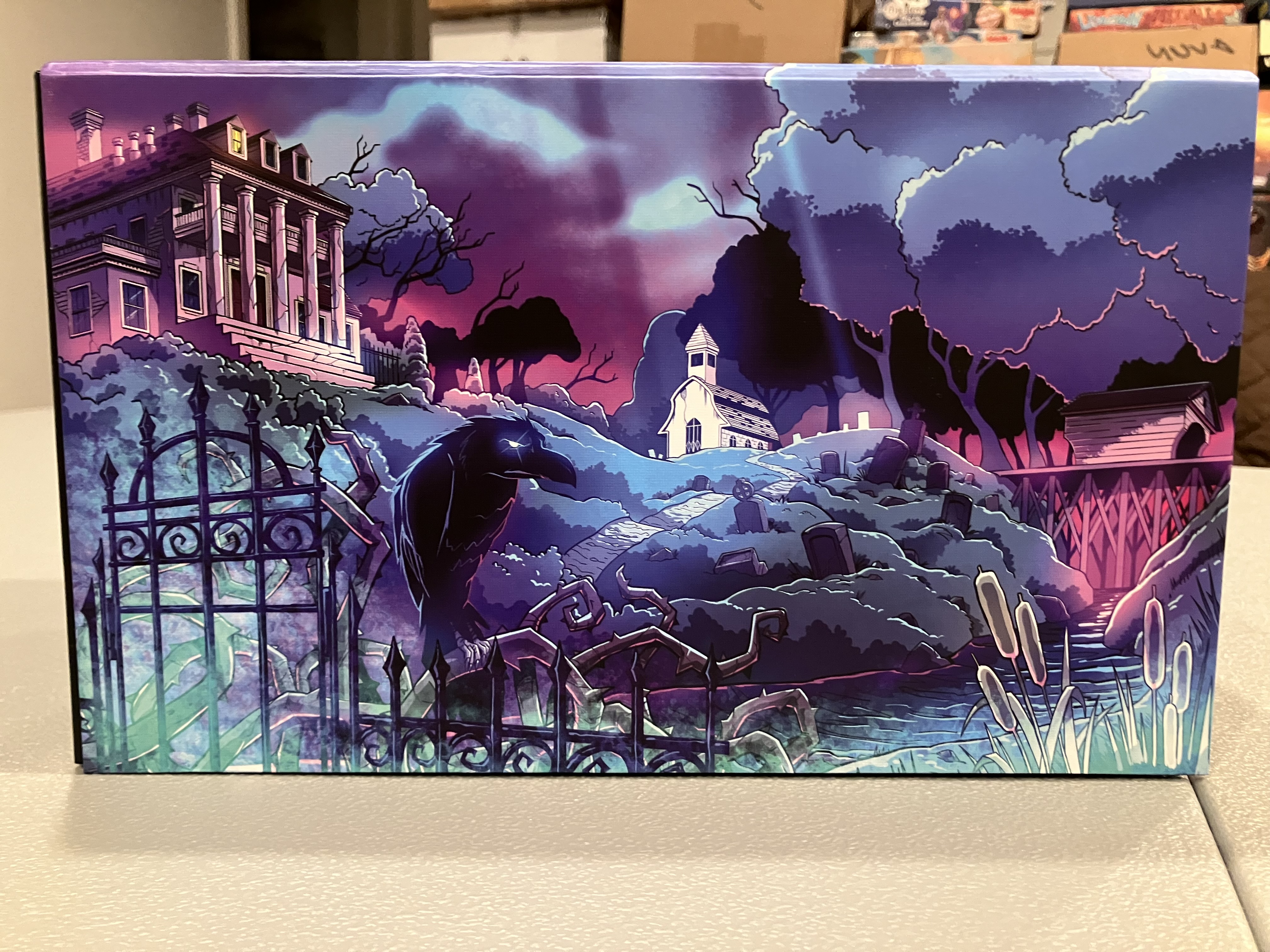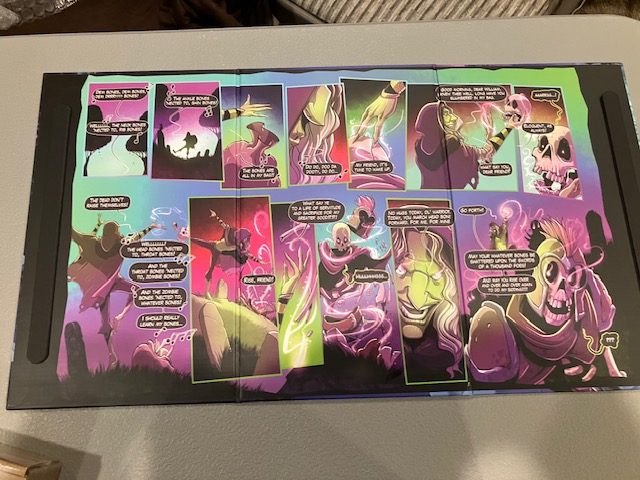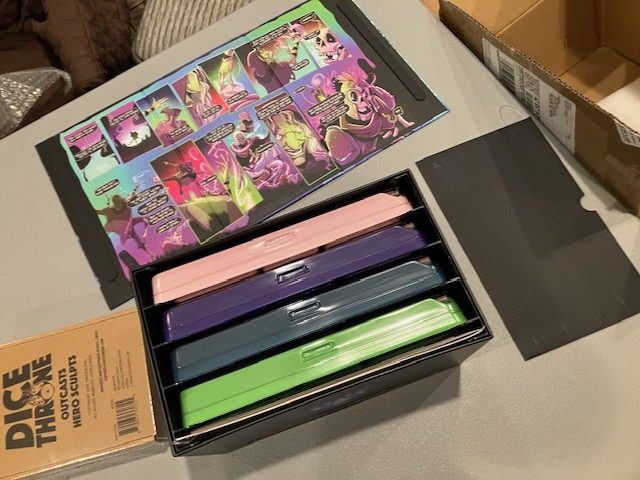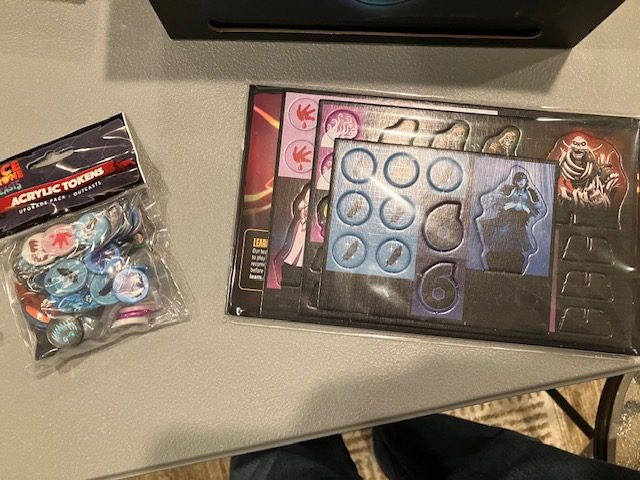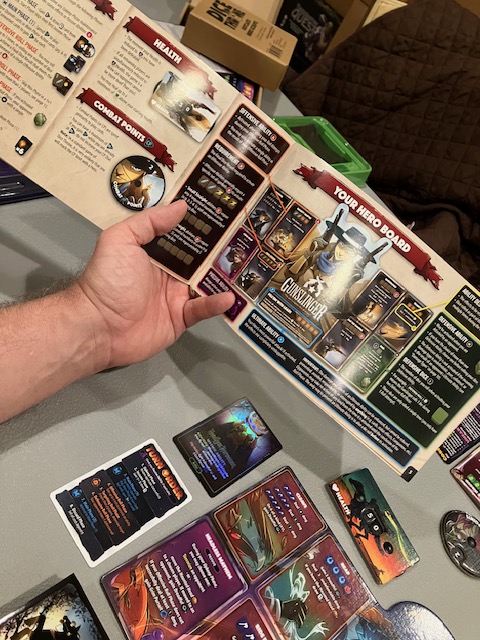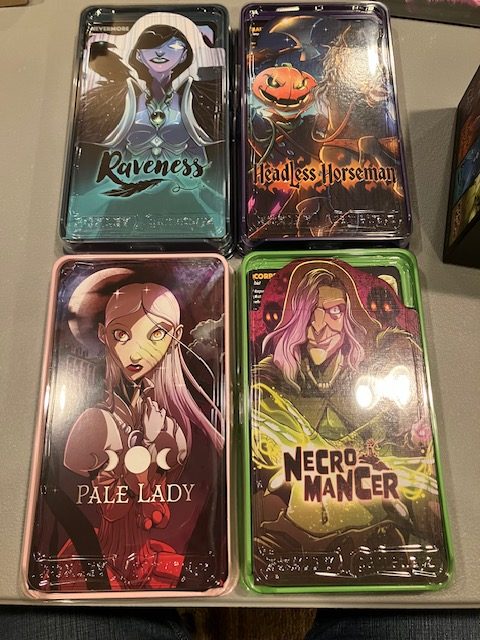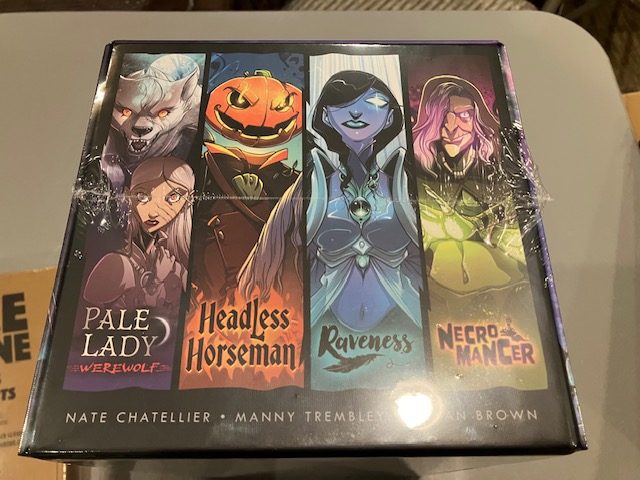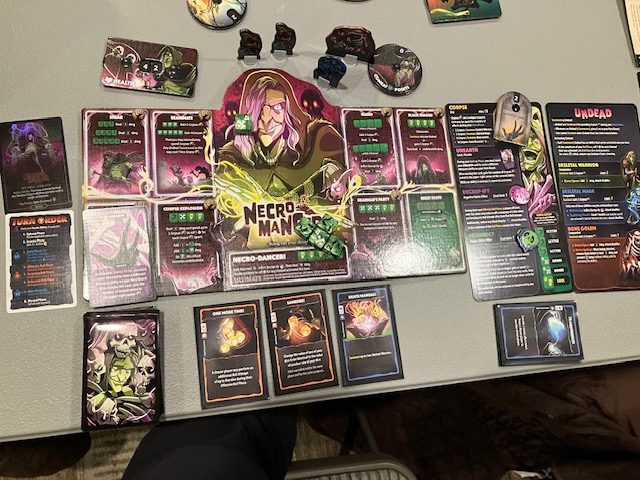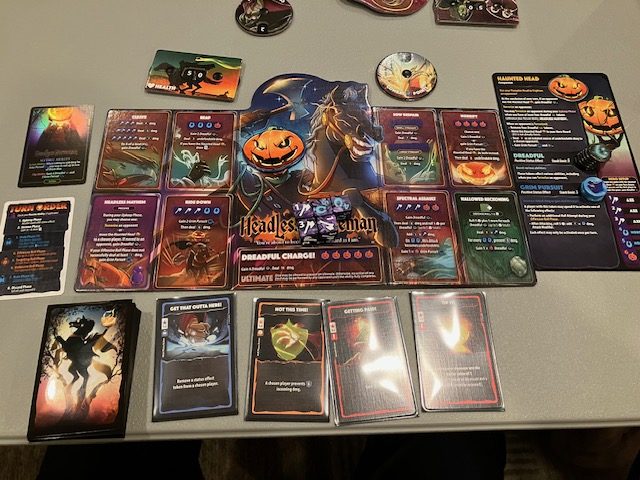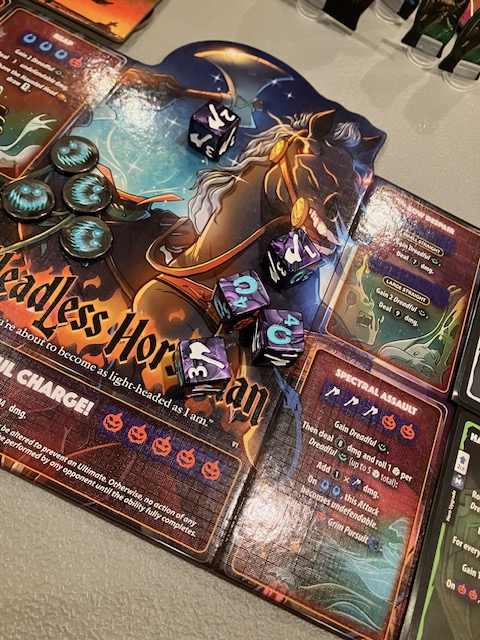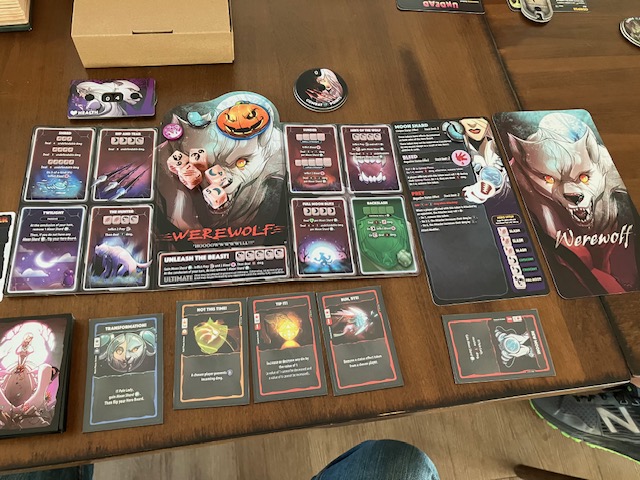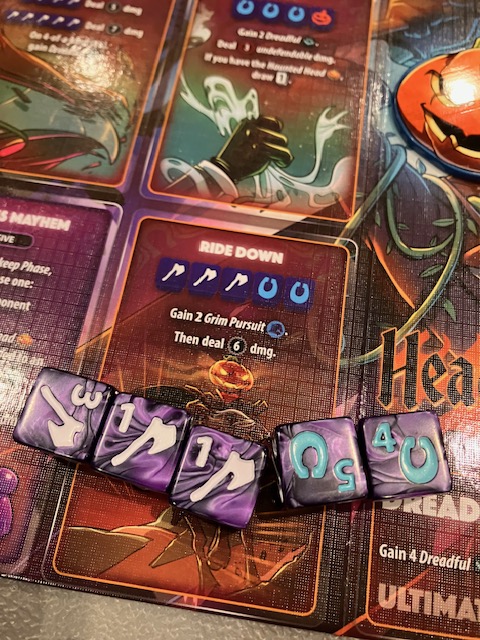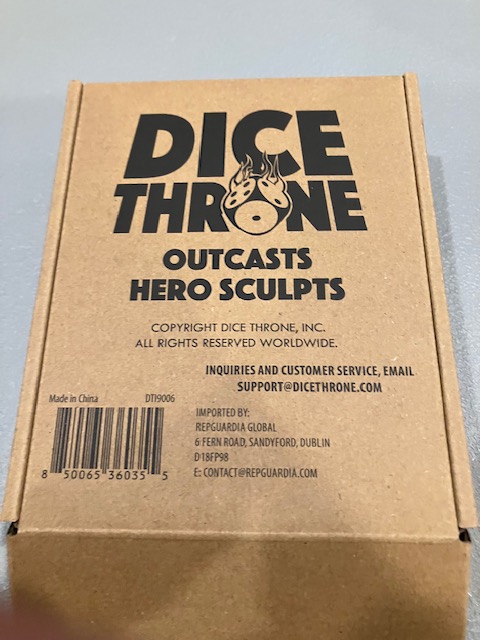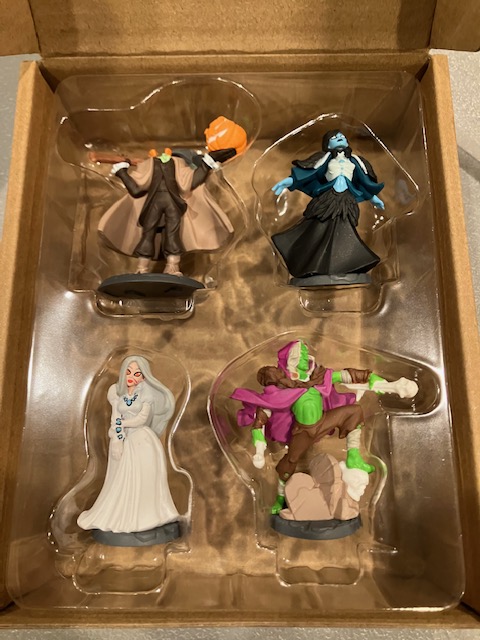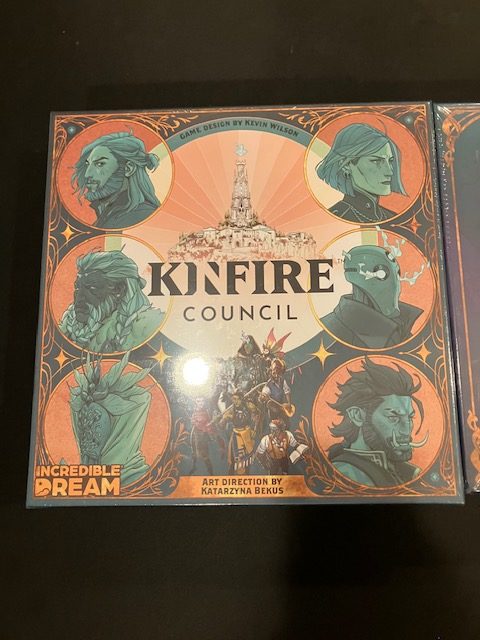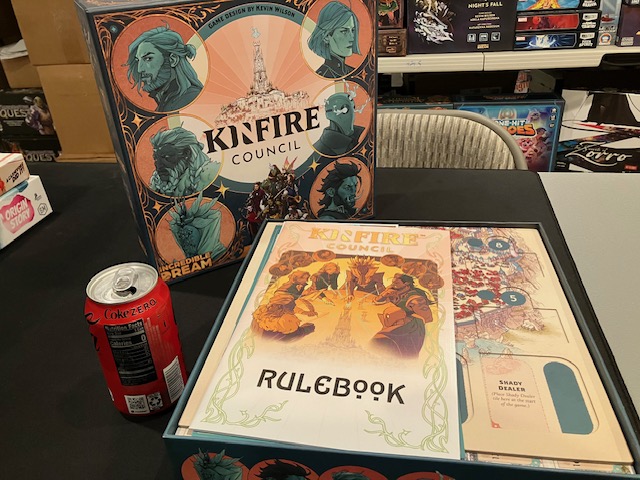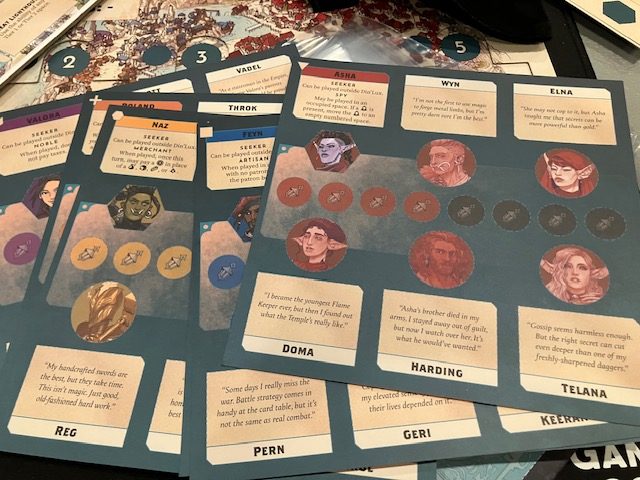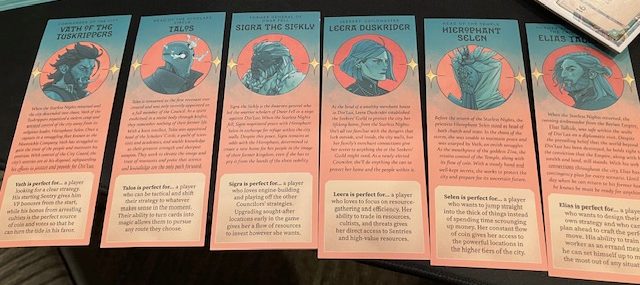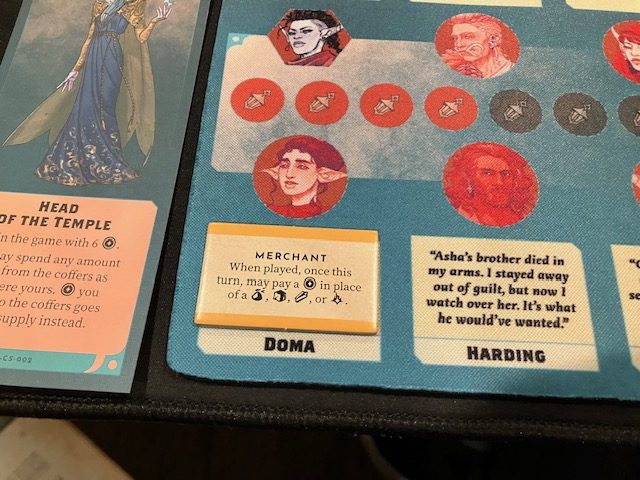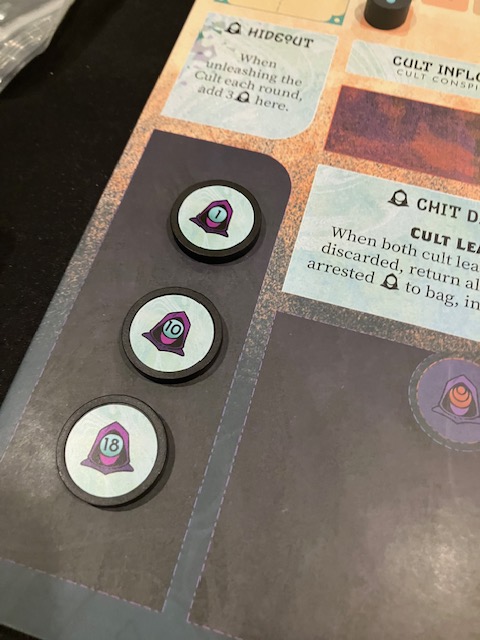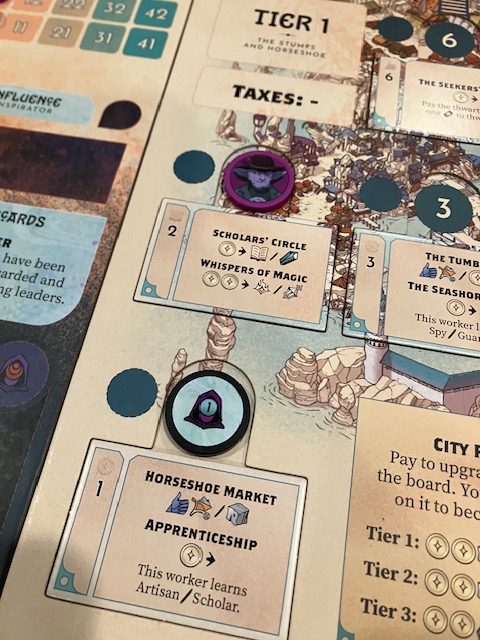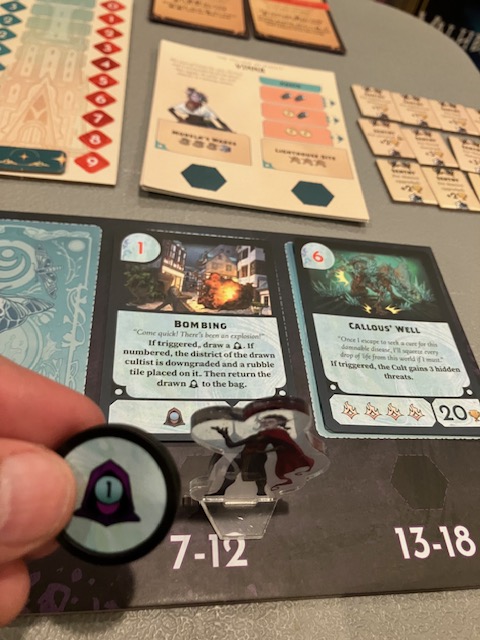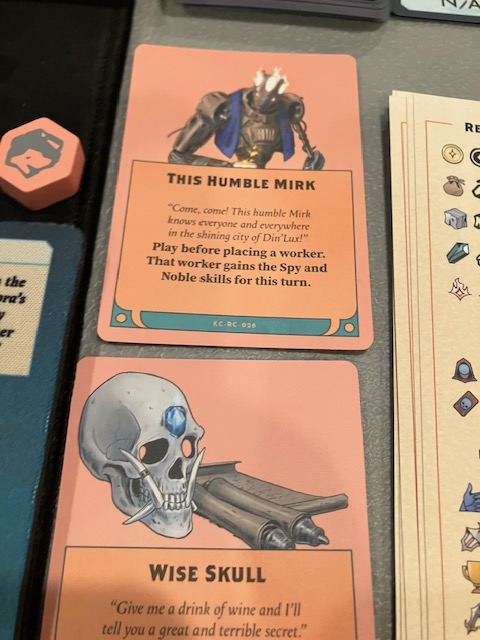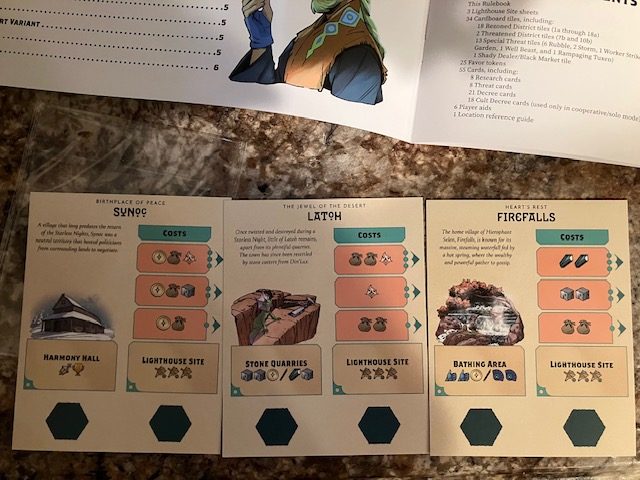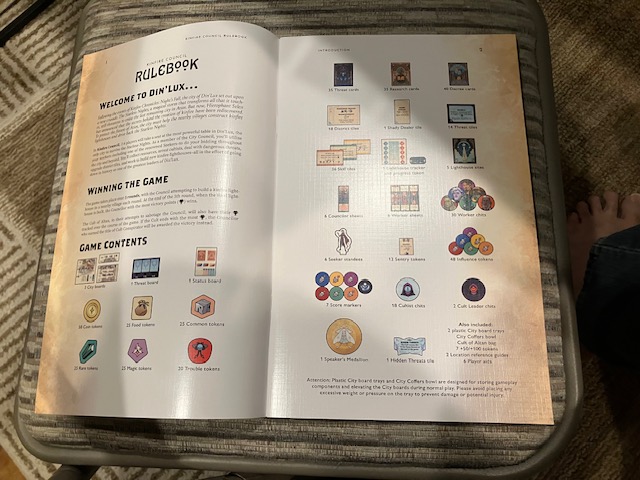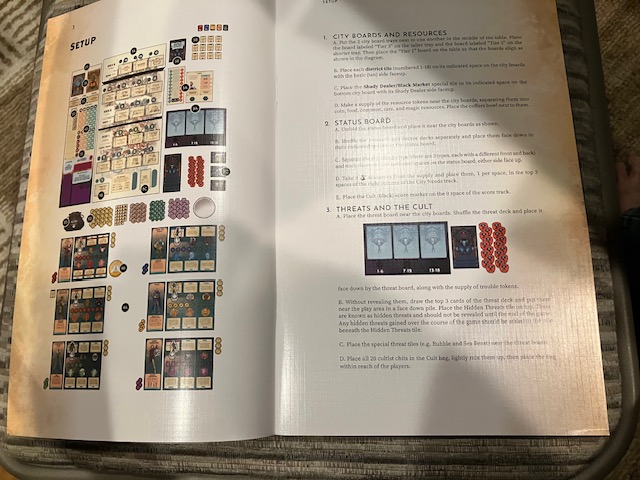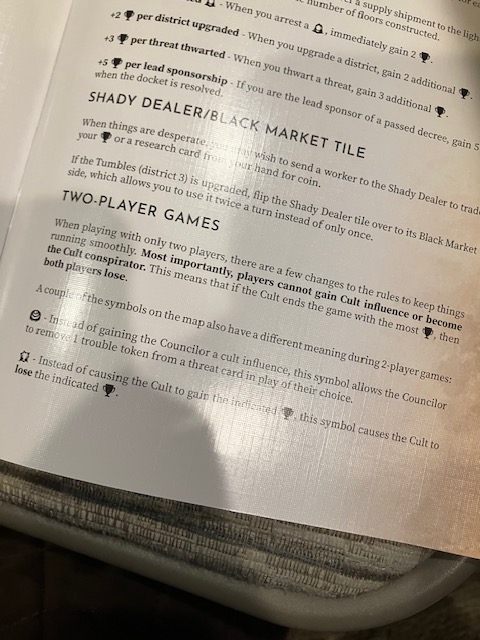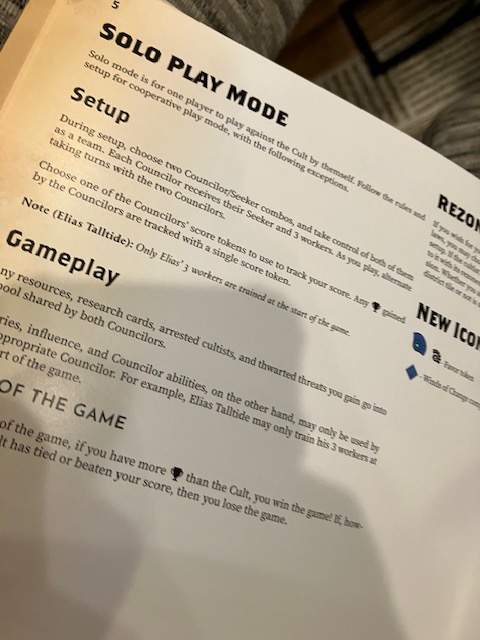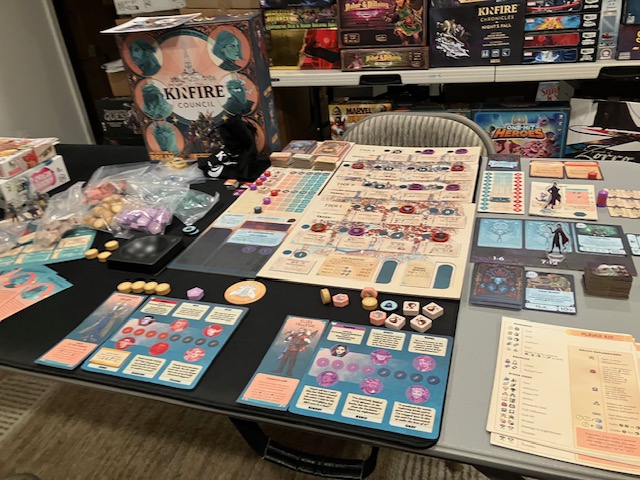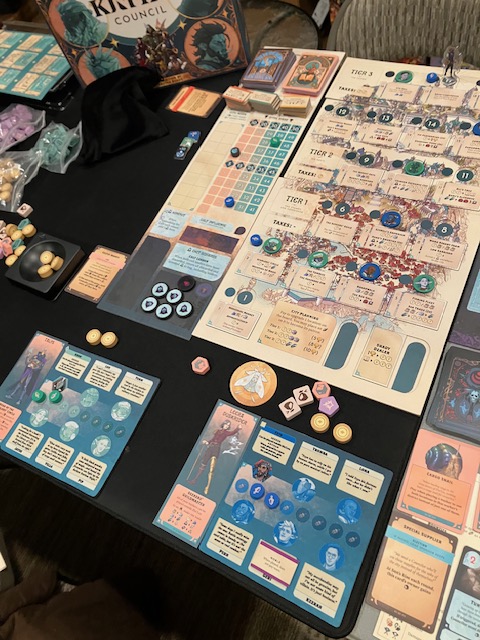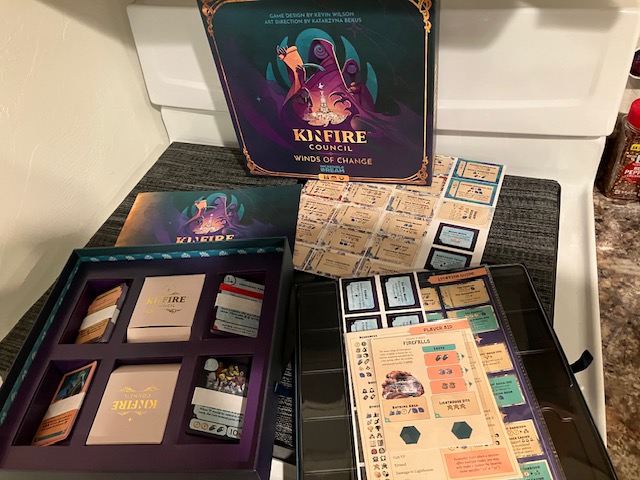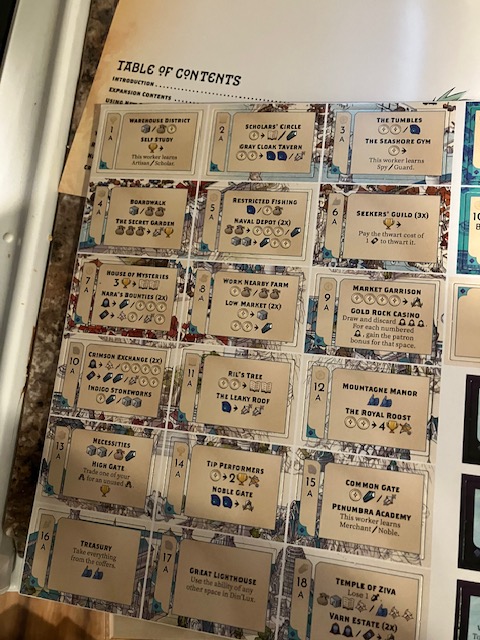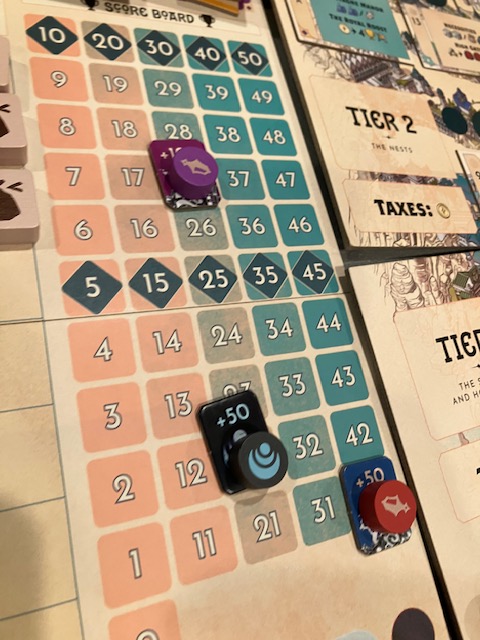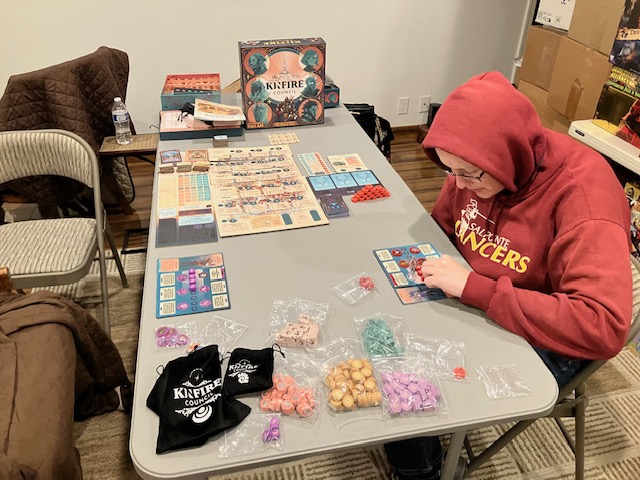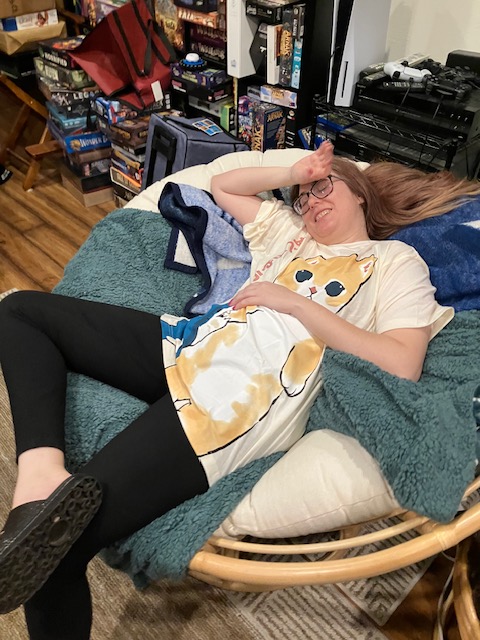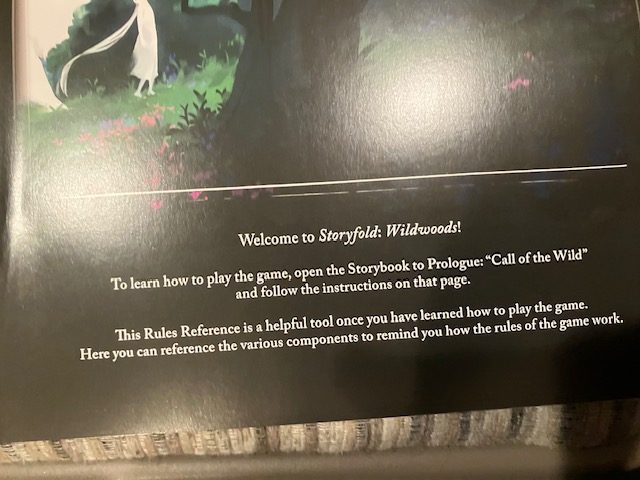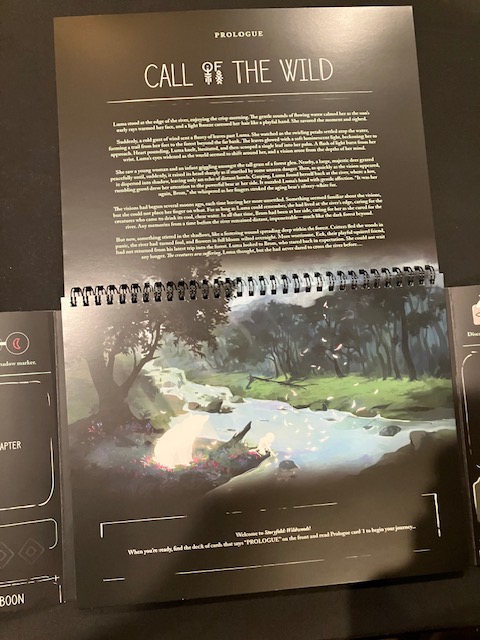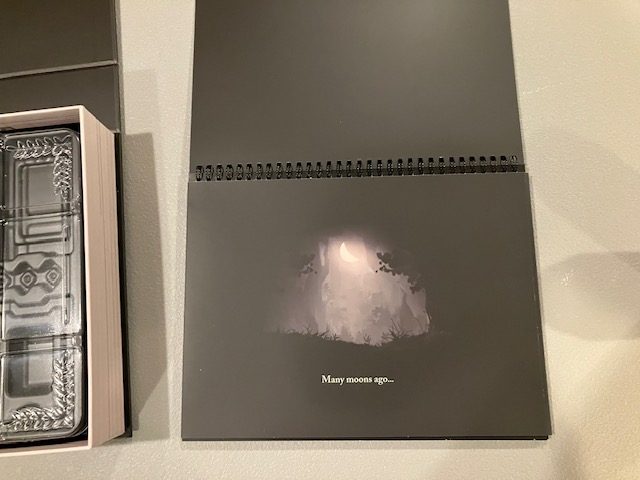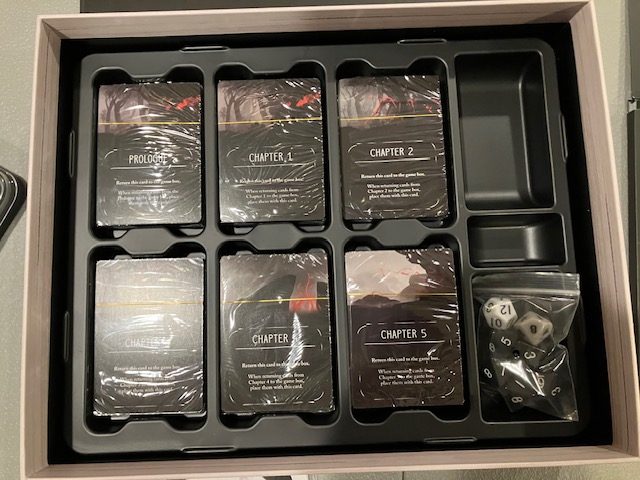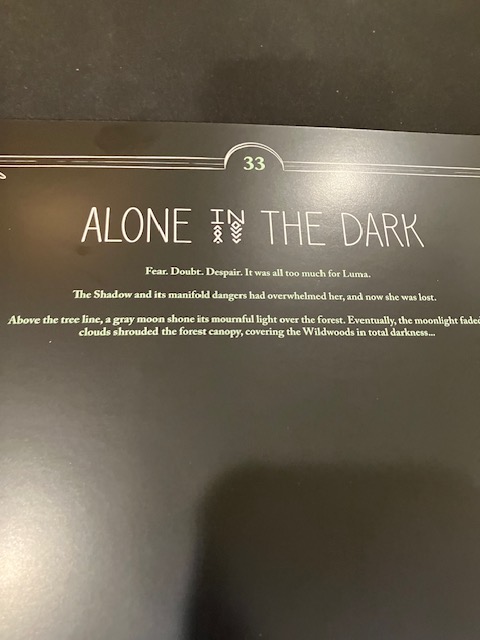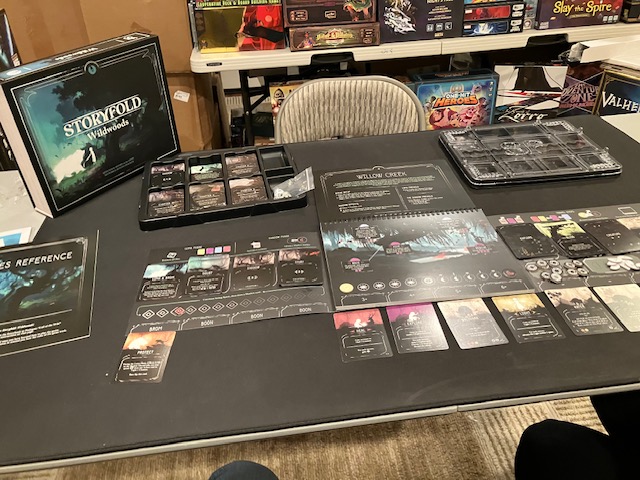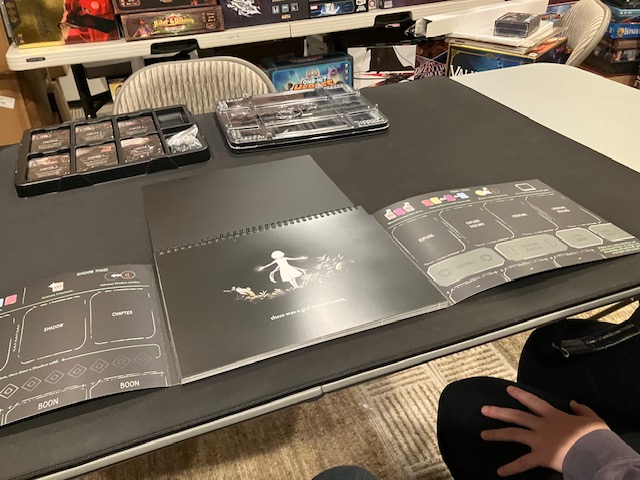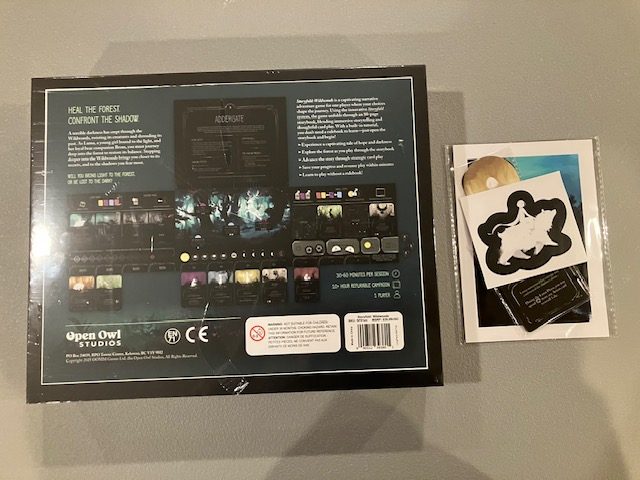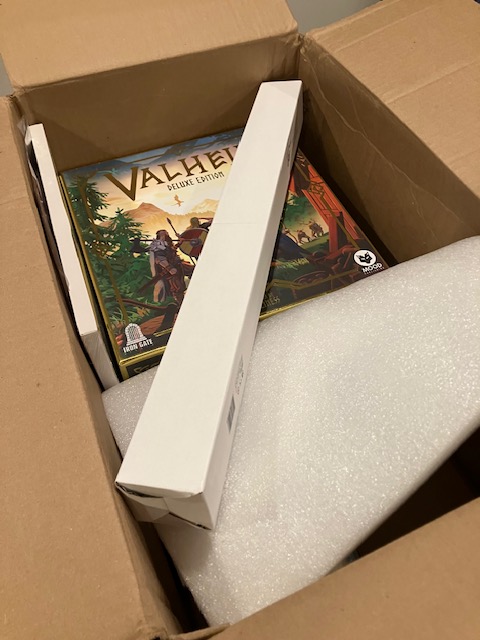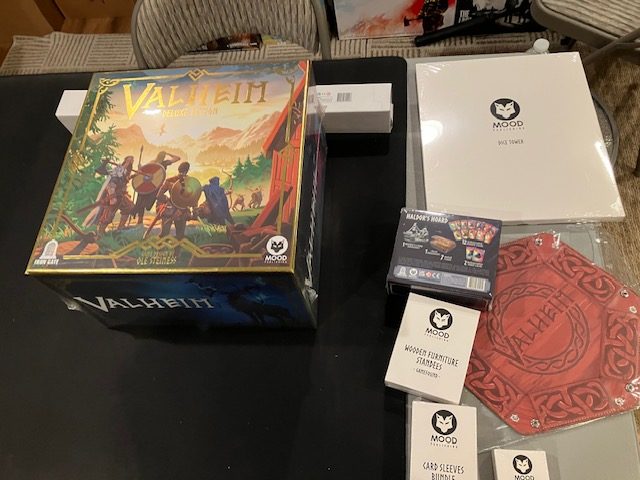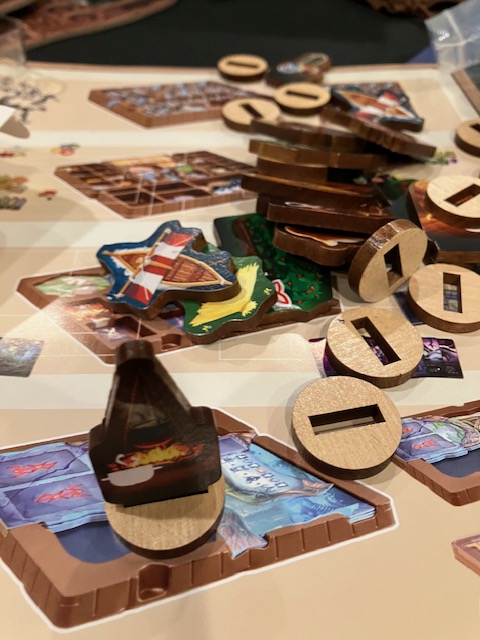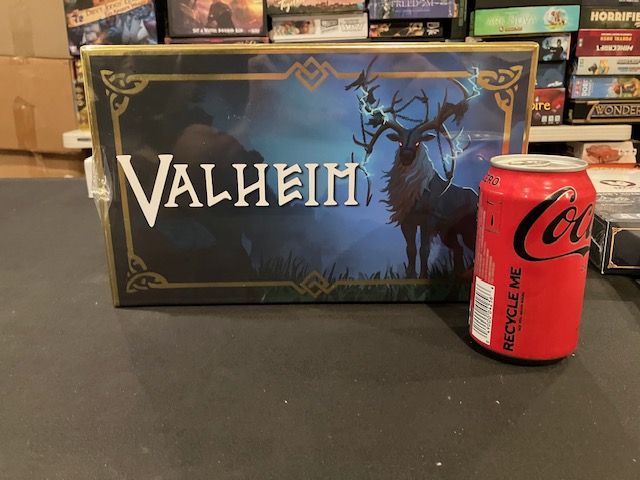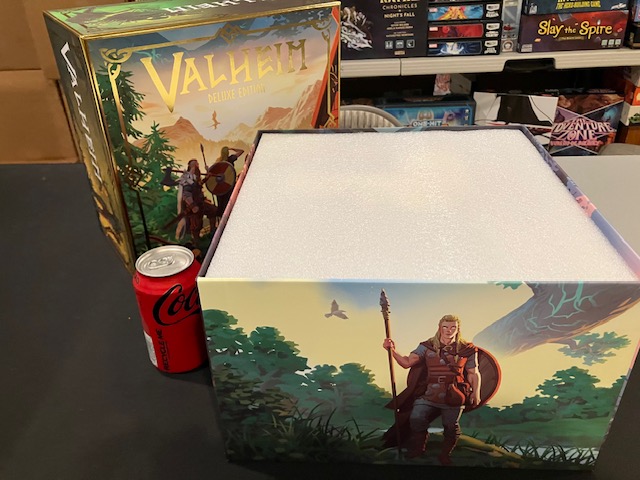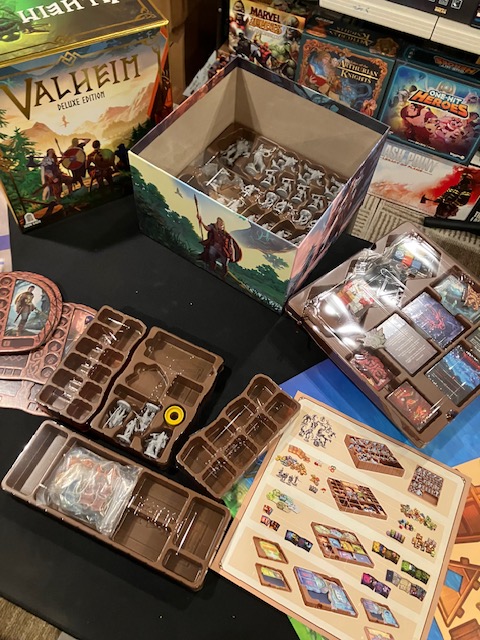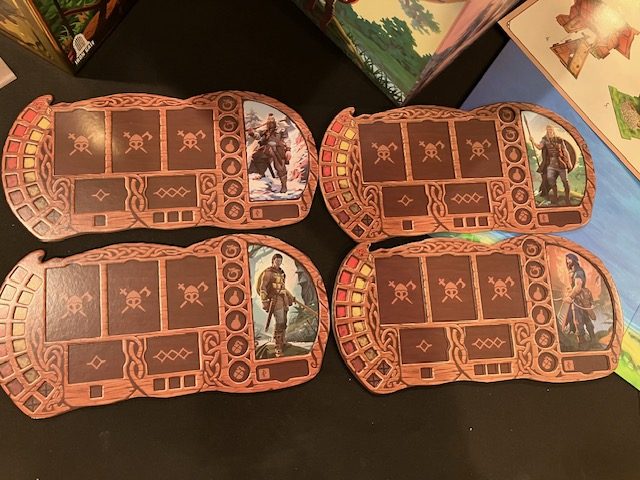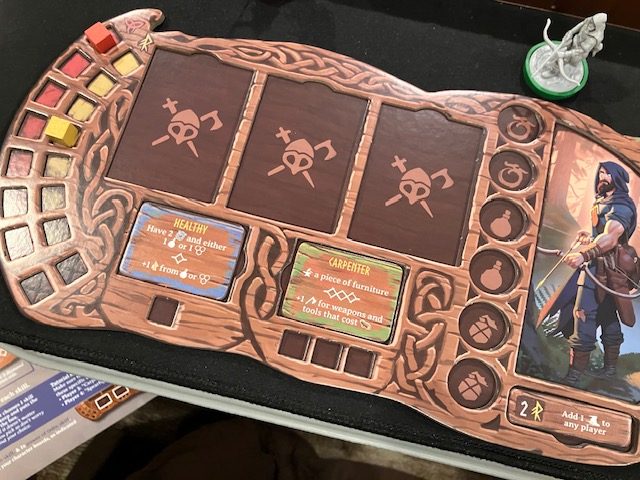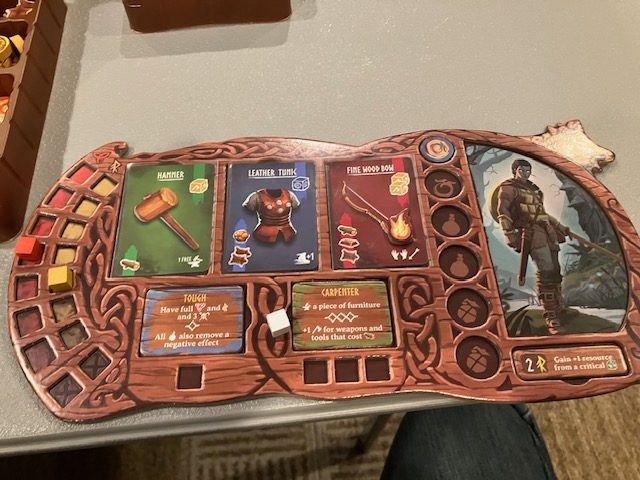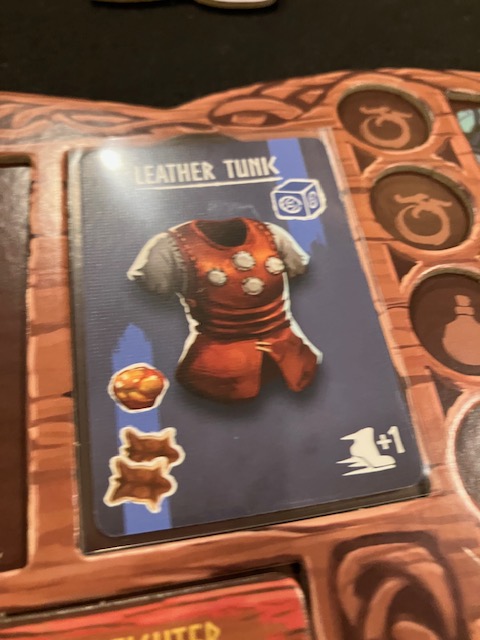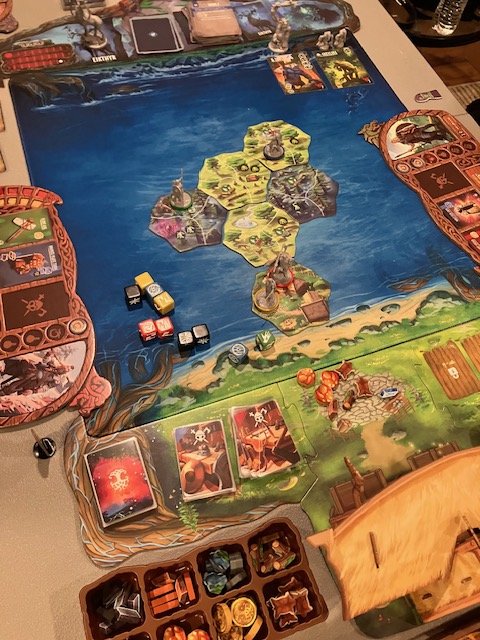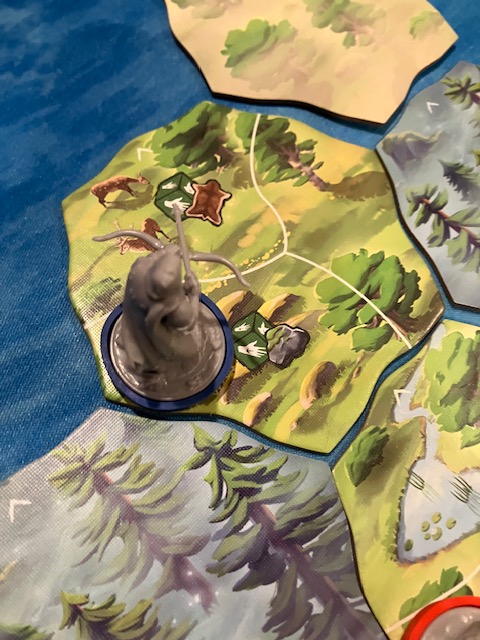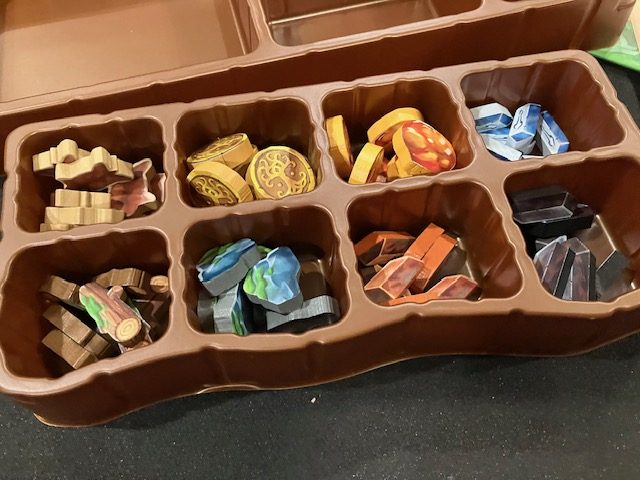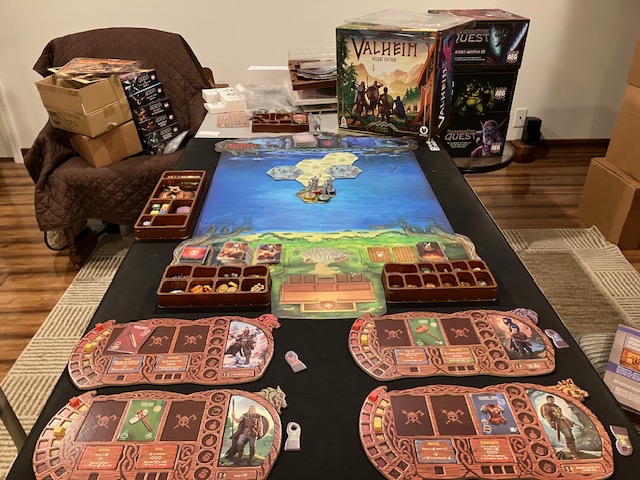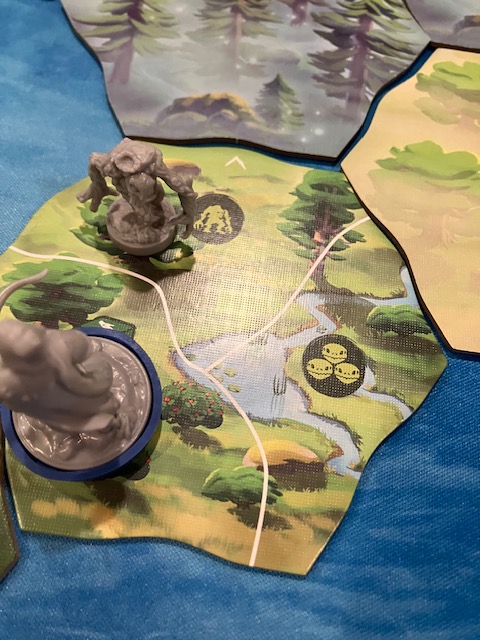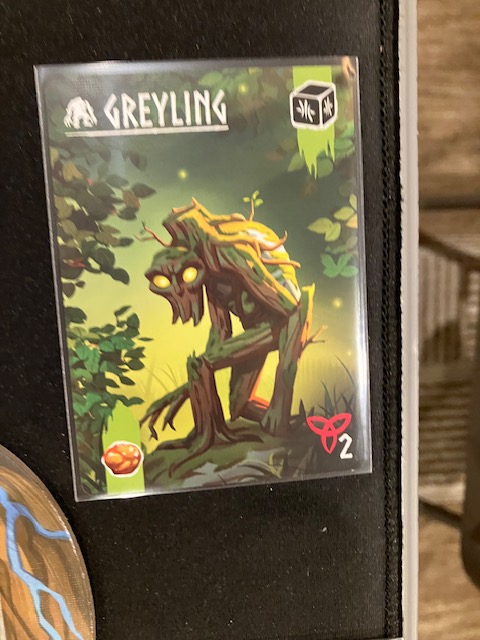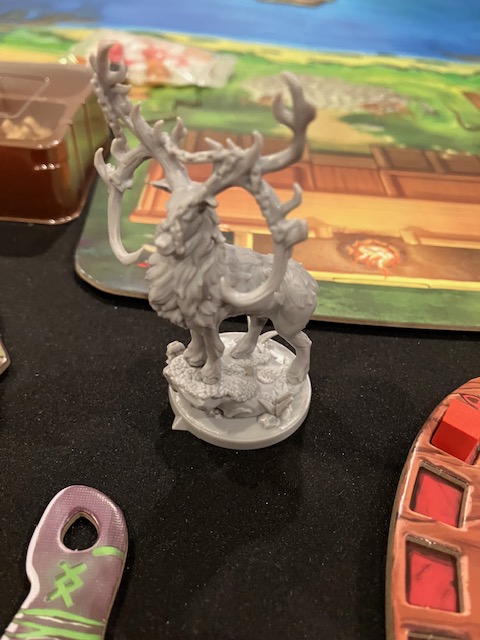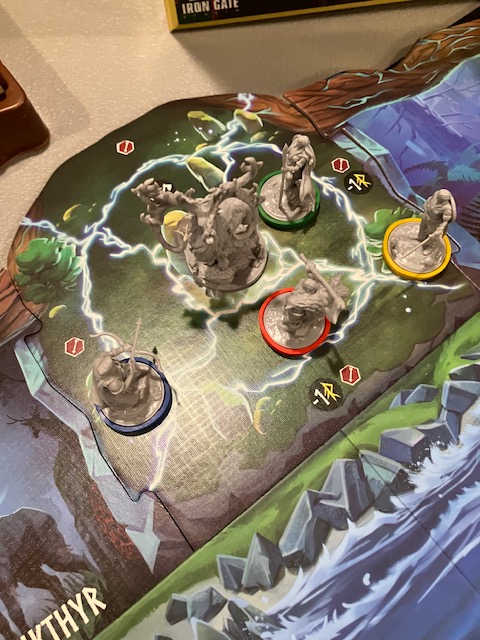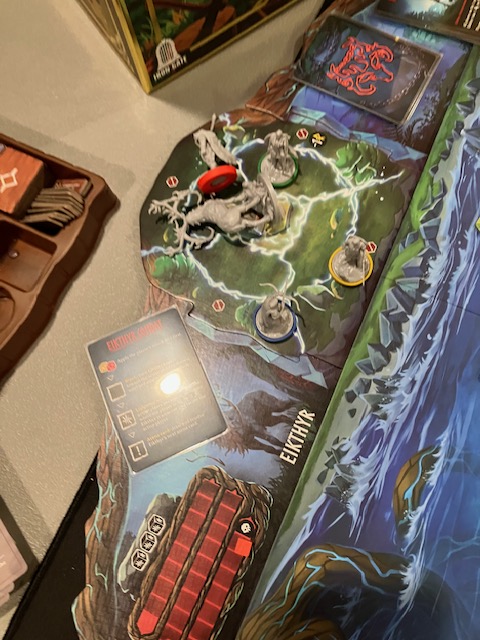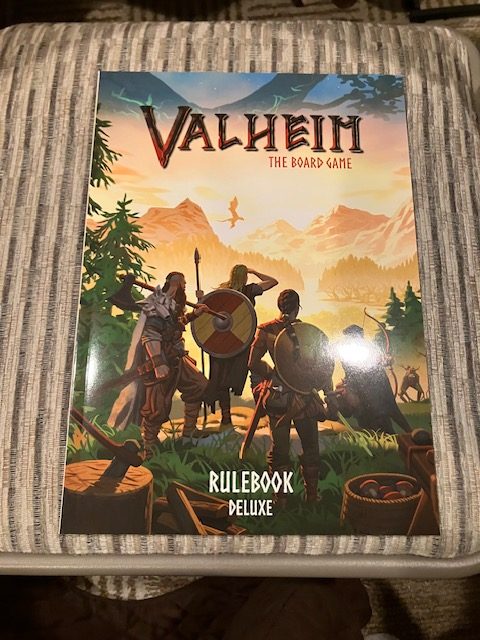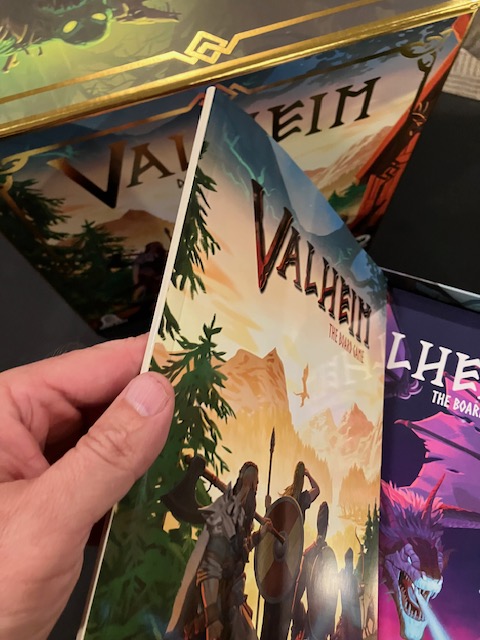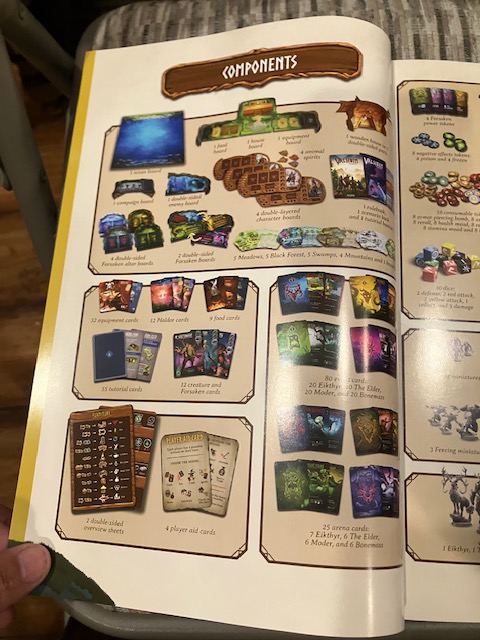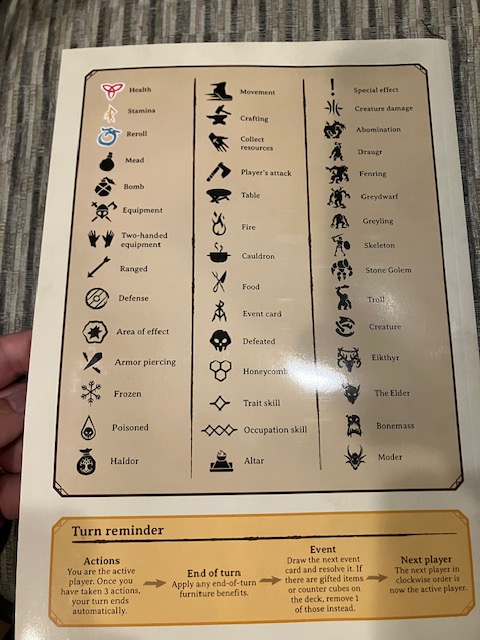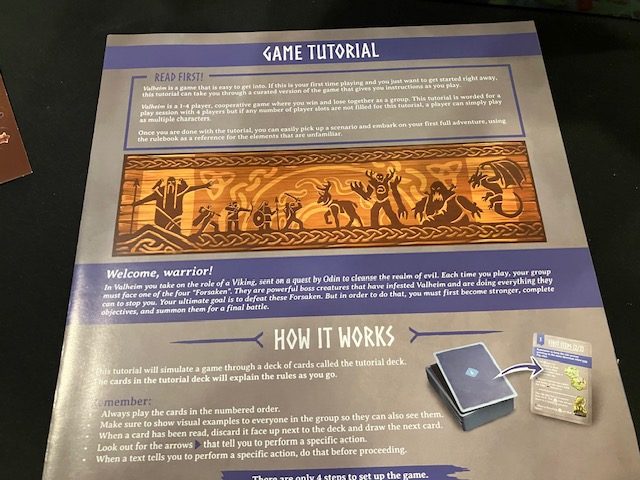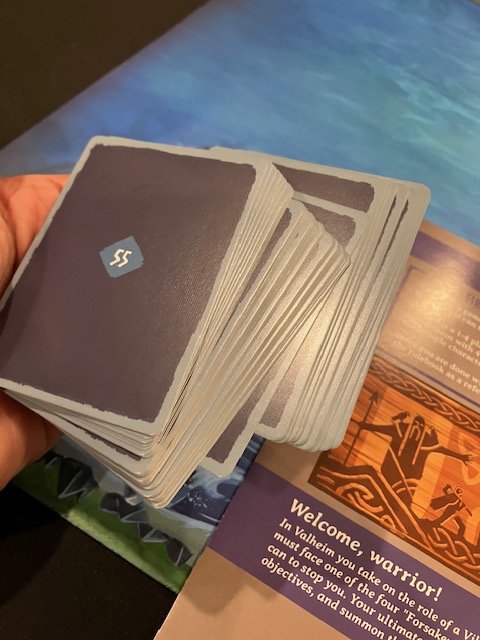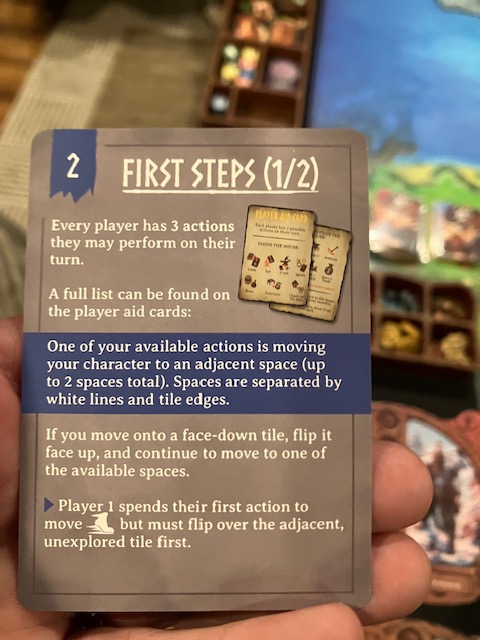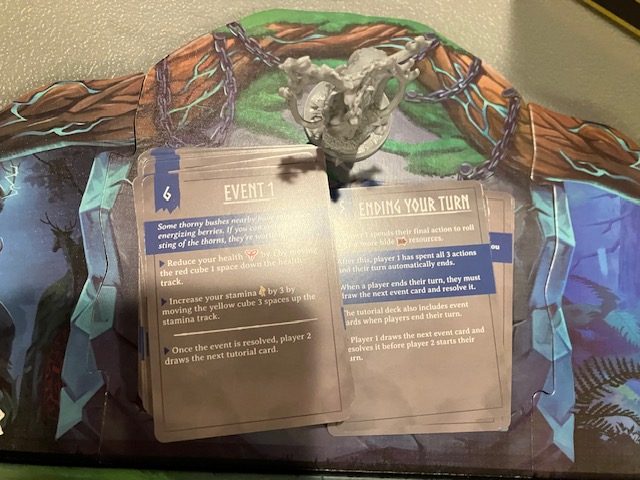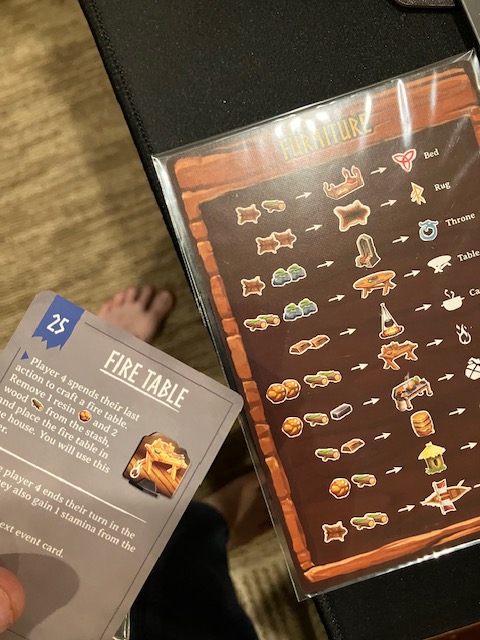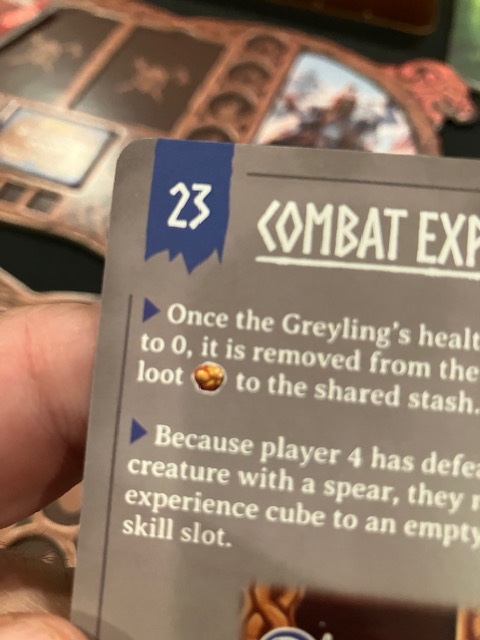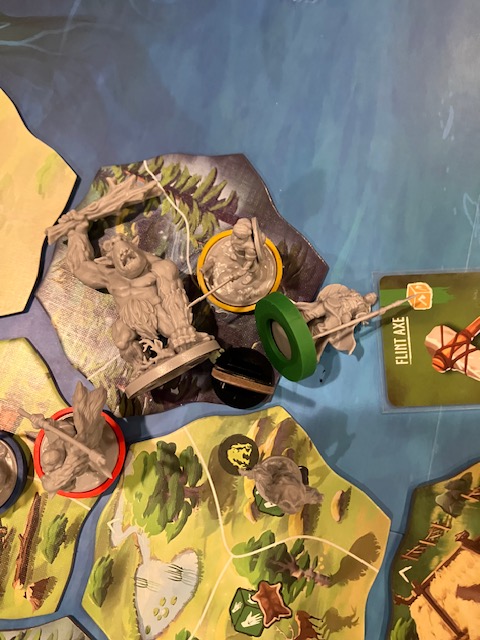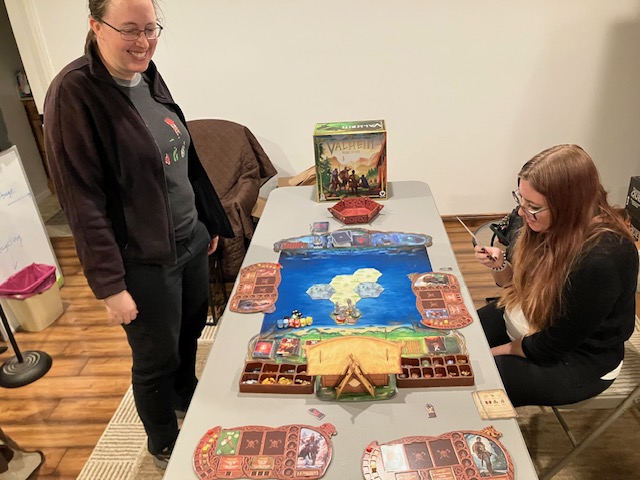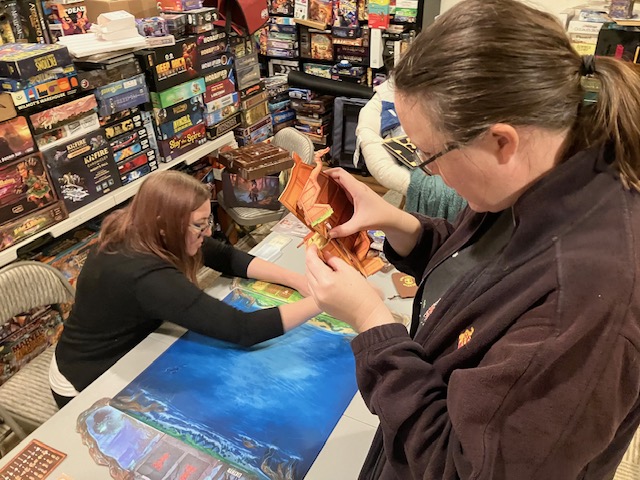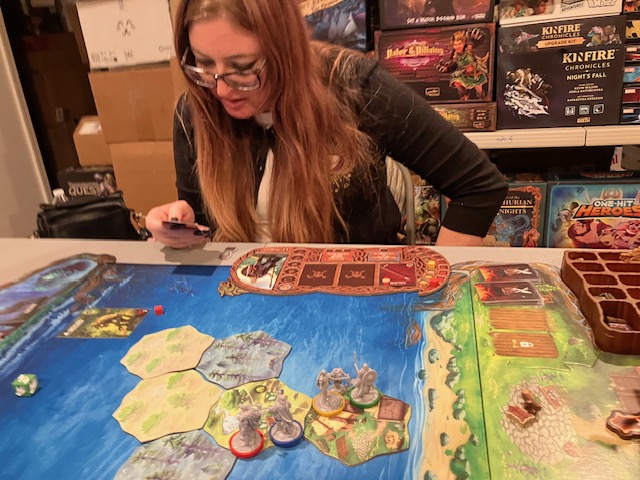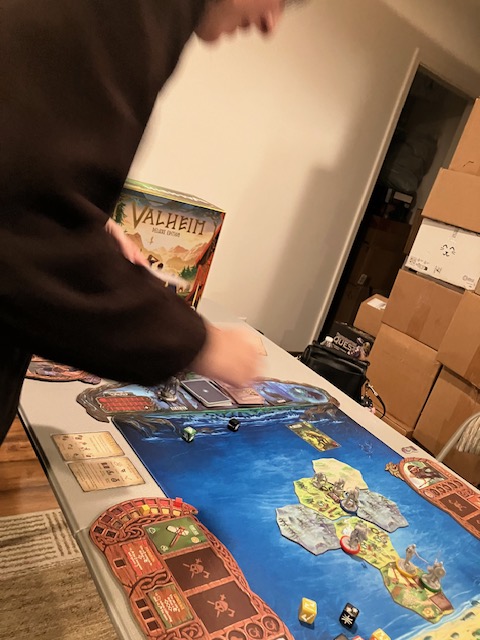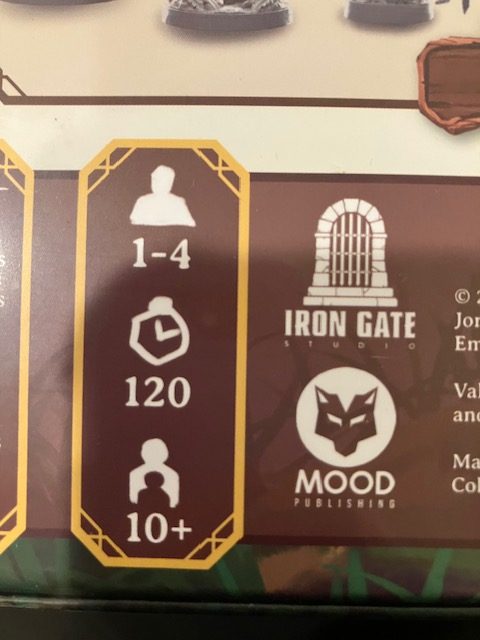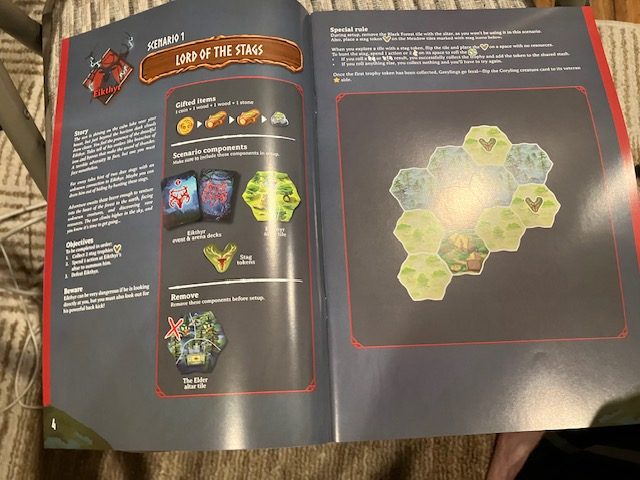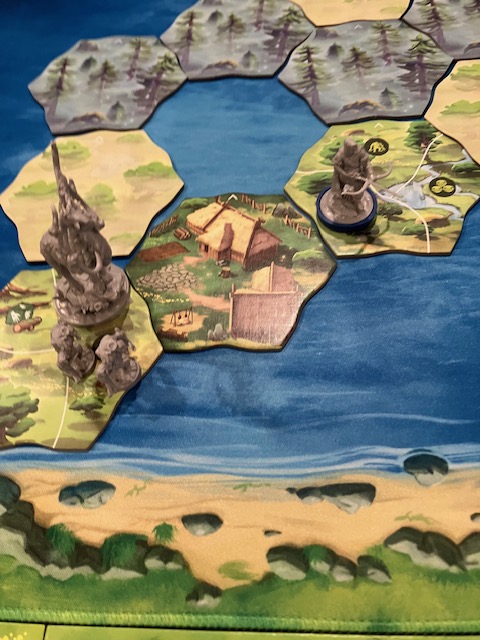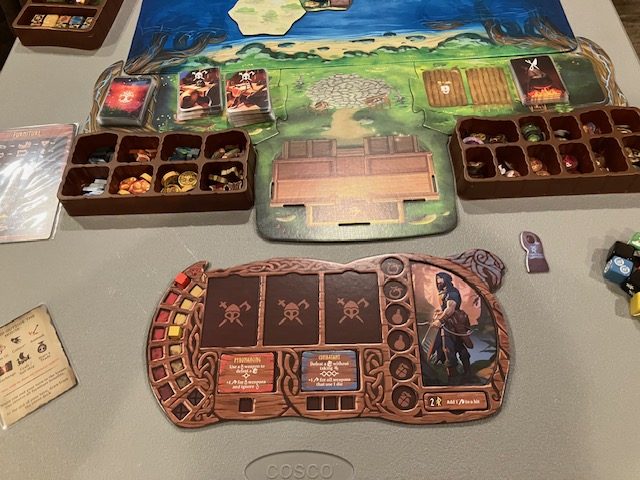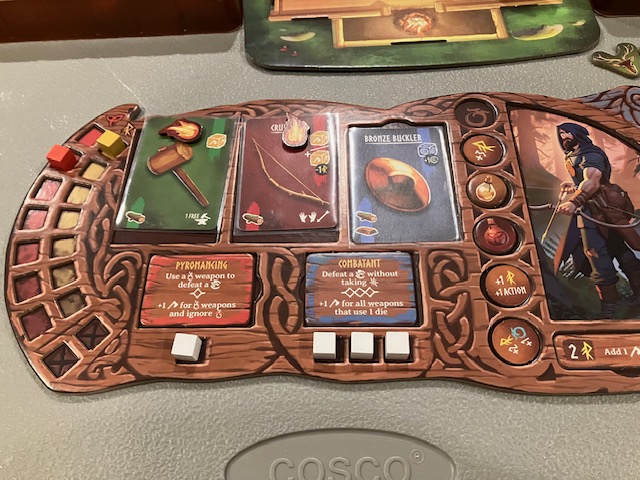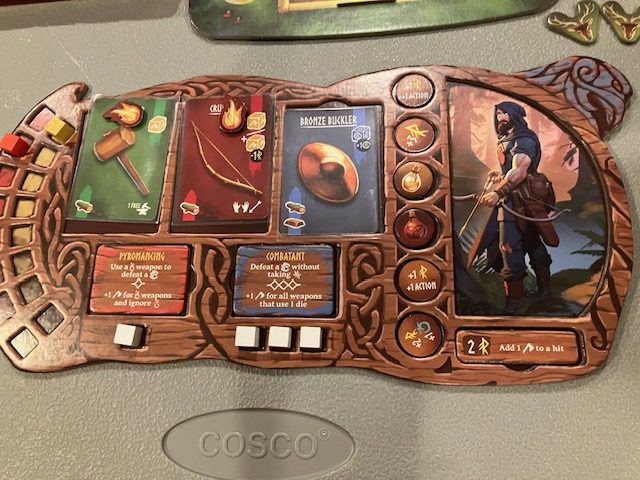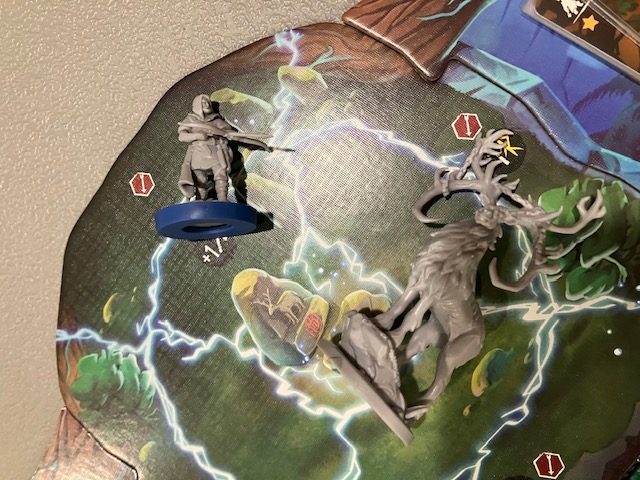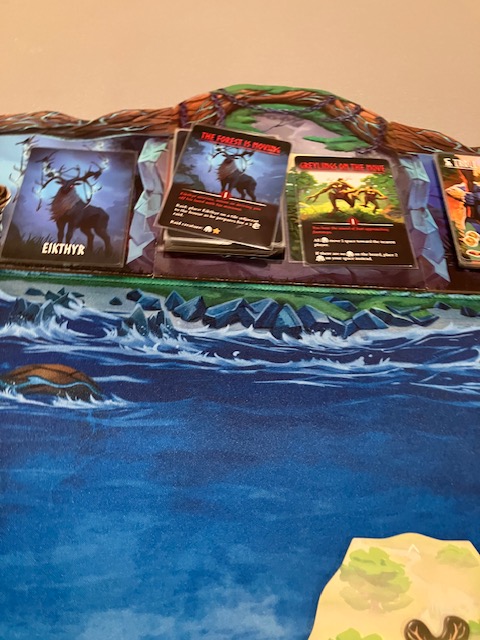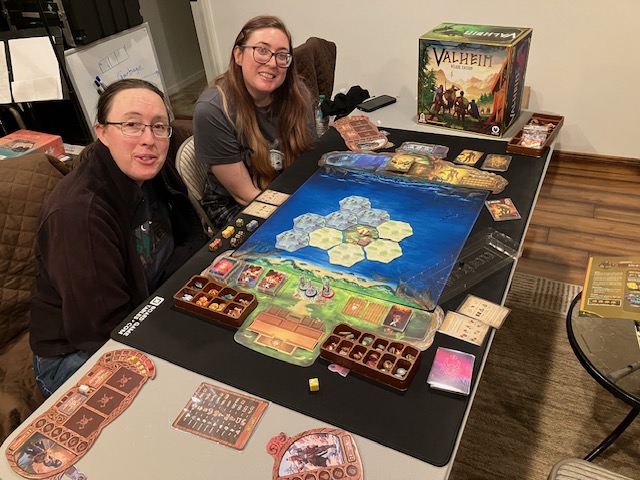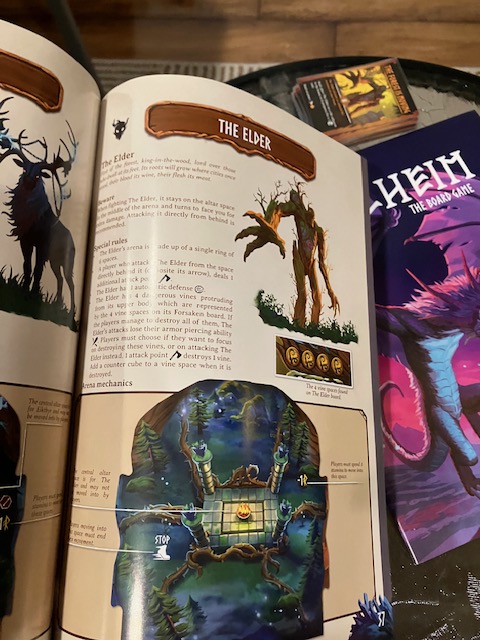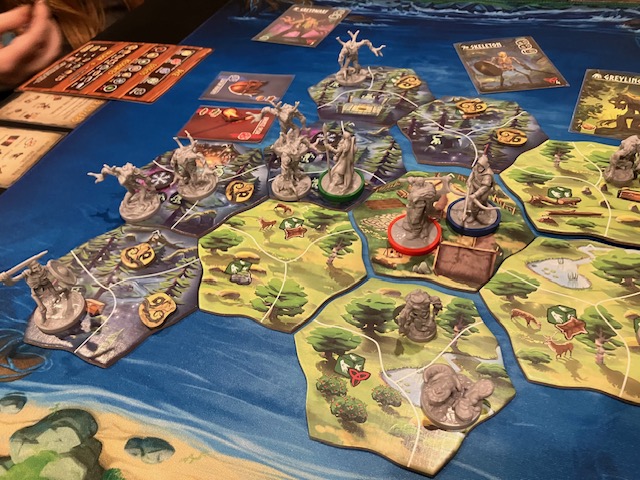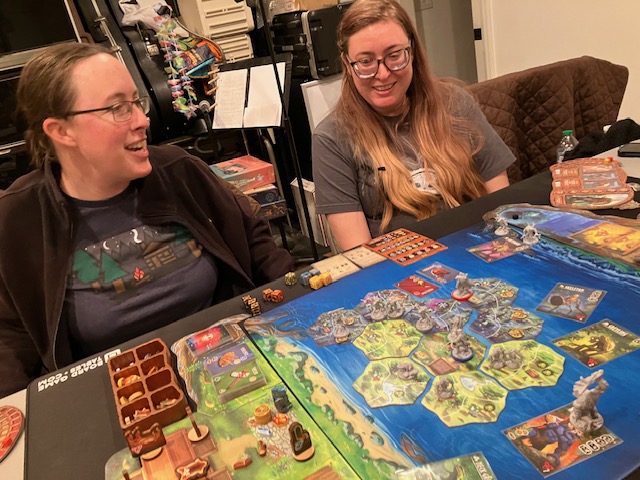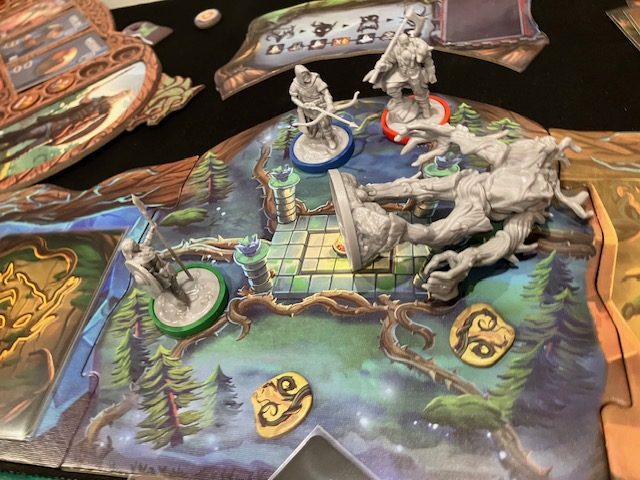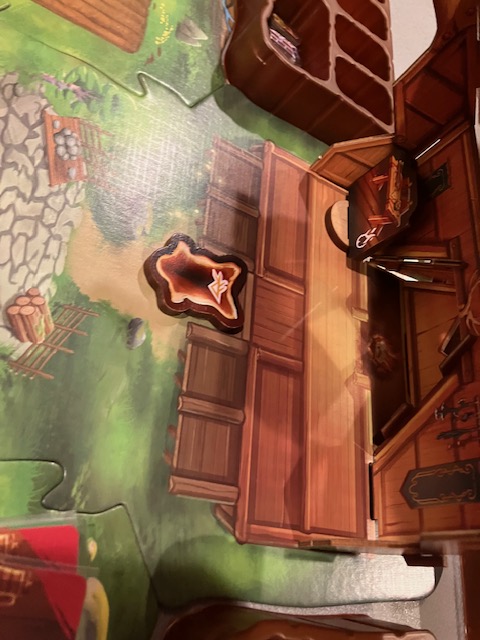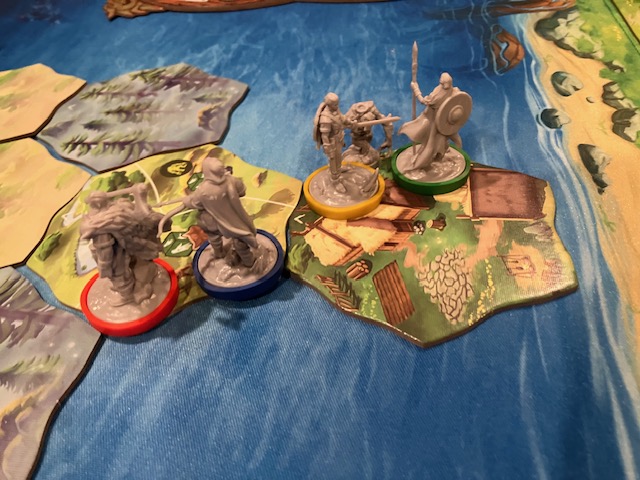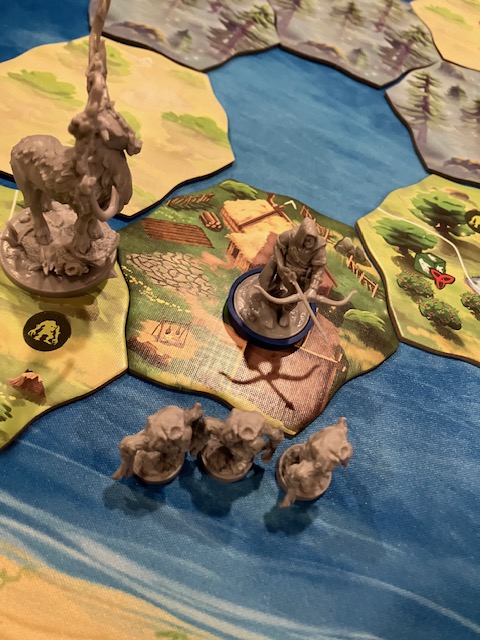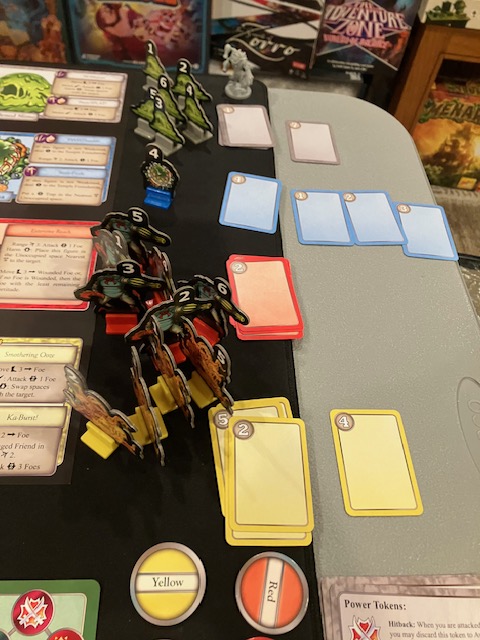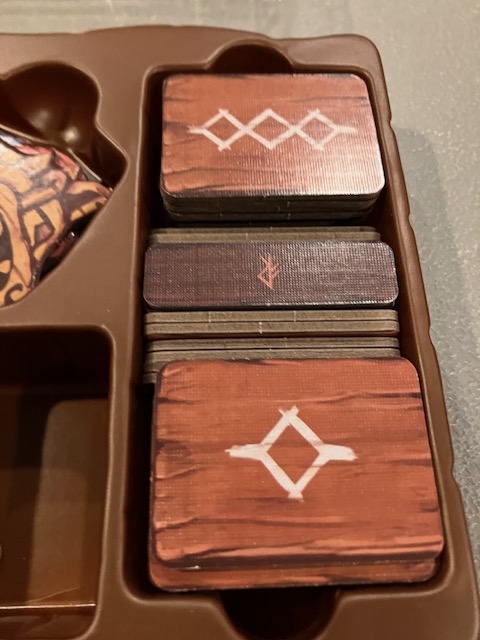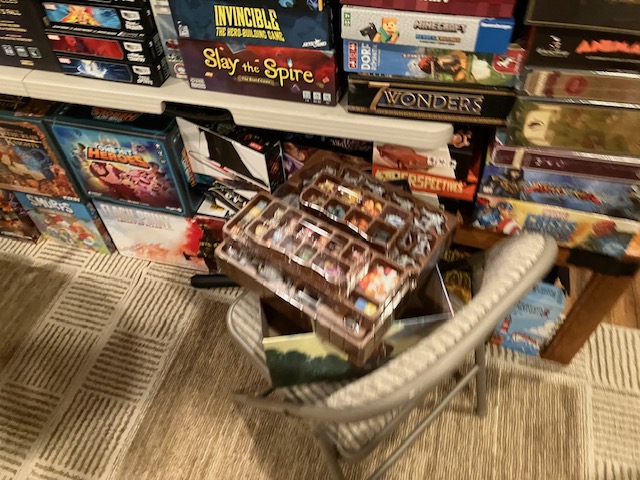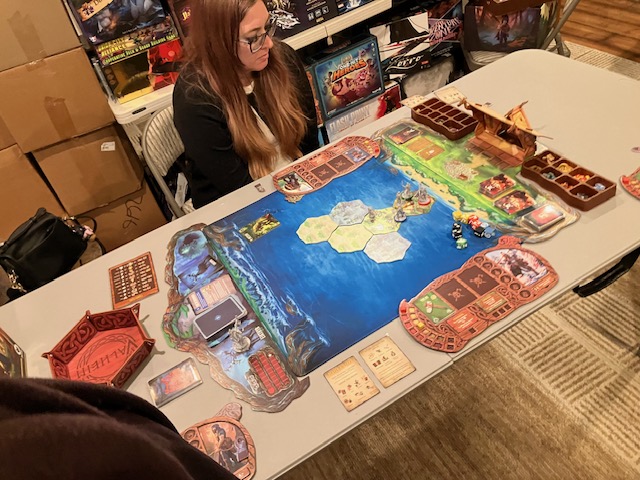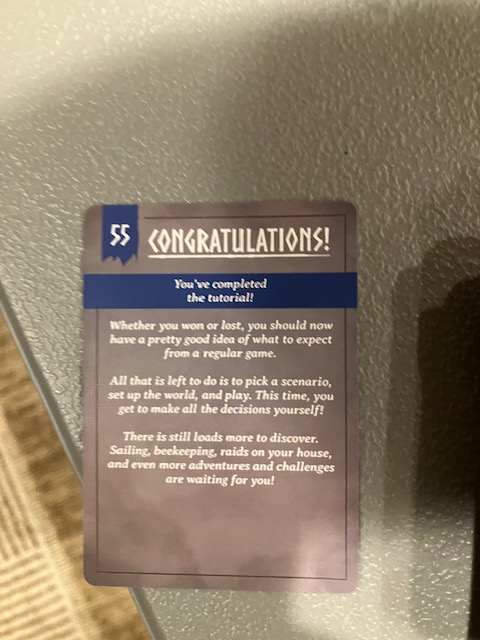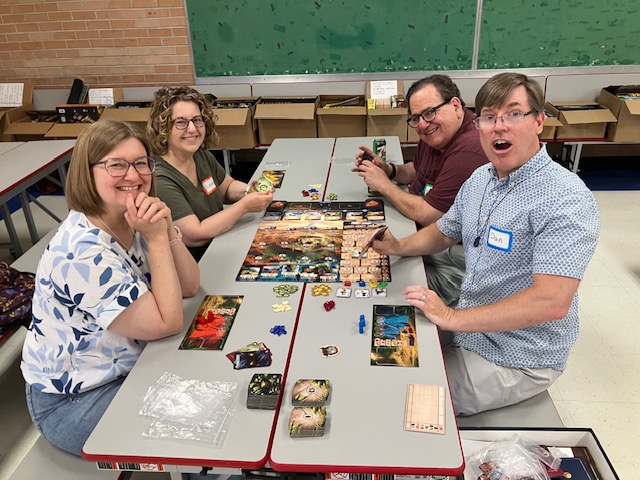
Welcome to the end of 2025! There were some great games that came out, but also some great expansions that really contributed to the world of cooperative games! As usual, we qualify our expansions are one of three types:
- Stand-Alone Expansion: Some games you thought might be on the Top 10 Cooperative Board and Card Games of 2025 might have just ended up on this list because they are stand-alone games that can be played without a base game, but at the end of the day they also expand a base game!
- Makes The Game Cooperative: Some expansions take a competitive base game and make the game fully cooperative with the expansion! We saw a number of these type of expansions on the Top 10 Games That Can Be Played Fully Cooperatively!
- More Content: Some expansions just add more content (more cards, etc.) to the base cooperative game!
We also continue with the newer characterization: Does It Require Another Expansion?
Honorable Mention: Origin Story

Expansion Type: Makes The Game Cooperative
Solo Mode: Well, you could play the 3-character co-op mode as a solo player, but there’s already a 3-character solo mode in there.
Requires Another Expansion? No
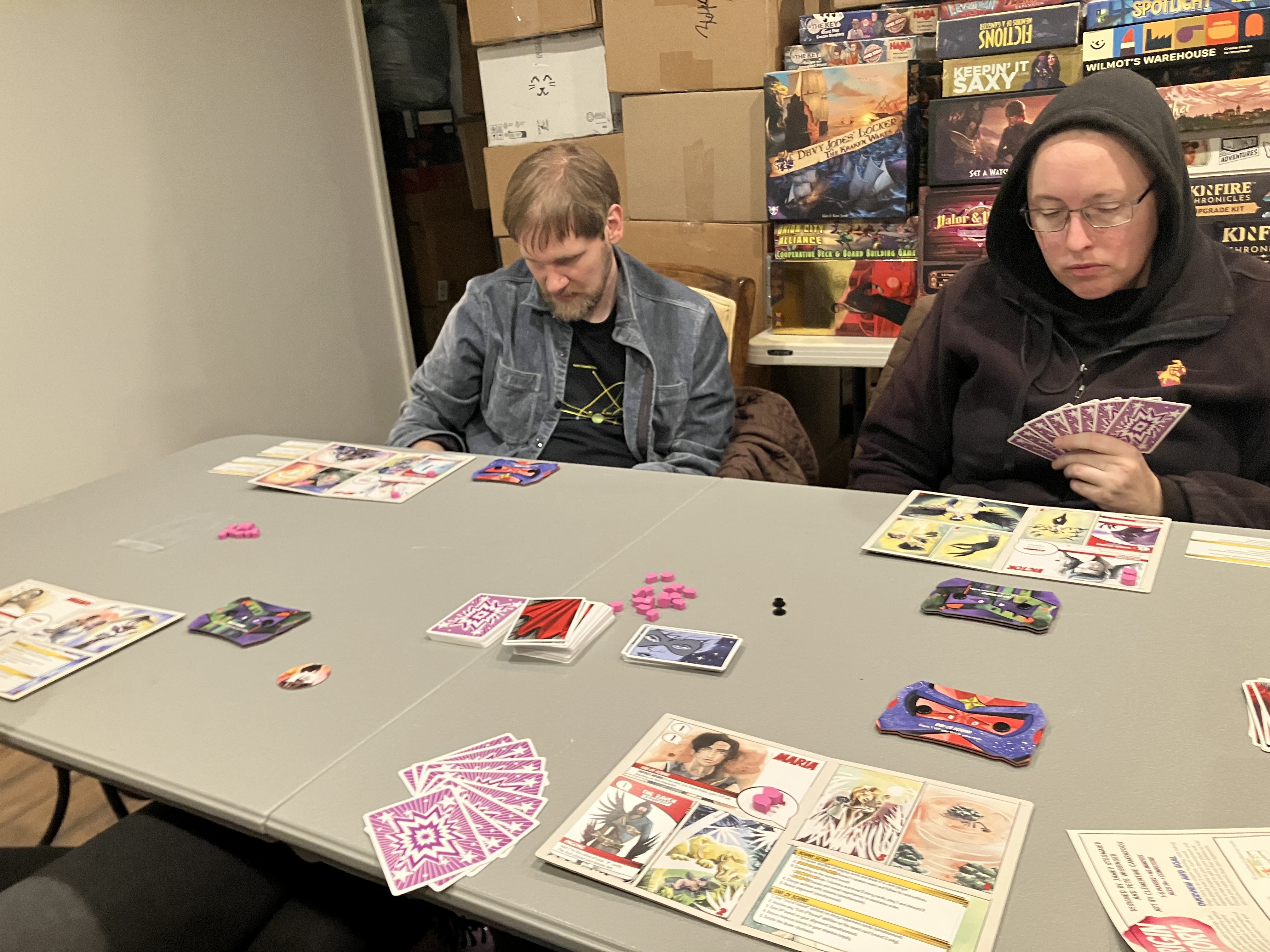
This is an odd duck … because it’s not a real “official” expansion. This is a homebrew set of rules to make the really wonderful game Origin Story into a cooperative game! See link here for rules.

We played Origin Story, admired how well it works, especially with the powers, strategizing a limit of 5 rounds … and the artwork is amazing. While playing, we couldn’t help to think “Being a Super Hero game, is there a way to play cooperatively?” We fervently decided a new mode of gameplay should be added: a cooperative mode! Over a month or so, we developed some simple rules to make an optional cooperative mode for Origin Story. These rules probably need a little more play-testing, but frankly, we all enjoyed the game in a whole new way with this cooperative mode. Now, as well as playing the current mode to be the best Super Hero and win, all the Super Heroes can now work together to save the planet in a cooperative mode!
A Super Hero game should be cooperative: see this free set of rules here.
10. Marvel Champions: Agents of SHIELD
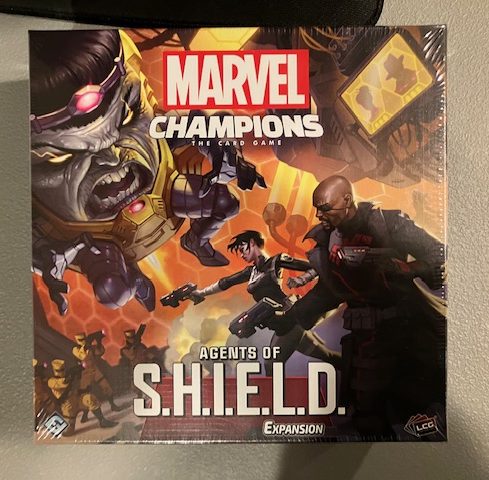
Expansion Type: More Content
Solo Mode: No new solo mode, just the original
Requires Another Expansion? No

More than any other game on this list, I play this with my buddy Junkerman (see above). He loves Marvel Champions, even more than me! (So much so, that he has his own blog about it: see Aspect Expressions Blog here!) Marvel Champions is a game where you get the expansions because they offer you characters or some kind of adventure!
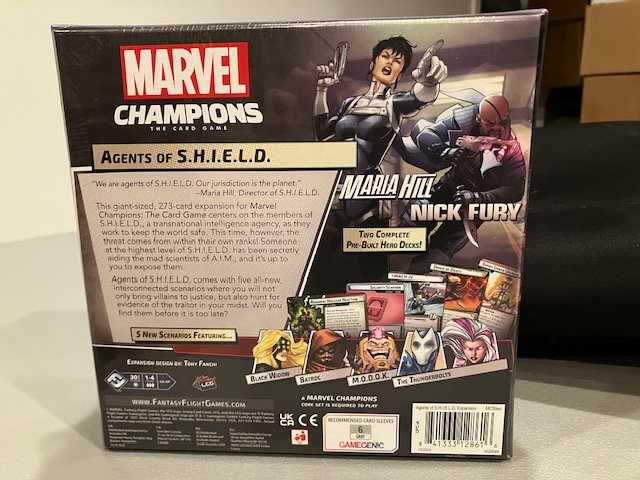
In this case, we get Maria Hill and Nick Fury as characters, running them through an adventure of 5 Scenarios as Agents of SHIELD!

I think what sold me more than anything else was the fact that Nick Fury gets a Flying Car! Once I saw Nick Fury had that, you couldn’t stop me from playing him! A Flying Car!! Agents of SHIELD is just more content in the Marvel Champions universe; good stuff.
9. Thunderstone Quest: Twilight Souls/The All-Consuming Horde
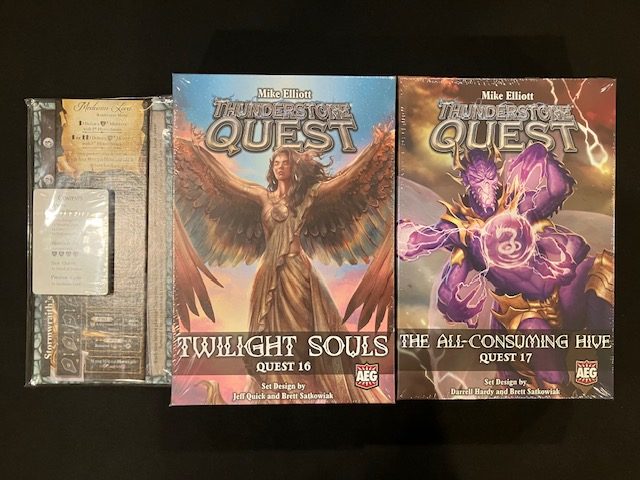
Expansion Type: More Content
Solo Mode: Needs The Barricades Mode Expansion for solo
Requires Another Expansion? Yes: To play solo or cooperatively, you need The Barricades Mode Expansion

If Junkerman is my Marvel Champions buddy, then Nathan and Caroline are my Thunderstone Quest buddies! I have played most of the recent Thunderstone Quest expansions with them! See above as we finish The All-Consuming Hive, having rescued peoples from a living dungeon!

It’s kind of gotten ridiculous how many Quests there are (see above). But, these expansions still offered something new and expanded the game and made it more fun!
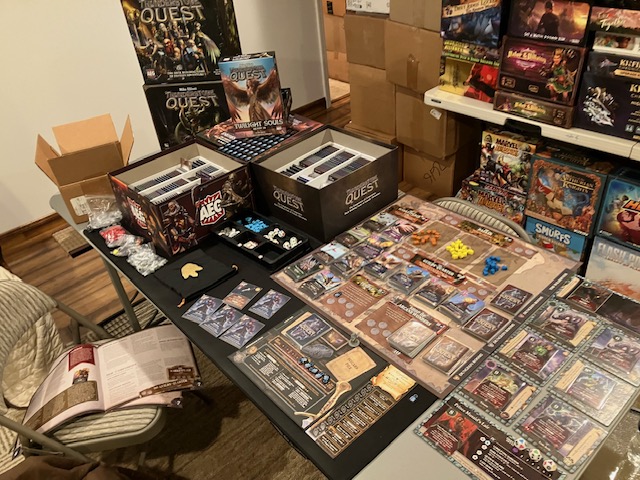
It’s gotten a little ridiculous (I know I have already said that), but I still like to play Thunderstone Quest solo or cooperatively (see above as a I play Twilight Souls solo). You can still use these two new expansions in the base competitive game, but if you want to play solo or cooperatively, don’t forget that you need the Barricades Mode expansion!
8. Flock Together: Birds of a Feather Eggspansion
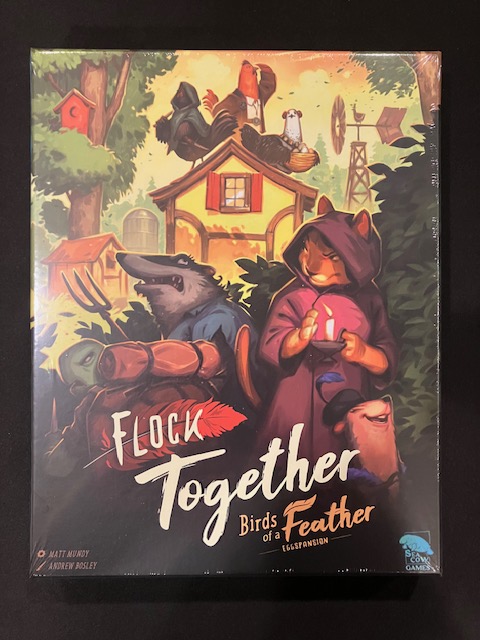
Expansion Type: More Content
Solo Mode: No new solo mode, just the original
Requires Another Expansion? No
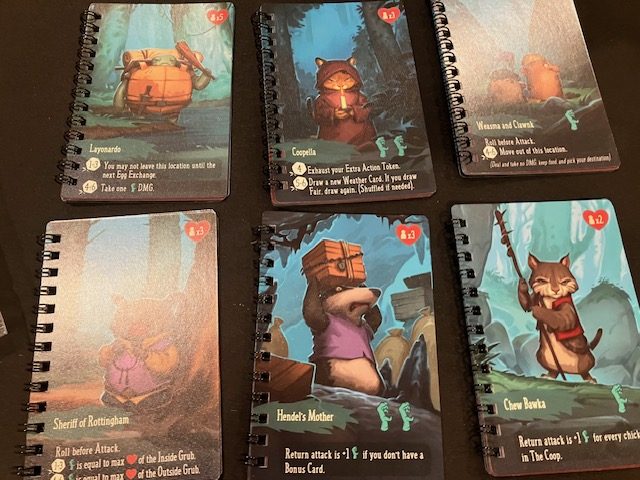
This is the easiest type of expansion to recommend; it just adds more of everything you already like to the game! This eggspansion (be prepared for lots of Chicken puns) adds some new cards, some new players boards (so you can play up to 6) … but, most importantly, it adds 6 new predators with 6 new chicken puns (see above) … Chew Bawka? Oi!
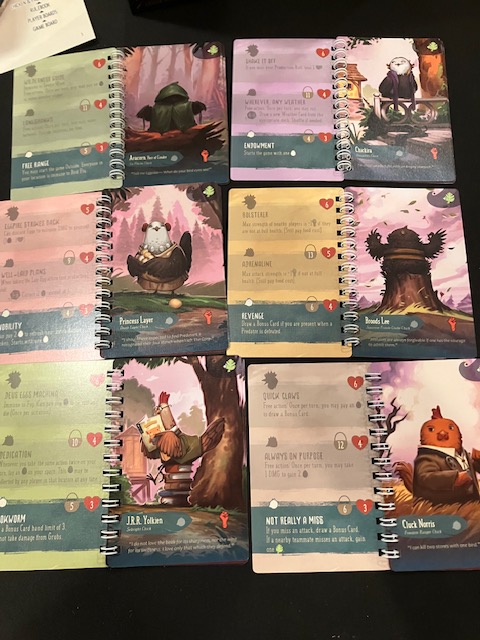
… and 6 new player chickens (with even more chicken puns)! If you liked the base cooperative game Flock Together (see our original review here), this is just more stuff of the stuff you already like! You like Chicken Puns, right? See our review of the expansion here!
7. Skytear Horde: Campaigns
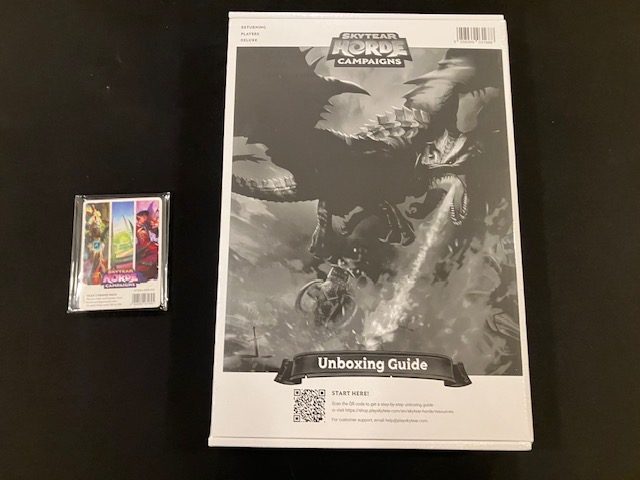
Expansion Type: More Content, Standalone Expansion
Solo Mode: No new solo mode, just the original
Requires Another Expansion? No

I never know whether this series should go on my Top 10 Solo Games of 2025 or my Top 10 Cooperative Expansions of 2025! This year, because I was able to get it played cooperatively in a some good sessions, I am counting is a cooperative (standalone) expansion!
This expansion is mostly just new cards! If you like Skytear Horde (see our original review here), this just gives you more cards … more content … for this cooperative tower defense game.
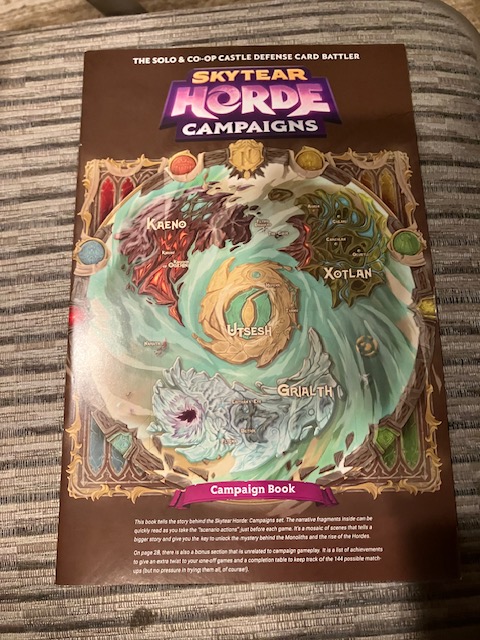
There is a campaign book in here that is both good and bad. It’s not particularly well-written, but once you get how the campaign modes work, I think they add a lot to the base Skytear Horde game! See our review here where we discuss the good and bad of Skytear Horde: Campaigns!
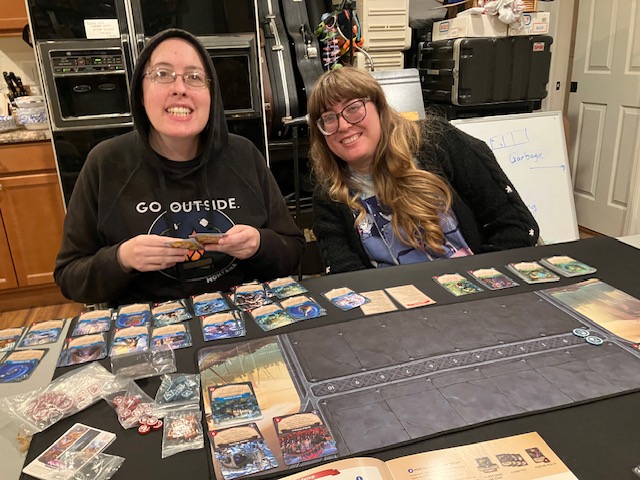
In fact, I conjecture that this campaign mode could be a phenomenal way to teach the game! I taught my friends the game using the campaign mode, and they really responded well to this! Basically, the game comes out piecemeal in campaign mode, making it easier to digest. For this to work, however, you really need someone who knows the game to teach this mode. Check out or review of Skytear Horde: Campaigns if you want more information!
6. Leviathan Wilds: Deepvale Expansion
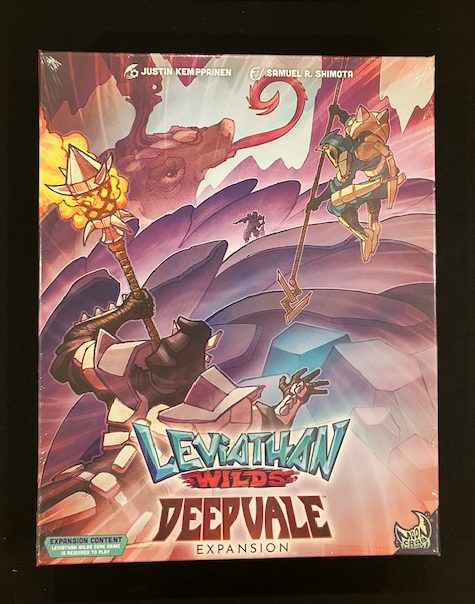
Expansion Type: More Content
Solo Mode: No new solo mode, just the original
Requires Another Expansion? No

This really is just a more stuff you already like expansion! If you liked the original game of Leviathan Wilds (see out review here of a game that made our #3 on Top 10 Cooperarive Games of 2024), this just gives you more of the stuff you like!
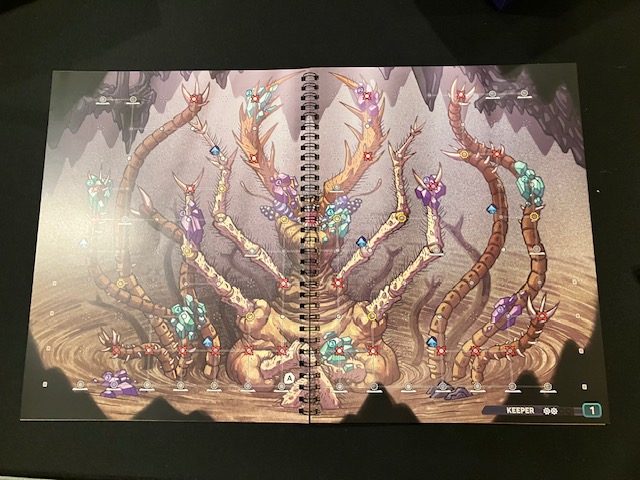
There’s 7 new Leviathans, and oof, they seem creepier than the original Leviathans! And of course, rage decks for each Leviathan.
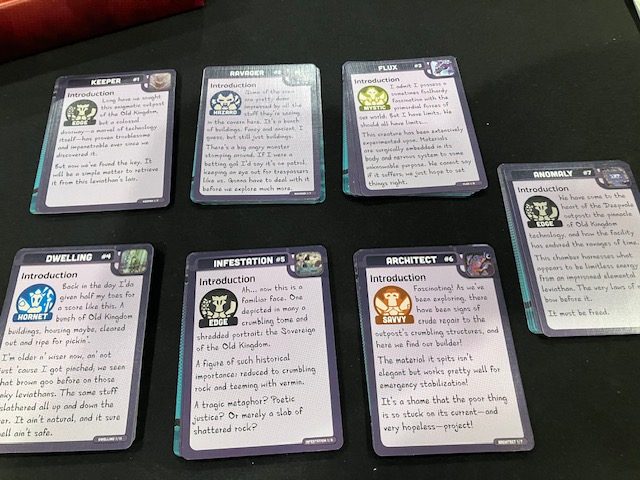
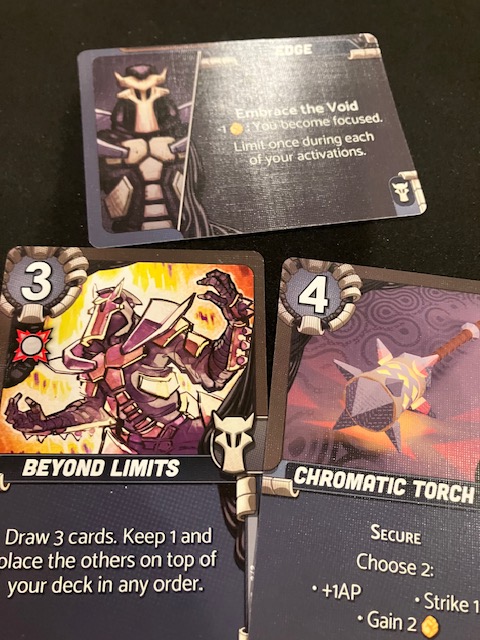
We also get a new climber! The Edge!
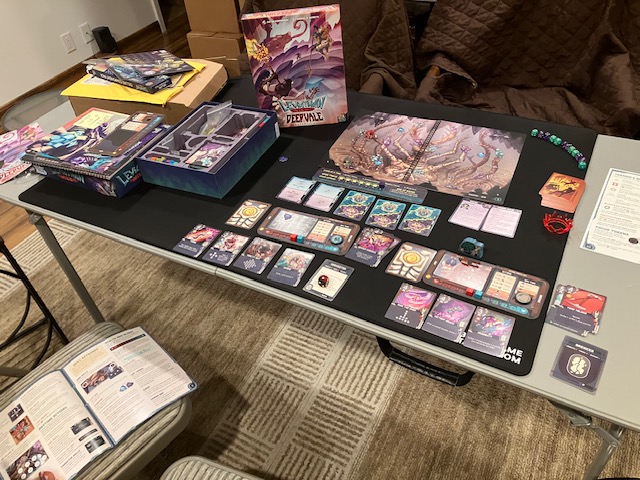
This is really just more stuff for Leviathan Wilds! Nothing groundbreaking! (Ha, pun intended). See our review of Leviathan Wilds: Deepvale Expansion to see if you might want to pick up this expansion!
5. Santorini: Riddle of the Sphinx
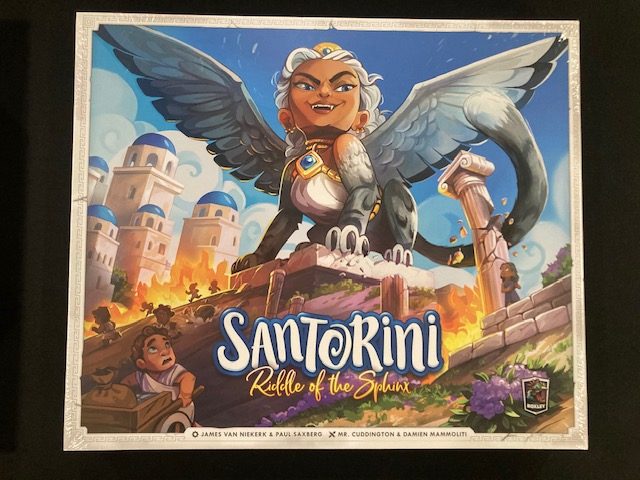
Expansion Type: Makes The Game Cooperative
Solo Mode: Yes
Requires Another Expansion? No
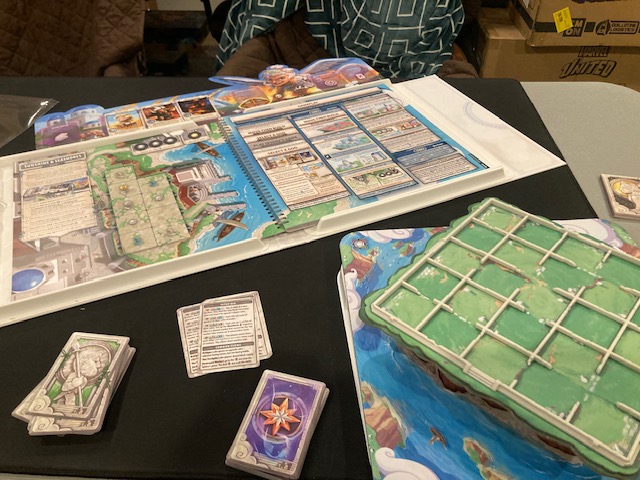
More than any expansion that came out this year, this expansion is a puzzle. It doesn’t even require THAT much from the base game Santorini; mostly just the building pieces and some minis! It’s also a very different kind of game than the original Santorini!
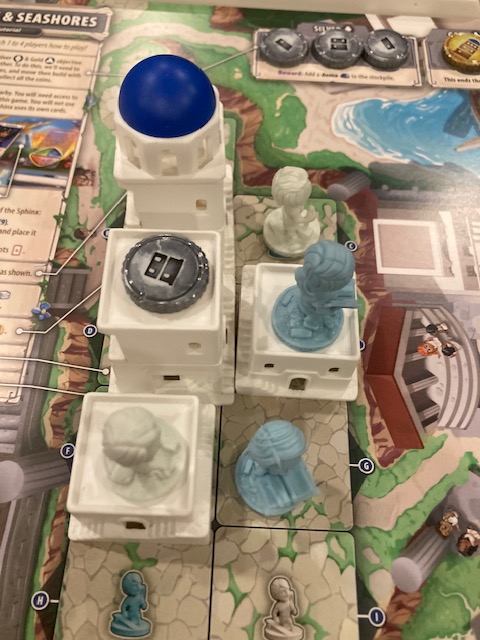
I played it both solo and cooperatively. It’s much easier to play this solo; each scenario is just a puzzle you are trying to solve! The puzzles are about placing city pieces out, using god powers, and trying to get more city pieces (as city pieces are scarce)!
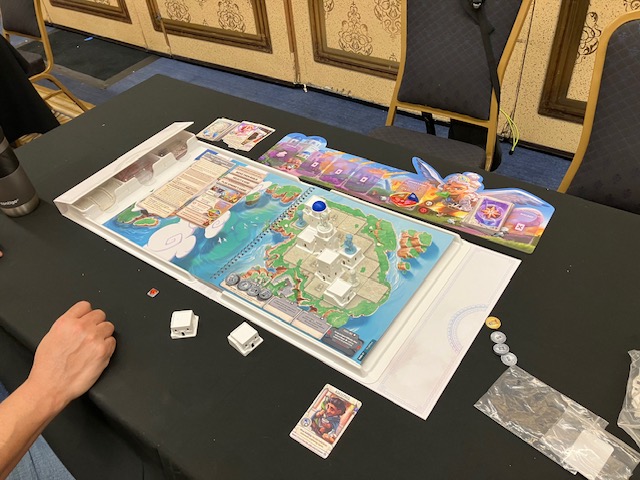
I was able to get some cooperative games played, and as long as everyone promises to NOT be an Alpha Player, they can work well! This expansion isn’t for everyone, as not everyone is going to like the very puzzly scenarios The Riddle of the Sphinx presents! But if a puzzle building game using the pieces of Santorini sounds fun to you, check out our review of Santorini: Riddle of the Sphinx to see if this might be an expansion you enjoy!
4. Unmatched Adventures: Teenage Mutant Ninja Turtles
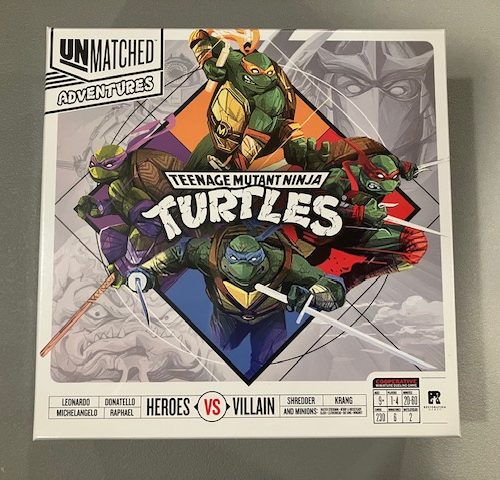
Expansion Type: Stand-Alone Expansion, Makes The Game Cooperative
Solo Mode: Yes
Requires Another Expansion? No, but you can play with any Unmatched set.
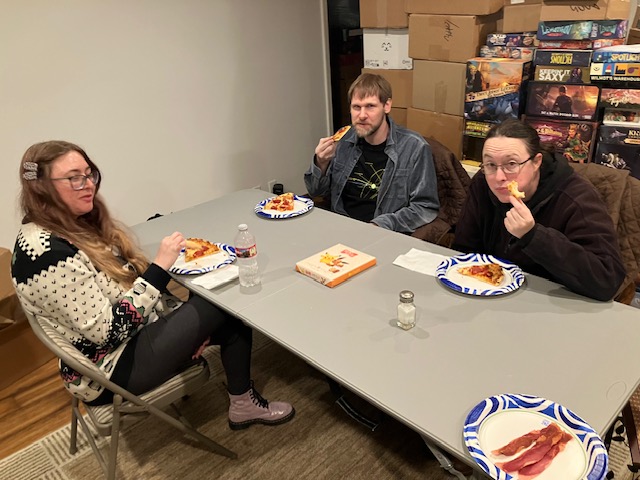
Of course, we had to eat pizza before we played Teenage Mutant Ninja Turtles: Unmatched Adventures.
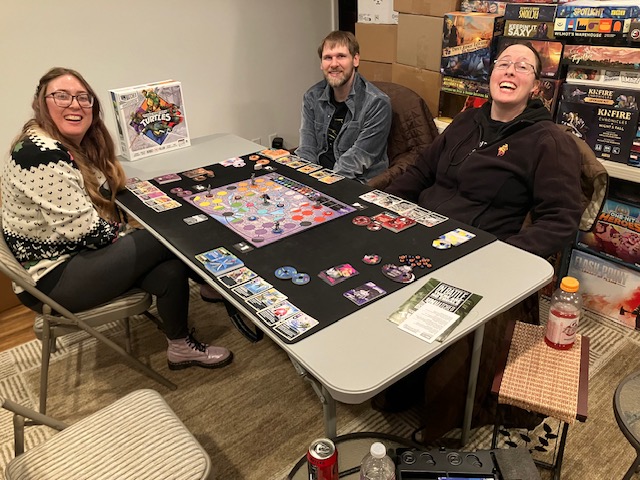
Our favorite part of this expansion is that it adds two more scenarios to the Unmatched Adventures system! Recall that we loved Unmatched Adventures (see review here), but our main complaint was that the box only came with two scenarios … now we have two more!

I am not personally a TMNT fan, but I really enjoyed the new heroes and villains. My friend Jon (above), who is a huge TMNT fan, really liked the game. I think knowing the IP might move this game to a 10/10 for some people: it really does capture a lot of TMNT feel (with the sewers being a fun way to travel around the city)! See our review here to see if this is something you might like!
3. Dice Throne Adventures: Unchained

Expansion Type: Makes The Game Cooperative, More Content
Solo Mode: Yes (true solo)
Requires Another Expansion? Yes: this is an expansion for Dice Throne Adventures (and I am also assuming you have one of the base Dice Throne character boxes)
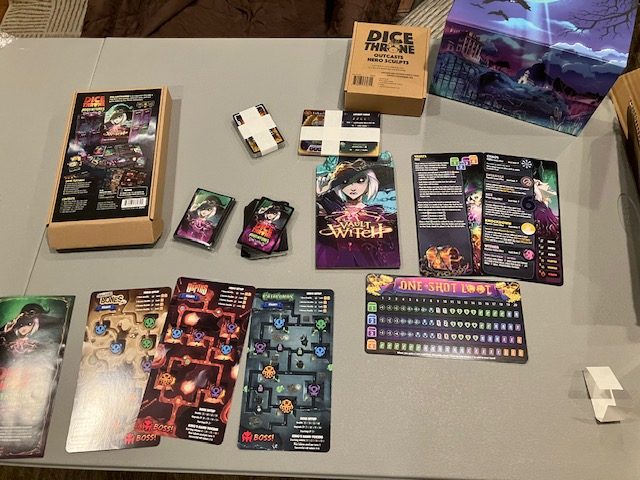
Firstly, this is an expansion that just adds more stuff: more Minions, more Loot, and another boss to fight in Dice Throne Adventures! And yes, this is an expansion to an expansion! The original Dice Throne Adventures (which Unchained expands) took the base Dice Throne game and made it solo and cooperative!
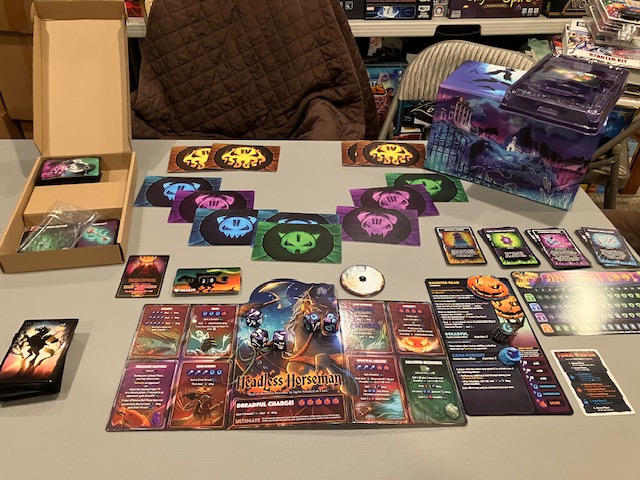
But this expansion fixes three major problems! Firstly, there we no solo one-shots in the original Dice Throne Adventures! Unchained allows the solo player to play a one-off little solo Adventure! Unchained adds the Minion Rush solo mode (see above), which allows the solo player to take a new character and try it out in a limited little adventure!

Secondly, Dice Throne Adventures had the problem that the adventure is way too long and too involved. Unchained fixes Dice Throne Adventures by adding a one-shot cooperative adventure, which is a condensed little Minion dash/Boss battle! There’s 6 new maps (see one above) that allow the cooperative players to go through a little adventure in one game session!
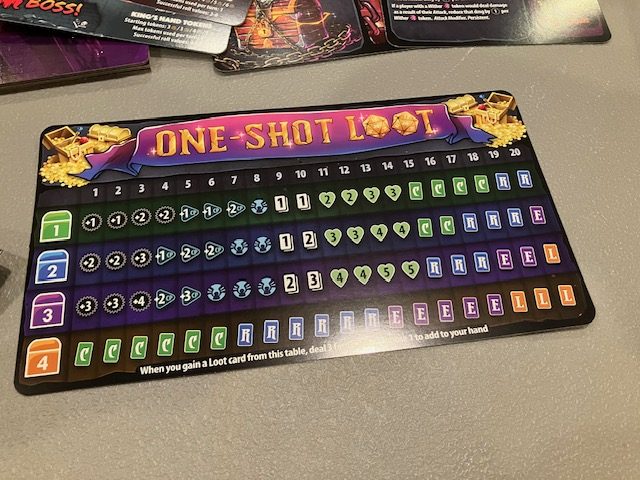
Finally, Unchained fixes the “slow upgrade” problem of Dice Throne Adventures! It seems to take forever to upgrade your cards in Dice Throne Adventures, but in the new Minion Rush and One-Shot Adventures, you get a new One-Shot Loot chart! See above! And this time, Loot goes directly into your hand, so you feel the effects of upgrading quickly!

Overall, I think Unchained is an essential upgrade for Dice Throne Adventures! See our review here to see if you agree!
2. Marvel Dice Throne Missions

Expansion Type: Makes The Game Cooperative
Solo Mode: Yes (true solo)
Requires Another Expansion? No (but I am assuming you have one of the base Dice Throne character boxes)


This expansion takes the base Dice Throne and adds two-sided Missions to the game. These missions are usually more exploration on first side (with mini fights against minions) and then fight the big bad boss on the other side (see Doctor Octopus). You can also choose to do longer campaigns with a notion of experience points to help you upgrade.

This game supports true solo so you can take your favorite Dice Throne character through as many missions as you want! You might have noticed that the Missions are VERY Marvel character specific (it is called Marvel Missions), but there’s no reason you couldn’t take any Dice Throne characters on these missions!
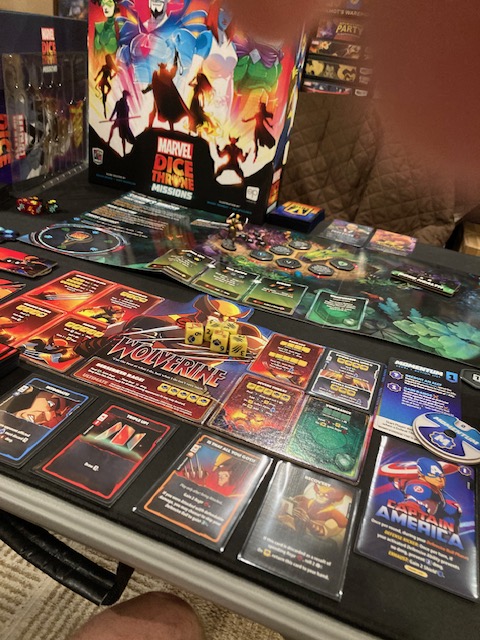
I enjoyed the heck out of this as a solo game (especially with Wolverine), but my friends bounced off the cooperative game! I think the mistake there was in NOT letting them try out their hero in a quick head-to-head mode; I think that would have made all the difference! See our review of Marvel Dice Throne Missions here! In the end, I personally loved it, so it had to made near the top of the list!!
1. Kinfire Council: Winds of Change
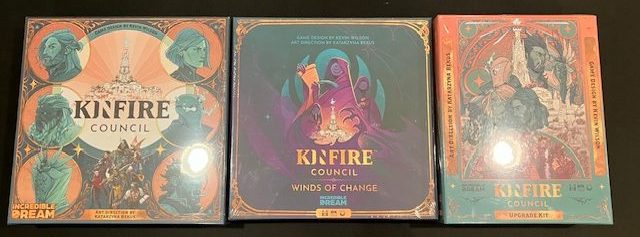
Expansion Type: Makes The Game Cooperative, More Content
Solo Mode: Yes (two-handed, with special rules*)
Requires Another Expansion? No (but you might want the Kinfire Council upgrade kit with wooden bits, see far right)

Kinfire Council is a pretty cool worker placement game … that I would never want to play in its original form. Wait, Why? It’s rife with back-stabbing, traitoring, and some indirect take-that! The Councilors may side with the city or may side with the Cult trying to take over the city! The base game is all about intrigue within the city! But, as part of the original Kickstarter, Kinfire Council also had the Winds of Change expansion which took out the base back-stabby/traitory traits, replacing them with both a solo and a cooperative mode!

With the Winds of Change expansion, players are city Councillors trying to stop the Cult from ruining their city! Along the way, they vote, upgrade spaces, upgrade workers, arrest cultists, stop threats, build a tower for inspiration, and so many other things! To be fair, the expansion doesn’t change the gameplay THAT much (there is a really neat base worker placement scheme here), but the cooperative mode made me and my friends feel that much more engaged! “This is our city, darn it! We’re not going to let the Cultists take over!! “
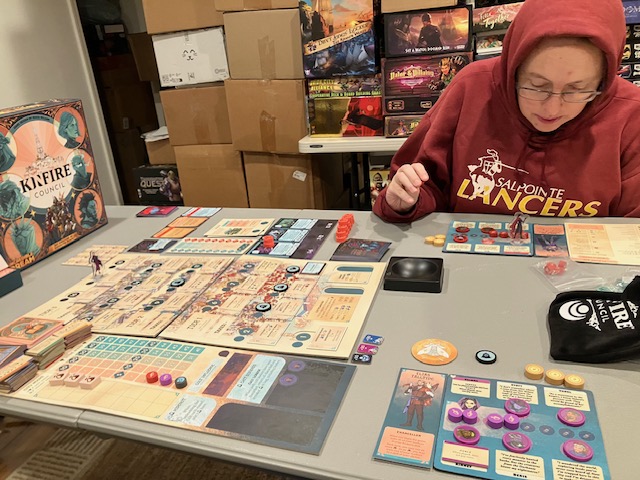
I was very surprised just how much I liked this game with the expansion! Me and all my friends all liked it too! We played over multiple game sessions over multiple game nights with multiple groups; it was so fun! We even added a little House Rule to make the game more fun, more cooperative, and more interactive! See our review of Kinfire Council + Winds of Change to see what our House Rule is, and if this is something you might like!
I am kind of surprised this made my #1 expansion! It’s gone up in my estimation every time I have played it! It’s just that … I want to play it more! I am so excited by this, I am going to go out of my way to teach it at Dice Tower West this March! We’ll be playing the cooperative version with my House Rules if you want to play! I just loved how interactive the cooperative version was!!



